
canvasandpaper.org may 9 – july 7
311 n. montgomery street thursday – sunday noon – 5 pm



canvasandpaper.org may 9 – july 7
311 n. montgomery street thursday – sunday noon – 5 pm








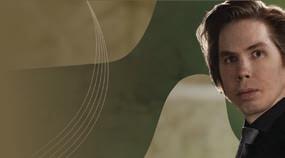





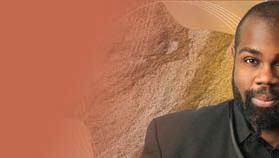


















































home for NPR and award-winning local news
Wake up and tune in to KCLU weekdays for Morning Edition. Get comprehensive global and national news from NPR and KCLU’s award-winning local news team.
Stay tuned from 9:00-10:00 a.m. for a well-rounded discussion of the day’s important issues with On Point. Visit kclu.org for complete program schedules.

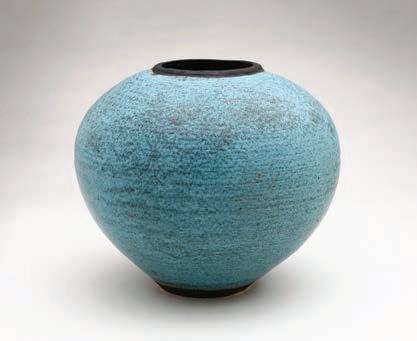
About the Cover:
Blue Glazed Stoneware Vase by Otto Heino (Image courtesy of John Moran Auctioneers, Monrovia, CA)
The distinguished American potters Otto (1915-2009) and Vivika Heino (1910-1995) moved to California in 1952 and eventually to Ojai in the early 1970s, where they bought the Lloyd Wright house originally designed for their great friend, the ceramicist and artist Beatrice Wood. The Heino studio was a much loved Ojai destination for a generation of artistic visitors.
Otto Heino was born in New Hampshire to a large immigrant Finnish family, first studying pottery with Vivika (whom he would soon marry) at the League of New Hampshire Arts and Crafts. He served in World War II as a gunner aboard a B-17. While in England, he met Bernard Leach, who introduced traditional Japanese techniques and designs to British pottery – an influence that can be seen in Otto and Vivika’s work. They have been recognized and honored as being among the most significant American potters of the 20th century, with their work exhibited at the Smithsonian Institution and the Los Angeles County Museum of Art among many other galleries and museums.
The couple worked so closely and inseparably in their work that the majority of their pieces are signed simply “Vivika + Otto,” regardless of who worked on each one. Poignantly, the work featured on our cover is signed simply “Otto” as it dates after Vivika’s passing in 1995.
oakgroveschool.org/silence
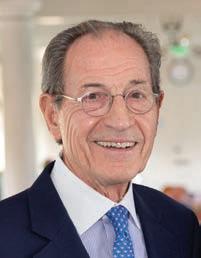
Welcome to the 78th Ojai Music Festival. Welcome back to our long-term supporters and patrons, and a special welcome to those attending for the first time. We are thrilled you are joining us with the incomparable Mitsuko Uchida as Music Director accompanied by the remarkable Mahler Chamber Orchestra. It will be an exciting musical journey.
We are grateful for your support. All of you; audience members, donors, artists, and volunteers make the festival possible. We are especially appreciative of the Ojai community for your gracious welcome and hospitality. Everyone is part of the warm and innovative atmosphere for which our Festival is celebrated. Thank you for being here and helping to sustain the festival’s future.
As evident from this year’s programming, the Ojai Music Festival continues to thrive artistically. Thanks to Ara Guzelimian’s leadership along with a devoted, professional staff and a dedicated Board of Directors, the Festival is financially sound. Together we are committed to ensuring the ability to serve you and the music that inspires us all.
This year I am delighted to announce that, in the fourth year of our Future Forward campaign, we have met 98% of our goal. We have just $60,000 left to raise. We are grateful to everyone who has contributed to the campaign.
We are asking for your help to close the gap. Please consider making a gift. The Festival offers enormous artistic and economic value to all of us. Our investment can ensure that the Ojai experience we all love can be sustained for future generations of musicians and audiences. Your support, at any level, will be greatly appreciated.
Enjoy the music, the company, and our priceless time together.

For more information on how you can have an impact, visit OjaiFestival.org/Support or visit our Future Forward Campaign Booth in Libbey Park.
BOARD OF DIRECTORS
JERRY EBERHARDT Chair
BARRY SANDERS Vice Chair - Governance
DON PATTISON Vice Chair - Development
CATHRYN KRAUSE Secretary
HOPE TSCHOPIK SCHNEIDER
Treasurer
MARGARET BATES, MD
JAMIE BENNETT
MICHELE BRUSTIN
NANCYBELL COE
LAUREL CRARY OFWC President
RUTH ELIEL
STEPHAN FARBER
FRED FISHER
GREG GRINNELL
LUTHER LUEDTKE
THOMAS MCNALLEY, MD
GLENN MERCER
NEIL SELMAN
MAURICE SINGER
BRIDGET TSAO BROCKMAN
Directors Emeritus
RICK GOULD, MD
JOAN KEMPER
STEPHEN J.M. MORRIS
ESTHER WACHTELL
ARA GUZELIMIAN
Artistic and Executive Director
BOARD OF GOVERNORS
KATE BARNHART
WILLIAM J. SHANBROM Co-Chairs
SASHA AND BILL ANAWALT
ANN BARRETT
BARBARA BARRY
MARJORIE BEALE AND WILLIAM MEYERHOFF
SUE BIENKOWSKI
MERRILL AND JUDY BLAU
EVELYN AND STEPHEN BLOCK
SUSAN BOWEY
BARBARA COHN
TOM AND LILY BROD
PAMELA BURTON AND RICHARD HERTZ
JILL COHEN
BARBARA DELAUNE WARREN
KATHLEEN AND JAMES DRUMMY
MICHAEL DUNN
WILLIAM DUXLER
CONSTANCE EATON AND WILLIAM HART
LISA FIELD
RUTH GILLILAND AND ARTHUR RIEMAN
ELIZABETH GREENBERG
LENORE S. AND BERNARD A. GREENBERG
CHRIS HACKER AND WILL THOMAS
LINDA JOYCE HODGE
JON AND MARY HOGEN
SCOTT JOHNSON
SUZY AND MOE KRABBE
LESLIE LASSITER
KATHY AND DAVID LEEDS
RAULEE MARCUS
SHARON MCNALLEY
PAMELA MELONE
CLAIRE AND DAVID OXTOBY
LINDA AND RON PHILLIPS
PETER SCHNEIDER
ABBY SHER
SHELLEY AND GREG SMITH
ANNE-MARIE SPATARU
JANE TAYLOR AND FREDERIC OHRINGER
GARY WASSERMAN
JANE AND RICHARD WEIRICK
SUSANNE WILSON
JOAN WYNN
CATHY ZOI AND ROBIN ROY
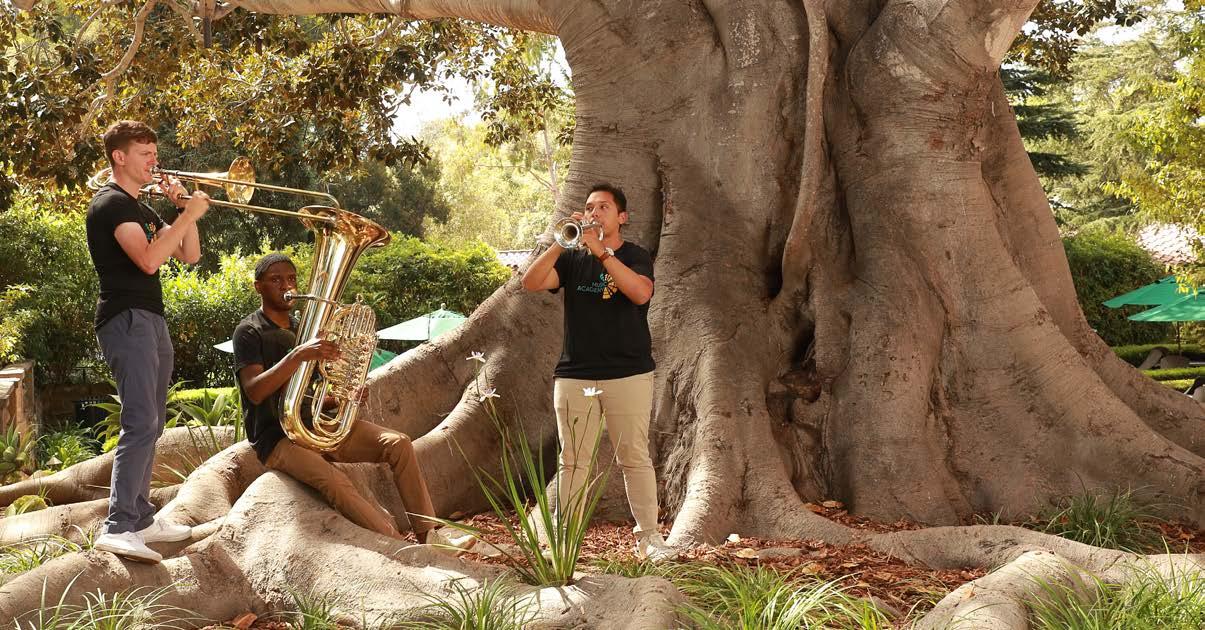
We invite you to immerse yourself in our 77 th Summer Music Festival in the wonderous setting of Santa Barbara. Be moved by 60+ powerful teaching artists and the rising talent of our 137 fellows. Delight in the artistry of our world-class musicians featuring 130 events including special performances by Joshua Bell , Timo Andres , Lawrence Brownlee , Conor Hanick , Jeremy Denk , Steven Isserlis , Leila Josefowicz , and the Takács Quartet .

Every time I return to this magical setting and gathering, I wonder anew at how improbable it all is. Take in the elements that make up this week – an astonishing gathering of great musicians, one of the most receptive and responsive audiences in the world, a small-town setting of great informality and beauty, and the sense of community that pervades it all. So, to begin, my heartfelt thanks to each of you, whether musician or audience member, first-time visitor or life-long devotee, local resident or traveler from far away. It is all of you who transform the improbable into something so tangible and treasurable.
It is particularly meaningful to welcome Mitsuko Uchida, one of the great musicians of our time, back to Ojai as this Festival’s Music Director. Mitsuko made a memorable first appearance here at the 1996 Festival, led by that year’s Music Director Pierre Boulez, and has returned twice since then. My admiration for her is boundless. She lives deeply in a profound commitment to the music she plays, whether old or new, revisiting the works which are closest to her with a constant sense of exploration and discovery.
A measure of that is the depth of her partnership with the Mahler Chamber Orchestra. They are in the midst of a five-year project centered on revisiting the Mozart piano concertos. There is a fitting spirit of collaboration and friendship in their work together, a chamber music-like bond that continues to deepen with each encounter. We also pay tribute to Mitsuko’s longstanding relationship with the Marlboro Festival in Vermont, where she has mentored a generation of young musicians that include several who are central to us in Ojai this year – Lucy Fitz Gibbon, Alexi Kenney, Jay Campbell and the members of the Brentano Quartet are all Marlboro alumni. Mitsuko has also personally invited numerous distinguished composers to be in residence during Marlboro and several of them are well represented at our Festival – Kaija Saariaho, Sofia Gubaidulina, György Kurtág, Helmut Lachenmann, and Jörg Widmann.
As always, we welcome back old friends – harpist Julie Smith Phillips, who played memorably in the John Adams-led 2021 Ojai Festival – and have the pleasure of discovering artists new to the Festival such as accordionist Ljubinka Kulisic and percussionist Sae Hashimoto.
It is always the interplay of the expected and unexpected, the old and the new, the known and the unknown which gives our Festival its character. We are very fortunate in the company we keep, beginning with each of you. Thank you for being here!

The position of Ara Guzelimian as Artistic and Executive Director is made possible by the generous support of Jill and Bill Shanbrom and the Shanbrom Family Foundation.


I am so delighted to be returning to Ojai, a place of happy memories and wonderful musical associations for me. My first visit took place in 1996, one of the hottest summers in memory and, yet, the concentration on stage and in the audience was complete, with the focus entirely on music. And I treasure every moment I spent with Pierre Boulez, the Music Director that year. I was also delighted to return a few years later in the company of David Zinman. The combination of deeply serious music-making amidst the natural beauty and informality of Ojai remains very special to me.
I am joined this year by my friends and colleagues of the Mahler Chamber Orchestra (MCO), with whom I have been working closely as an Artistic Partner for many years now. I saw an absolute potential in this group of musicians, an intensity of commitment that I felt immediately, and which has deepened over our many collaborations together. This intensity and love of music has been quite amazing in our work together. And, by now, we are a family. We have been exploring the rich world of the Mozart piano concertos together over the past five years with tours and projects throughout the world, with growing delight and understanding at each turn. The MCO musicians have their own special relationship with Ojai and have cherished their time here in the past, as Ojai fulfills every European’s dream of the ultimate California experience. I know they are thrilled to be back.
We will be joined by a group of guest artists whom I have come to know and admire through my work at the Marlboro Festival in Vermont each summer – soprano Lucy Fitz Gibbon, violinist Alexi Kenney, cellist Jay Campbell, and the Brentano String Quartet. Marlboro has as its central idea the luxury of time to explore music, most often in a combination of senior and junior artists that brings a unique meeting of perspectives. As a result, there is a freshness of ideas that confronts you, ideas that you had never thought of or perhaps had forgotten.
Similarly, the presence of a visiting composer at Marlboro has enlivened each summer with some of the most compelling musical thinkers of our time and they are represented in this year’s Ojai programs – Sofia Gubaidulina, Kaija Saariaho, György Kurtág, Jörg Widmann, and Helmut Lachenmann among them.
The consistent thread in all these experiences is the sense of discovery. As a musician, you discover something different, something new every day. That is the meaning of life. We are all so glad to be on this voyage of discovery with you in Ojai.
 MITSUKO UCHIDA
MITSUKO UCHIDA
The residence of Mitsuko Uchida as Music Director is made possible by the generous support of the Lenore S. and Bernard A. Greenberg Fund.
Mozart remains a constant in your repertoire. Some of the most poignant music ever written is by Mozart. Nobody else could write like him—it’s as if the notes just fell out of the sky into his lap. Mozart takes one note then spins it into another and then changes his mind – every note is like a child that you have to try and catch, which makes it so exciting as a performer.
One strong element of the Ojai Music Festival is the presence of musicians who share a history with you at the Marlboro Music Festival in Vermont, where you serve as co-artistic director.
I normally don’t take Marlboro music making out into the “real world.” The beauty of Vermont is too much a part of that experience—it’s not that the teacher teaches the student, but we instead share the music and explore it together, in this idyllic space. For me, that environment is one of the greatest attractions.
That has been one of the hallmarks of your career—pairing classical repertoire with works by contemporary composers like György Kurtág and Jörg Widmann.
It has been one of my greatest privileges. Life is about discovery, curiosity. Every piece of music to which you’ve introduced or thought you knew can always be a new discovery. And if you discover something different from what you’ve heard before, that is one of the gifts of live performance.
How would you summarize the Festival as well as your ongoing projects at Carnegie Hall and elsewhere?
Playing concerts is something extraordinary. On the concert stage, something happens because of the concentration of people around you. And you are sharing this music—not only with the other players, but with everyone in the space. All we can do is be honest enough to share this extraordinary thing and for the music to continue to thrive.
Adapted from the Carnegie Hall program book. Reprinted by kind permission by Carnegie Hall.


STEPHEN WAGNER
Investment Advisor, CFP®, CEPA® steve@iwaplan.com

LAINE MILLER
Investment Advisor, CFP® laine@iwaplan.com

DOUG ECKER
Investment Advisor & Financial Planner, CRPS® doug@iwaplan.com
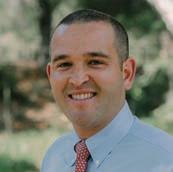
CHRIS WAGNER
Investment Advisor & Financial Planner chris@iwaplan.com

JESSAMYN LIM
Financial Paraplanner Qualified Professional jess@iwaplan.com
FULL-SERVICE LOCAL TEAM

MADISON WIGG
Financial Paraplanner Qualified Professional madison@iwaplan.com
Offices in Downtown Ventura and Ojai
VENTURA (805) 339-0760 ventura@iwaplan.com OJAI (805) 646-3729 ojai@iwaplan.com
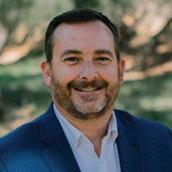
BOB CHEATHAM
Investment Advisor & Financial Planner, CRPS® bob@iwaplan.com

SHARON MEDINA
FPQP®, Ventura BranchOperations Manager sharon@iwaplan.com

CINDY RODARTE
Financial Paraplanner Qualified Professional cindy@iwaplan.com
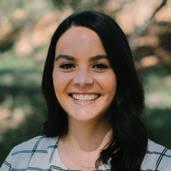
JESSICA HAWLEY
Client Services – Ventura Reception jessica@iwaplan.com
The entire Integrity Wealth Advisors team is committed to helping individuals, families, and businesses grow, preserve, and distribute wealth. We hold ourselves to the highest levels of integrity and accountability to ensure that we are doing our absolute best for each and every one of our clients.
An old adage states that ‘there is accomplishment through many advisors’ iwaplan.com



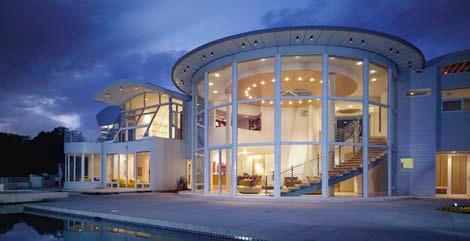


One of the most revered artists of our time, Mitsuko Uchida is known as a peerless interpreter of the works of Mozart, Schubert, Schumann and Beethoven, as well for being a devotee of the piano music of Alban Berg, Arnold Schoenberg, Anton Webern, and György Kurtág. She was Musical America’s Artist of the Year in 2022 and is a Carnegie Hall Perspectives artist across the 2022/3, 2023/4 and 2024/5 seasons. Her latest solo recording, of Beethoven’s Diabelli Variations, was released to critical acclaim in 2022, was nominated for a Grammy® Award, and won the 2022 Gramophone Piano Award.
She has enjoyed close relationships over many years with the world’s most renowned orchestras, including the Berlin Philharmonic, Royal Concertgebouw Orchestra, Bavarian Radio Symphony, London Symphony Orchestra, London Philharmonic Orchestra, and – in the US – the Chicago Symphony and The Cleveland Orchestra, with whom she recently celebrated her 100th performance at Severance Hall. Conductors with whom she has worked closely have included Bernard Haitink, Sir Simon Rattle, Riccardo Muti, Esa-Pekka Salonen, Vladimir Jurowski, Andris Nelsons, Gustavo Dudamel, and Mariss Jansons.
Since 2016, Mitsuko Uchida has been an Artistic Partner of the Mahler Chamber Orchestra, with whom she is currently engaged on a multi-season touring project in Europe, Japan and North America. She also appears regularly in recital in Vienna, Berlin, Paris, Amsterdam, London, New York and Tokyo, and is a frequent guest at the Salzburg Mozartwoche and Salzburg Festival.
Mitsuko Uchida records exclusively for Decca, and her multi-award-winning discography includes the complete Mozart and Schubert piano sonatas. She is the recipient of two Grammy® Awards – for Mozart Concertos with The Cleveland Orchestra, and for an album of lieder with Dorothea Röschmann – and her recording of the Schoenberg Piano Concerto with Pierre Boulez and the Cleveland Orchestra won the Gramophone Award for Best Concerto.
A founding member of the Borletti-Buitoni Trust and Director of Marlboro Music Festival, Mitsuko Uchida is a recipient of the Golden Mozart Medal from the Salzburg Mozarteum, and the Praemium Imperiale from the Japan Art Association. She has also been awarded the Gold Medal of the Royal Philharmonic Society and the Wigmore Hall Medal, and holds Honorary Degrees from the Universities of Oxford and Cambridge. In 2009 she was made a Dame Commander of the Order of the British Empire.
Mitsuko Uchida made her first Ojai Music Festival appearance in 1996 for the 50th Anniversary with Music Director Pierre Boulez and later returned as Co-Music Director in 1998. She also performed at the 2004 Ojai Music Festival.

This year marks the 100th anniversary of the birth of Ernest Fleischmann, Artistic Director of the Ojai Festival from 1998 – 2003 and a formidable figure in the musical life of Southern California for more than 40 years. Even before his time formally leading the Ojai Festival, Ernest was one of the Festival’s most loyal and invaluable friends.
Ernest was born in Germany, fleeing to South Africa with his family as a teenager. He received degrees in both music and accounting, backgrounds that served him well in his long, distinguished career. After early positions in Europe, he came to the U.S. to become Executive Director of the Los Angeles Philharmonic in 1969, holding that post until 1998. His legendary tenure saw countless major milestones – among them, the appointments of Carlo Maria Giulini, Esa-Pekka Salonen and Gustavo Dudamel, the creation of the Los Angeles Philharmonic New Music Group and the Green Umbrella series (named by Ernest in one of his more fanciful inventions!), a much expanded Hollywood Bowl series (including the eternally popular fireworks concerts) as well as the Disney family gift and the architecture competition which led to the building of Walt Disney Concert Hall.
He formed a close friendship with Lawrence Morton, the visionary Artistic Director most responsible for the innovative DNA of the Ojai Festival and remained a true ally to the Festival in all his LA Phil years, making certain that the planning of the orchestra’s season dovetailed perfectly into its availability for regular visits to Ojai – these led to milestone collaborations with Pierre Boulez at Ojai from 1984 to 2003.
It was fitting that his tenure as Artistic Director of the Ojai Festival itself became a capstone to his long career. During his time in Ojai, he created memorable Festivals with Music Directors such as Simon Rattle, Esa-Pekka Salonen, Pierre Boulez, and Mitsuko Uchida.
Many years ago, it was Ernest who took a leap of faith and offered me a position at the Los Angeles Philharmonic, which was to be my first experience in arts administration – a defining time for me. He was bold and fearless in championing innovation and fresh ideas, a role model to a generation of budding artistic leaders.
We remember him with admiration, fondness and gratitude.
—ARA GUZELIMIANPhoto above: Ernest Fleischmann with, from left to right, Thomas W. Morris, Pierre Boulez, and Ara Guzelimian at the 2003 Ojai Festival.



PRE-KINDERGARTEN-12TH GRADE | DAY & BOARDING FOR GRADES 3-12
Ojai Valley School offers a challenging curriculum with small classes led by supportive & dedicated teachers, a diverse student body, a vibrant visual & performing arts program, competitive athletics and equestrian programs, and numerous opportunities for hands-on learning through outdoor exploration & service.

Ojai Valley School is proud to support the 2024 Ojai Music Festival as a performance venue. LEARN MORE AT OVS.ORG





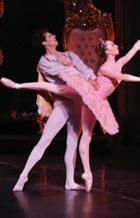
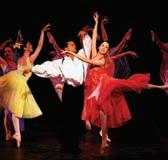

NOVEMBER 2 & 3, 2024


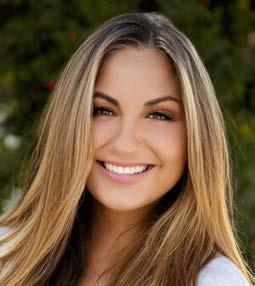

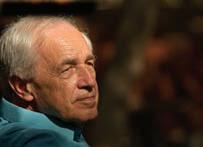


NAGANO STEPHEN MOSKO
LUKAS FOSS 1988 NICHOLAS MCGEGAN
SIR PETER MAXWELL DAVIES
DIANE WITTRY 1989 PIERRE BOULEZ
STEPHEN MOSKO
HARBISON
SIR PETER MAXWELL DAVIES
CRAFT
IGOR STRAVINSKY
AARON COPLAND, INGOLF DAHL
AARON COPLAND
CRAFT
HENRI TEMIANKA
FOSS
FOSS
FOSS
DAHL
DAHL
INGOLF DAHL
PIERRE BOULEZ
ROBERT LAMARCHINA
LAWRENCE FOSTER
MICHAEL TILSON THOMAS
MICHAEL ZEAROTT
STEFAN MINDE
MICHAEL TILSON THOMAS
PIERRE BOULEZ
GERHARD SAMUEL
MICHAEL ZEAROTT

MICHAEL TILSON THOMAS
MICHAEL TILSON THOMAS
TILSON THOMAS
COPLAND
TILSON THOMAS
SIMMONS
FOSS
FOSS
PIERRE BOULEZ 1993 JOHN ADAMS
MICHAEL TILSON THOMAS
KENT NAGANO
PIERRE BOULEZ 1997 EMANUEL AX, DANIEL HARDING
MITSUKO UCHIDA DAVID ZINMAN 1999 ESA-PEKKA SALONEN
SIR SIMON RATTLE
ESA-PEKKA SALONEN
EMERSON STRING QUARTET
PIERRE BOULEZ 2004 KENT NAGANO
OLIVER KNUSSEN
ROBERT SPANO 2007 PIERRE-LAURENT AIMARD
DAVID ROBERTSON
EIGHTH BLACKBIRD
GEORGE BENJAMIN
DAWN UPSHAW
OVE ANDSNES
MORRIS
JEREMY DENK
SCHICK
SELLARS
VIJAY IYER
PATRICIA KOPATCHINSKAJA
BARBARA HANNIGAN 2020 MATTHIAS PINTSCHER 2021 JOHN ADAMS
AMOC*
RHIANNON GIDDENS 2024 MITSUKO UCHIDA



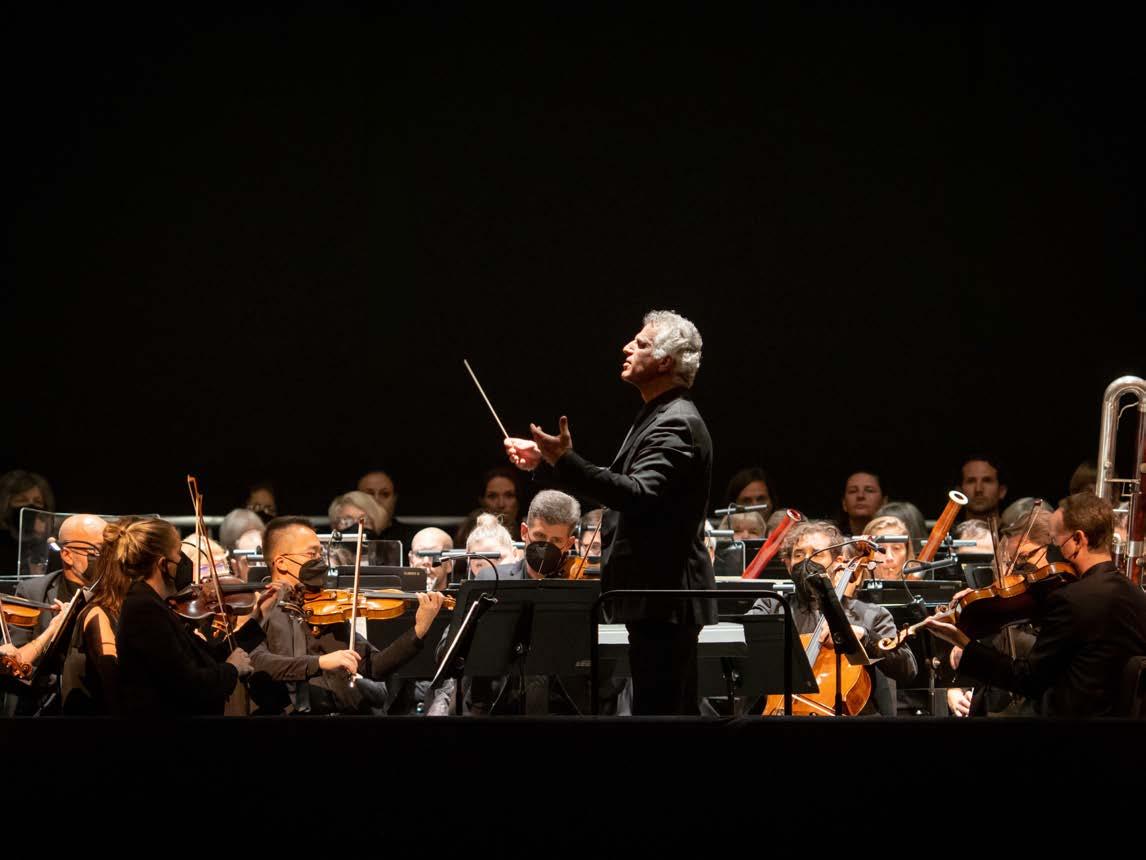
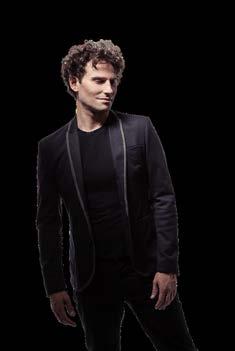

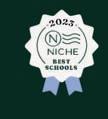

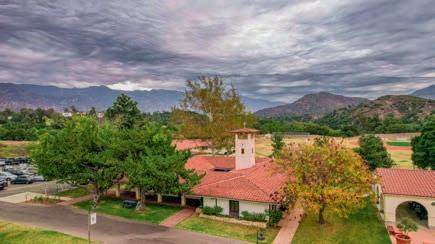





Returning to the Ojai Music Festival (OMF) is, for Mitsuko Uchida, an aesthetic homecoming. The qualities that characterize Ojai and its audience — an open-eared curiosity combined with intensity of concentration — also neatly describe what sets Uchida’s artistry apart. So, it’s not surprising that she asserts such a strong connection with the Festival, where she first appeared during the milestone 50th season in 1996, returning two years later for her first round as Music Director.
Uchida’s thoughtful programming, a mixture of familiar classical names with Modernist pioneers and contemporary composers, reflects a sensibility that values discovery in its deeper sense. Rather than a superficial peek into something unknown, discovery becomes a process of ongoing revelation and unsuspected connections.
Another way to think of this: For Uchida, all of the composers we will encounter during this 78th edition of OMF are contemporaries. They have been brought together to participate in a present-tense conversation — with each other, with herself and her fellow performers, and with you as the audience. Consider the example of Mozart. A central pillar of the pianist’s career, his piano concertos justify Uchida’s recurrent fascination precisely because she refuses to approach these works as “standard rep” — comfort food to trigger predictable reactions — but finds in them an inexhaustible, ever-renewable source of discovery.
Together with the Mahler Chamber Orchestra (MCO), Uchida embarked on a significant new chapter in her Mozart interpretations. She began collaborating with the ensemble as an Artistic Partner in 2016 and has been presenting a major cycle of the concertos since 2019. Uchida never tires of exploring how Mozart, with each new manifestation of the genre he essentially invented, discovers new potential within its framework.
The special advantage that her work with the MCO enables is to approach the piano concertos as chamber music. “It really is as if she were playing with each individual musician,” according to Maggie Coe, MCO’s
director of artistic planning. “The players feel very close to her musically, and she is very aware of the individual personalities as she interacts with each particular personality and way of playing.” In fact, Uchida’s double role of directing her fellow musicians from the keyboard (following Mozart’s own practice when performing his concertos) is referred to as leading or directing rather than conducting to emphasize that this is a first-among-equals scenario and without an intermediary filter.
This is in keeping with the origins and philosophy of the MCO itself. Founded in 1997 by Claudio Abbado, the ensemble has become celebrated for the chamber music–like vitality and interaction of its performance style. The musicians maintain Abbado’s emphasis on close listening to one another, which has strengthened their intense bond as a touring ensemble. “The fact that they have no fixed home base adds a dimension of intense collaboration and coherence, because it grows out of the musicians themselves,” notes Guzelimian. “Mitsuko and the MCO have lived with this music deeply for the last few years. So it has the benefit of this experience of digging deeper and probing for every imaginable dimension and perspective of these amazing concertos.”
The MCO’s trademark close listening will be on particularly thrilling display in their first evening concert, when they perform Schoenberg’s hyperkinetic Chamber Symphony No. 1 without conductor. To accomplish such a feat, says Guzelimian, “they really have to live in the piece and communicate with each other at an astonishing level.”
Uchida has long been intrigued by the connections between Viennese Classicism and the radical extension of musical language pursued by that reluctant revolutionary, Arnold Schoenberg, in the same city more than a century later. To challenge misunderstandings of Schoenberg as “cerebral” and off-puttingly abstract — which persist even now, 150 years after his birth — she has programmed three of the composer’s most intensely expressive works from his fervently creative period early in the century.
Schoenberg’s irrepressible appetite for discovery led him to seek out “air from another planet” — to quote the Stefan George poem he sets in the final movement of the pathbreaking work that the Brentano String Quartet performs on opening night. Uchida’s vision for the Festival weekend extends to the discoveries of entirely new sound worlds by several preeminent contemporary composers.
Characteristically, Uchida has developed a personal understanding of their distinctive musical perspectives through her interactions with their work as a performer and as co-artistic director of the Marlboro Music Festival in Vermont. Helmut Lachenmann, Jörg Widmann, György Kurtág, Sofia Gubaidulina, and the late Kaija Saariaho all spent memorable summers at Marlboro as composers-inresidence. Though each has developed a unique, utterly singular musical language, they share a seriousness of purpose and commitment to the necessity of their art that resonates profoundly with Uchida’s understanding of her own creative work. In the case of Gubaidulina, she even made a pilgrimage to the reclusive composer’s home outside Hamburg to persuade her in person to accept the invitation to come to Marlboro.
Another key aspect of Uchida’s musical life is her mentorship of several generations of younger artists who have been shaped by their time at Marlboro. Her programming reflects this through the selection of guest artists, who in turn have suggested music that has special significance for each: the Brentano Quartet, soprano Lucy Fitz Gibbon, violinist Alexi Kenney, and cellist Jay Campbell (an especially familiar face to Ojai audiences through his appearances here with the JACK Quartet and AMOC).
During one of his summers at Marlboro, for example, Campbell played Gubaidulina’s extraordinary early work In Croce for the composer herself. His partner for that program is the new music accordionist Ljubinka Kulisic, who has coached with Elsbeth Moser, the original arranger of the cello-accordion version of the score. Another key participant in this weekend is the Japanese-born percussionist Sae Hashimoto, who plays works by Saariaho
and Lachenmann which have become central to the percussion repertoire.
While the last three editions of the Festival have focused intensively on American music, this weekend’s spotlight is squarely on prominent European composers, with the exception of the Saturday morning program featuring musicians from the MCO and Kulisic. Their selection of pieces by John Adams, John Zorn, and Missy Mazzoli represents a European perspective on the American scene today. Kulisic will also play a Sunday morning concert exploring John Cage’s music for accordion, much of it from the late 1940s and ‘50s.
The chamber music–like communication central to Uchida’s rapport with the MCO has a corollary in the theme of friendship that is threaded across the programs. Mirroring the pianist’s friendships with the guest artists and contemporary composers she has chosen are the bonds that personally linked Mozart and Haydn — also key presences on the programs, both of whom grace the opening and closing concerts — as well as those between Schoenberg and his admiring student Anton Webern. Friendship, the intimacy of making music together, the shared pleasures of discovery — all of this takes center stage over the next few days, in true Ojai tradition.
Thomas May is a freelance writer, critic, educator, and translator whose work appears in an array of international publications, including the New York Times and Gramophone. The English-language editor for Lucerne Festival in Switzerland, he also writes for such institutions as the Hong Kong Arts Festival, Edinburgh Festival, Davos Festival, Metropolitan Opera, and The Juilliard School. He blogs at memeteria.com.




Open 7am- 9:30pm, 7 days a week Our bar opens at 11am daily Burmese- Californian Cuisine Resy.com, 805-640-7987, 457 E. Ojai Ave.




Sign up for our


Anna Thorvaldsdottir, composer
Seth Parker Woods and Katinka Kleijn, cellos
Cory Smythe, piano
Steven Schick, conductor and percussion

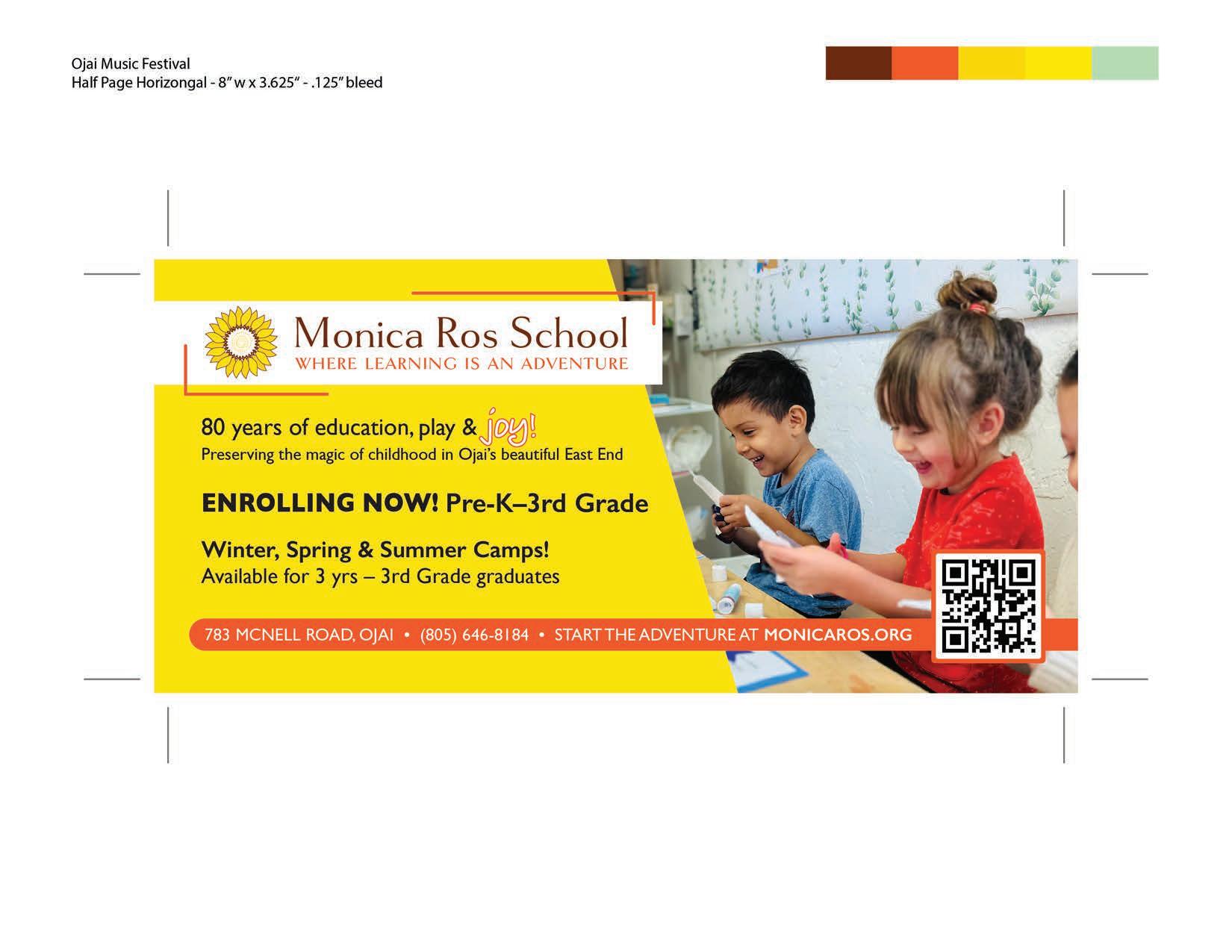




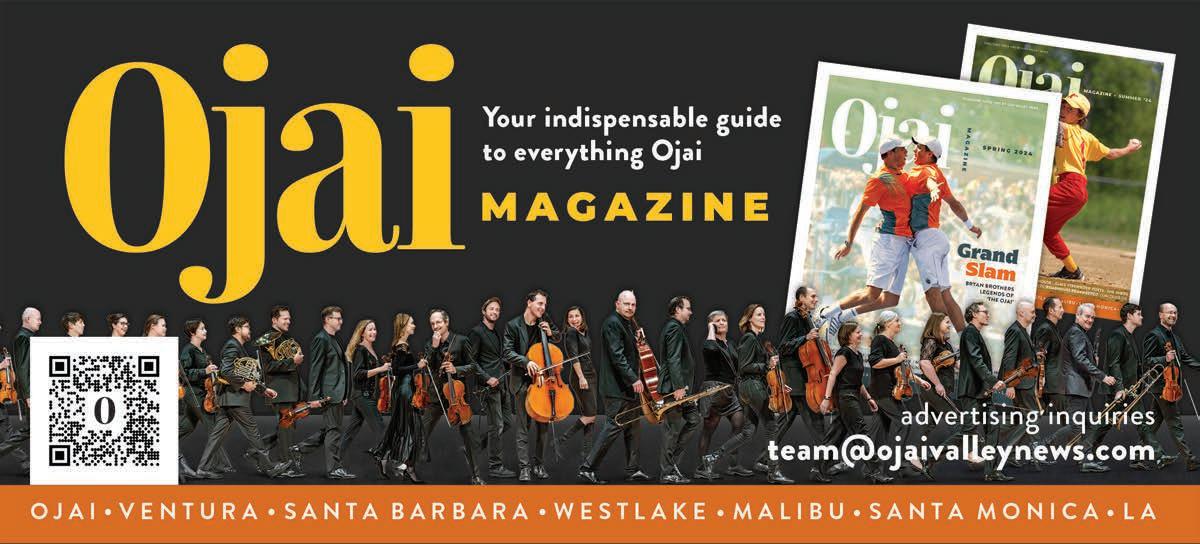





Learn about concert works from the composers! John Schaefer will host 30-minute chats throughout the weekend at the Libbey Park Gazebo. Look for the daily schedule of featured guests on our free Mobile App or on the program pages
GREEN ROOM IN THE PARK
An important part of the Festival is enjoying the wonderful setting of Libbey Park. Visit our special surroundings in the center of the park, meet up with friends, and enjoy drinks and small bites. Learn more about the Festival, our Future Forward Campaign, Ojai Festival Women’s Committtee, and our BRAVO education program. Be sure to visit Bart’s Books booth on the weekend. Plus, enjoy coffee at Pinholita Coffee Van, a battery-operated café on wheels!
FESTIVAL POP-UP BOUTIQUE
Take home something to help remember your Festival experience! Visit our pop-up market featuring 2024 Festival T-shirts, as well as essentials including hats, seat cushions, blankets, CDs, and more swag!
SUPPERS IN THE PARK
Enjoy a gourmet boxed dinner with wine provided by The Ojai Vineyard. Friday, June 7 with Catering Connection and Saturday, June 8 with Lorraine Lim Catering.
OJAI BEYOND
The Festival’s live online community continues to grow through our live stream broadcast. Since its inception in 2012, we have expanded Ojai’s global footprint, building vastly larger audiences and deepening relationships with patrons throughout the year. Please enjoy your favorite Festival concerts from this year and years past at OjaiFestival.org free of charge after the Festival.
STAY CONNECTED
Keep in touch with the latest news and updates both during and after the Festival.


AND SUBMIT FESTIVAL PHOTOS ojaifestivals #ojai2024 #ojaimusicfestival



Visit our mobile-friendly website on your device for the latest updates at OjaiFestival.org

Scan the QR code below to download our free OMF mobile app to view concert info, Festival venues, programs notes, health and safety updates, Explore Ojai, and digital content.

THURSDAY, JUNE 6
3:00PM Ojai Talks (Ojai Presbyterian Church)
8:00PM Opening Night (Libbey Bowl)
FRIDAY, JUNE 7
8:00AM Ojai Dawns (Zalk Theater, Besant Hill School)
10:00AM Morning Concert (Libbey Bowl)
11:30AM Ojai Chats (Libbey Park Gazebo)
3:30PM Shifting Ground (Greenberg Activity Center)
6:00PM Ojai Chats (Libbey Park Gazebo)
8:00PM Evening Concert (Libbey Bowl)
SATURDAY, JUNE 8
8:00AM Morning Meditation (Chaparral Auditorium)
10:00AM Morning Concert (Libbey Bowl)
11:30AM Ojai Chats (Libbey Park Gazebo)
3:30PM Shifting Ground (Greenberg Activity Center)
6:00PM Ojai Chats (Libbey Park Gazebo)
8:00PM Evening Concert (Libbey Bowl)
SUNDAY, JUNE 9
8:00AM Morning Meditation (Chaparral Auditorium)
10:00AM Morning Concert (Libbey Bowl)
11:30AM Ojai Chats (Libbey Park Gazebo)
2:30PM Kafka Fragments (Greenberg Activity Center)
4:00PM Community Concert (Libbey Park Gazebo)
5:30PM Festival Finale (Libbey Bowl)
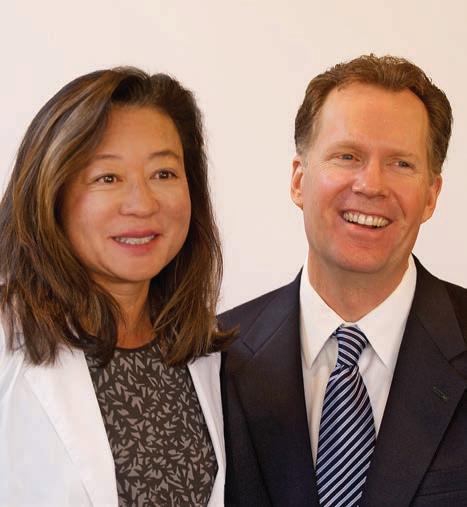


We specialize in the latest treatments for dry eye and computer eye fatigue. We also have state of the art technology to detect early macular degeneration, glaucoma and cataracts.
Come see our collection of sun, high fashion and sports eyewear!
1211 Maricopa Hwy, Suite 101, Ojai, CA 93023 | 805-646-5109
Topa Topa Optometry, Inc



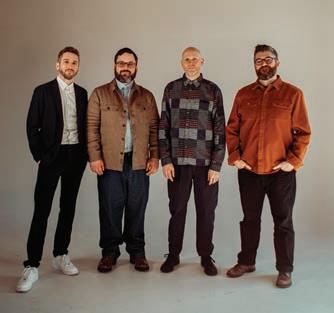
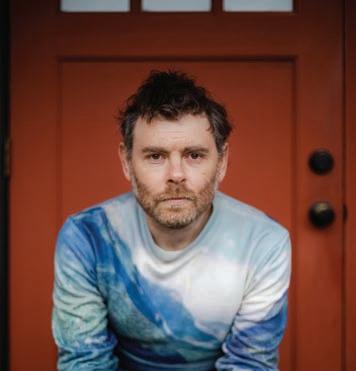

FEB 14 / 8PM
SHAW & FRIENDS
Kick off the Festival‘s opening with a concert featuring Caroline Shaw joined by a string quartet and chorus.
FEB 15 / 8PM
SHAW & SŌ PERCUSSION
Caroline Shaw and Sō Percussion dissolve the boundaries between classical and pop, drawing inspiration from sources as varied as James Joyce, ABBA, American roots music, and Christian hymns.
FEB 16 / 3PM
SHAW & GABRIEL KAHANE
Performing a new work inspired by Jorge Luis Borges’ story, “The Library of Babel,”Shaw and Kahane invite audiences to contemplate the joy, grief, wonder, and bewilderment that spring from life in a world oversaturated with information.
LONDON PHILHARMONIC WITH PATRICIA KOPATCHINSKAJA
CONRAD TAO
EMANUEL AX & ANTHONY MCGILL
LONDON SYMPHONY WITH YUNCHAN LIM
VIENNA PHILHARMONIC WITH YANNICK NÉZET-SÉGUIN AND MORE!
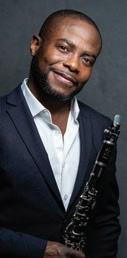
CONCERTS





MY CLIENTS SAY IT ALL:
“We had the best experience working with Sharon. When my husband and I decided to sell our home, we were overwhelmed by the process. But Sharon swooped in and made everything easy and seamless. We would work with Sharon again in a heartbeat.” - Gabriela London
“Sharon is personable and an absolute pleasure to deal with, and she’s a great advocate for your interests. A+ experience.” - Bob and Trish Moore
“Sharp, helpful, and friendly, Sharon is a pro with a deep knowledge of the market and a super helpful attitude.” - Chris Noxon
“Sharon was hands down the best agent I’ve ever worked with. You’ve got a great agent if you’re lucky enough to work with her.” - Leslie Rathe
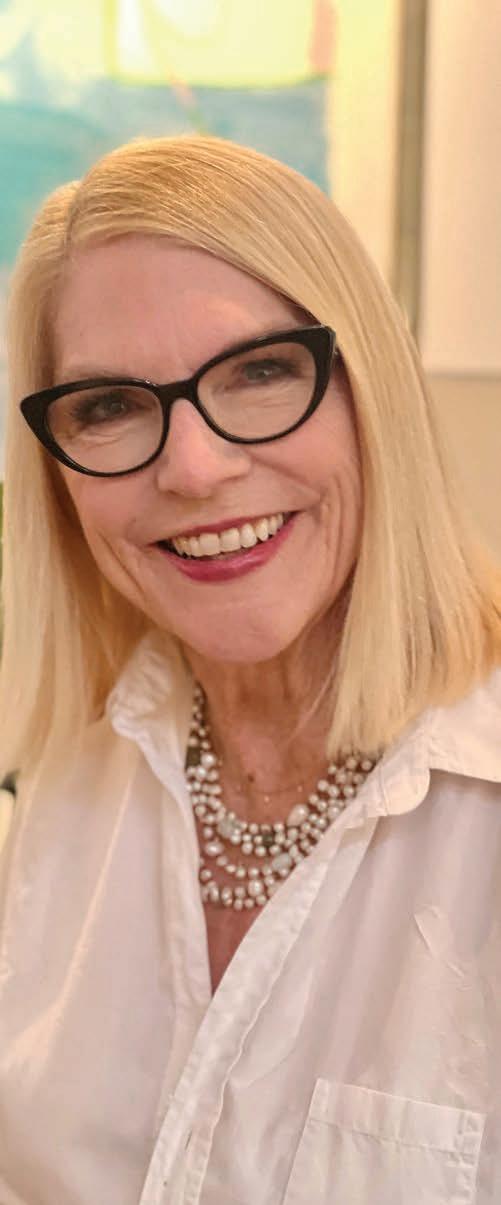

The Festival Box Office is in the center of Libbey Park, just North of the Tennis Courts. Our friendly staff and interns will be glad to help you with ticket purchases and questions, as well as ordering your 2025 Festival series passes. Assisted listening devices are available for checkout at the Box Office. Please bring a valid photo ID. If you cannot use your tickets, convert them to a tax-deductible contribution at least one day before the concert. Tickets received less than 24 hours in advance may still be converted. Stop by the Box Office or call our Ticket Donation Hotline at 805 646 2192.
HOURS OF OPERATION:
Thurs., June 6 12pm-9pm Fri., June 7 9am-1pm / 2:30pm-9pm Sat., June 8 9am-1pm / 2:30pm-9pm Sun., June 9 9am-1pm / 4pm-7pm
Performances start at the time designated on your ticket. In deference to the comfort and listening pleasure of the audience, late-arriving patrons will not be seated while music is being performed. Latecomers are asked to wait quietly in the designated areas until the first break in the program when ushers will assist them to their seats. Late seating breaks vary by concert and are at the discretion of the House Manager in consultation with the conductor and performing artists. Please note that select performances may not have late seating opportunities. Chimes will ring before the concert starts and before the end of intermission.
Please note: Artists and programs are subject to change without notice. In the event of a weather emergency, concerts may be canceled without ticket refunds.
Photography, audio recording, and videography are prohibited during Festival performances. We appreciate your cooperation in helping us create an environment for the artists that is not distracting.
As a courtesy to others, please turn off your phone, car alarm, and any other electronic device that makes noise or emits light before the start of Festival performances. Efforts to control paper rustling will be appreciated by both audience members and artists.
Due to City of Ojai’s policy, alcohol that is purchased at the Festival’s Green Room in the Park must be consumed in the designated restricted areas. Alcohol purchased at the Green Room will be permitted only in the lawn area of the Bowl. We appreciate that patrons do not bring beverages in the reserved seating sections of the Libbey Bowl. No food or drinks will be allowed in our off-campus venues. No outside alcohol may be brought into Festival concerts and events.
Both Libbey Park and Libbey Bowl are designated no-smoking zones (including vape pens, e-cigarettes) by the City of Ojai. The Festival’s office, donor lounge, off-campus events, and backstage are also non-smoking areas.
As a courtesy to other lawn patrons, blankets and low-rise chairs are preferred. Please bring low-rise, beach-style chairs with legs of 10 inches or less. Patrons with higher-rise chairs, such as camping or deck chairs, will be asked to move to the house right side of the lawn. Please do not leave valuable items in the lawn area and be sure to remove lawn chairs at the end of each Festival day. The Festival is not responsible for lost or damaged items.
If you lose or find an item, please check in with the Festival Box Office, just outside the entrance to Libbey Bowl.
The Festival provides and maintains portable restrooms which are located 50 yards east of the Box Office in Libbey Park.
Seating for patrons with wheelchairs is available in a reserved section of Libbey Bowl. Please contact the Box Office as early as possible for special seating requests. A handicapped parking lot is located on Signal Street for vehicles displaying a DMV handicapped parking hang tag or license plate. Early arrival is encouraged, as these spaces fill up. For patrons requiring a short walk into Libbey Bowl, a handicapped drop-off point is located near the backstage on Signal Street. Please notify the barricade attendant and they will direct you. There is also nearby parking for the drivers of those needing assistance. For listening devices, please visit the Box Office. Public restrooms at the east end of Libbey Park are wheelchair accessible. Please contact an usher if you need assistance.
Patrons with disabilities are welcome to bring service animals. Service animals, as defined under the Americans with Disabilities Act (ADA), are dogs that are individually trained to do work or perform tasks directly related to a person’s disability. The dog must be able to rest in the seat area of the individual with a disability, excluding aisles or walkways. Please note that any animal whose sole function is to provide comfort or emotional support does not qualify as a service animal under ADA regulations. We reserve the right to withhold or remove a service dog that fundamentally alters the nature of our programming by behaving in an unacceptable way during a performance, and/ or if the person with the disability does not or cannot control the animal. No other animals or pets are permitted at Festival concerts and events.
Emergency exits are clearly marked, please take note of your nearest one as you enter. In the event of an emergency, ushers and Festival staff will provide instructions. Contact an usher or member of the Festival staff if you require medical assistance.
We appreciate your cooperation in helping to clear the seating area after concerts. Be sure to take all lawn chairs and personal items with you when you leave the Bowl and please dispose your trash in the Festival recycle boxes.
The Festival strives to minimize its ecological footprint. We encourage you to do your share by separating your trash and using our recycle boxes provided by E.J. Harrison & Sons, and by using our complimentary water refill stations located throughout the Park and inside the Bowl. The same program book can be reused throughout the Festival and recycled at Festival’s end by dropping at the front gate.

There are a few banks within walking distance of Libbey Bowl: Pacific Western Bank (110 S. Ventura Street), Bank of America (205 W. Ojai Avenue) and Wells Fargo Bank (202 E. Matilija Street).
The Ojai Music Festival is committed to protecting and ensuring the health and safety of its staff, artists, volunteers, and the Ojai community. Your support and participation are greatly appreciated.
During the 2024 Festival, masks are optional but recommended for individuals who are at increased risk for severe disease. We will have hand sanitation supplies available throughout the Festival campus. Please stay at home if you have any symptoms of illness. These guidelines are subject to change based on the advice of public health officials and conditions at the time of the Festival. Keep informed with any updates on our free Mobile App.


To get alerts and notifications or to check out happenings around Ojai at local businesses, go on the Festival’s free Mobile App.

An important part of the Ojai Music Festival’s tradition is offering free events and musical surprises including pop-up performances during our four days together. Check the Festival’s free Mobile App for times and places!
THURSDAY, JUNE 6
6:30-7:00PM
FRIDAY, JUNE 7
11:30AM-12PM
6:00PM-6:30PM
SATURDAY, JUNE 8
8:00-8:30AM
11:30AM-12PM
6:00PM-6:30PM
SUNDAY, JUNE 9
8:00-8:30AM
11:30AM-12PM
3:00PM
4:00-5:00PM
Musical Pop-Up
Libbey Park Gazebo
Ojai Chats with Jay Campbell and host John Schaefer of WNYC/New Sounds
Libbey Park Gazebo
Ojai Chats with Alexi Kenney and Xuan and host John Schaefer of WNYC/New Sounds
Libbey Park Gazebo
Morning Meditation with Jay Campbell Chaparral Auditorium
Ojai Chats with Rick Stotjin and host John Schaefer of WNYC/New Sounds
Libbey Park Gazebo
Ojai Chats with Aliisa Neige Barrière and host John Schaefer of WNYC/New Soundsr
Libbey Park Gazebo
Morning Meditation with Ljubinka Kulisic Chaparral Auditorium
Music of John Cage
Cheap Imitation I and II (1969)
Dream (1948)
Souvenir (1948)
Ojai Chats with Ljubinka Kulisic and Sae Hashimoto and host John Schaefer of WNYC/New Sounds
Libbey Park Gazebo
BRAVO Instrument Petting Zoo
Libbey Park
Community Concert with MCO members
Libbey Park Gazebo
Thursday, June 6, 2024 | 3:00-5:00pm
Ojai Presbyterian Church
OJAI TALKS
PART I

Ojai Talks is made possible by the generous support of Drs. Bridget Tsao and Bruce Brockman
PART II
Music Director Mitsuko Uchida with Ara Guzelimian BREAK
2024 Featured Artists with host John Schaefer of WNYC/New Sounds

This concert is made possible with the generous support of Cathryn and Tom Krause
The concert appearance of Lucy Fitz Gibbon is made possible by the generous support of Hope Tschopik Schneider
The concert appearance of the Brentano String Quartet is made possible by Carolyn and Jamie Bennett
Thursday, June 6, 2024 | 8:00pm
Brentano String Quartet: Mark Steinberg and Serena Canin violins, Misha Amory viola, Nina Lee cello | Mitsuko Uchida piano | Lucy Fitz Gibbon soprano
Joseph HAYDN
String Quartet in C major, Op. 33, No. 3 (“Bird”)
I. Allegro moderato
II Scherzo: Allegretto
III. Adagio ma non troppo
IV. Finale: Rondo: Presto
Brentano String Quartet
Arnold SCHOENBERG Six Little Piano Pieces, Op. 19
I Leicht, zart (light, delicate)
II. Langsam (slow)
III. Sehr langsam (very slow)
IV Rasch, aber leicht (brisk, but light)
V. Etwas rasch (somewhat brisk)
VI Sehr langsam (very slow)
Mitsuko Uchida piano
INTERMISSION
Wolfgang Amadeus MOZART
Arnold SCHOENBERG
Fantasia in D minor, K. 397
Mitsuko Uchida piano
String Quartet No. 2 in F-sharp minor, Op. 10
I. Mässig (moderato)
II Sehr rasch (very fast)
III Litanei (“Litany”): Langsam (slow) (poetry of Stefan George)
IV. Entrückung (“Rapture”): Sehr langsam (very slow) (poetry of Stefan George)
Brentano String Quartet | Lucy Fitz Gibbon soprano
Joseph HAYDN (1732-1809)
String Quartet in C major, Op. 33, No. 3 (“Bird”) Hob. III:39 (1781)
Arnold SCHOENBERG (1874-1951)
Six Little Piano Pieces, Op. 19 (1911)
Wolfgang Amadeus MOZART (1756-91)
Fantasia in D minor, K. 397 (1782)
Arnold SCHOENBERG (1874-1951)
String Quartet No. 2 in F-sharp minor, Op. 10 (1907-08)
Only a little more than a century and a quarter separates the quartets by Haydn and Schoenberg that frame our opening program, and both works emerged from the same Austro-German tradition. Yet being able to hear, on the same program, the shift in what had been thought musically possible by the time we reach the final movement of the Schoenberg allows us to relive one of the most momentous turning points in the history of Western music.
Schoenberg’s Second Quartet embodies a musical Copernican Revolution in its quest for “the emancipation of the dissonance” — that is, the dissolution of the laws and conventions of tonal harmony that had served as the bedrock for that tradition. (The presence of a solo soprano alongside the classical quartet of string players is merely one aspect of the work’s innovations.) The fourth and final movement, in which this rupture dramatically occurs, represents a pivotal moment for the birth of the Modernist outlook.
Modernism’s unfolding — in particular, its embrace of the so-called atonality (never a very helpful word) that Schoenberg transformed into a lingua franca for 20th-century composers — would be
experienced by many as traumatic and destabilizing. Yet the composer described the introductory music to the Second Quartet’s notorious finale in terms of the poetic vision he chose to set: “becoming relieved from gravitation — passing through clouds into thinner and thinner air, forgetting all the troubles of life on earth …”
But Haydn, too, must be credited with radically changing perceptions of what the language of music can encompass. One of the leading architects of Classical style, Haydn depicted a stunning negation of the order on which it is based in the evocation of Chaos in his late masterwork
The Creation
The dichotomy becomes possible only through the deliberate subversion of tonal rules and the expectations established by Classical style. Haydn continually generates ideas from the tension between conventional patterns and his subtle ways of undermining them — the driving force of this composer’s much-lauded “wit.” With his tirelessly innovative output of string quartets and symphonies, Haydn developed genres principally meant for entertainment into vehicles for sophisticated contemplation (without ever losing sight of the former).
It was only with the Op. 33 set, written in 1781 — when he was approaching 50 — that Haydn actually began using the term string quartet (preferring the term divertimento prior to that). He announced that these quartets had been written “in a new and special way.” The nickname “Bird” refers to the imaginary evocation of avian chirping in the first movement, but we can also hear the wonderful opening of the C major Quartet as a teasing exploration of tonality that alternately seizes and lets go of the home key in surprising feints.
Mozart must have been especially enchanted by the contrast in mood between the Adagio’s intimacy and the unbuttoned comedy of the final movement. Haydn was one of the few living composers he deeply admired, and the two became friends after Mozart had settled in Vienna in 1781. Each welcomed the influence of the other.
The Fantasia in D minor dates from 1782, the same year Haydn’s Op. 33 quartets were published, but was likely left unfinished. Only after Mozart’s death was the manuscript published. For the missing measures at the end of the piece, Mitsuko Uchida supplies her own ending based on the opening. The Fantasia’s tempo changes several times, suggesting
CONTINUED }}
an improvisational attitude: At the heart is an aria-like Adagio of cutting pathos. The tonal shift to D major in the Allegretto conclusion has the effect not so much of a resolution of the grief preceding it as of a past joy recalled.
Uchida oscillates with ease between the idioms of the First and Second Viennese Schools. Just five minutes or so in duration, the Six Little Piano Pieces comprising Schoenberg’s Op. 19 can seem, in her hands, to “anticipate” the variability of Mozart’s Fantasia. These hermetic, freely atonal miniatures dating from early 1911 — the first five were composed in a single day — condense implicitly longer forms (such as an entire aria in No. 5) into aphorisms. Schoenberg’s later systematic codification of his ideas led to the charge that it is overly “cerebral,” but this music vibrates with emotional intensity and expression — above all in the last piece, No. 6, written independently in 1911 in response to the death of his admired Mahler.
Turmoil in Schoenberg’s personal life is inseparable from the composition of the epochal Second Quartet. He started writing it in 1907, when he was experiencing marital strain with his first wife, Mathilde, along with a kind of separation anxiety over the departure of his champion Mahler for the New World. The strain worsened, and Mathilde left her
husband in 1908 to pursue a relationship with the Expressionist painter Richard Gerstl. After Schoenberg persuaded Mathilde to return, Gerstl committed suicide. The painter’s boldly original work, meanwhile, left a strong mark on the composer.
Ironically, Schoenberg seems on one level to be moving into a more Classical direction in this score. While his First String Quartet is cast in a large-scale single movement, the Second is a shorter composition that reverts to the familiar four-movement design, the first three of which adhere to the paradigm of a sonata form first movement, a scherzo, and a slow movement. The final movement, the longest, omits a key signature (though Schoenberg set the others in F-sharp minor, D minor, and E-flat minor, respectively).
Schoenberg’s sardonic humor emerges in the scherzo, whose middle section quotes the Viennese folk song “O du lieber Augustin.” Originating in the plague years, the song’s phrase “alles ist hin!” (“It’s all over!”) might serve as an epigram for this turning point in musical and cultural history.
In his Transfigured Night of 1899 — another piece informed by his relationship with Mathilde — Schoenberg had combined poetic inspiration with
string chamber music. But he actually incorporates texts by the German Symbolist poet Stefan George (18681933) into the last two movements of the Second Quartet. Adding a soprano was all the more provocative, since the string quartet was understood as the quintessentially instrumental form of discourse. More than Beethoven in the Ninth, Mahler’s song movements in the Wunderhorn symphonies would seem to be the pertinent model for Schoenberg.
The slow Litany movement unfolds as a set of variations — not on a theme per se, but on fragments and themes derived from the opening movement and the scherzo. George’s text expresses a mood of gloom, grief, and longing that casts a retrospective light on the preceding movements. Entrückung (“Rapture”), the text used in the finale, opens with the line Ich fühle luft von anderem planeten (“I feel air from another planet”).
Conventional tonality is affirmed by the “gravitational” pull of the tonic, but in the brave new world into which Schoenberg ventures here, the loss of that compass triggers an exhilarating sense of weightlessness. Even with the return to F-sharp major at the conclusion, the sensation of a radiantly floating vision of a new reality lingers.
—THOMAS MAY
FLAMENCO ARTS FESTIVAL USA presents, direct from Spain, Mercedes de Córdoba and company in the West Coast Premiere of Ser...Ni Conmigo Ni Sin Mí, with a pre-concert reception and after party to celebrate!
For tickets visit LOBERO.ORG or scan the QR code







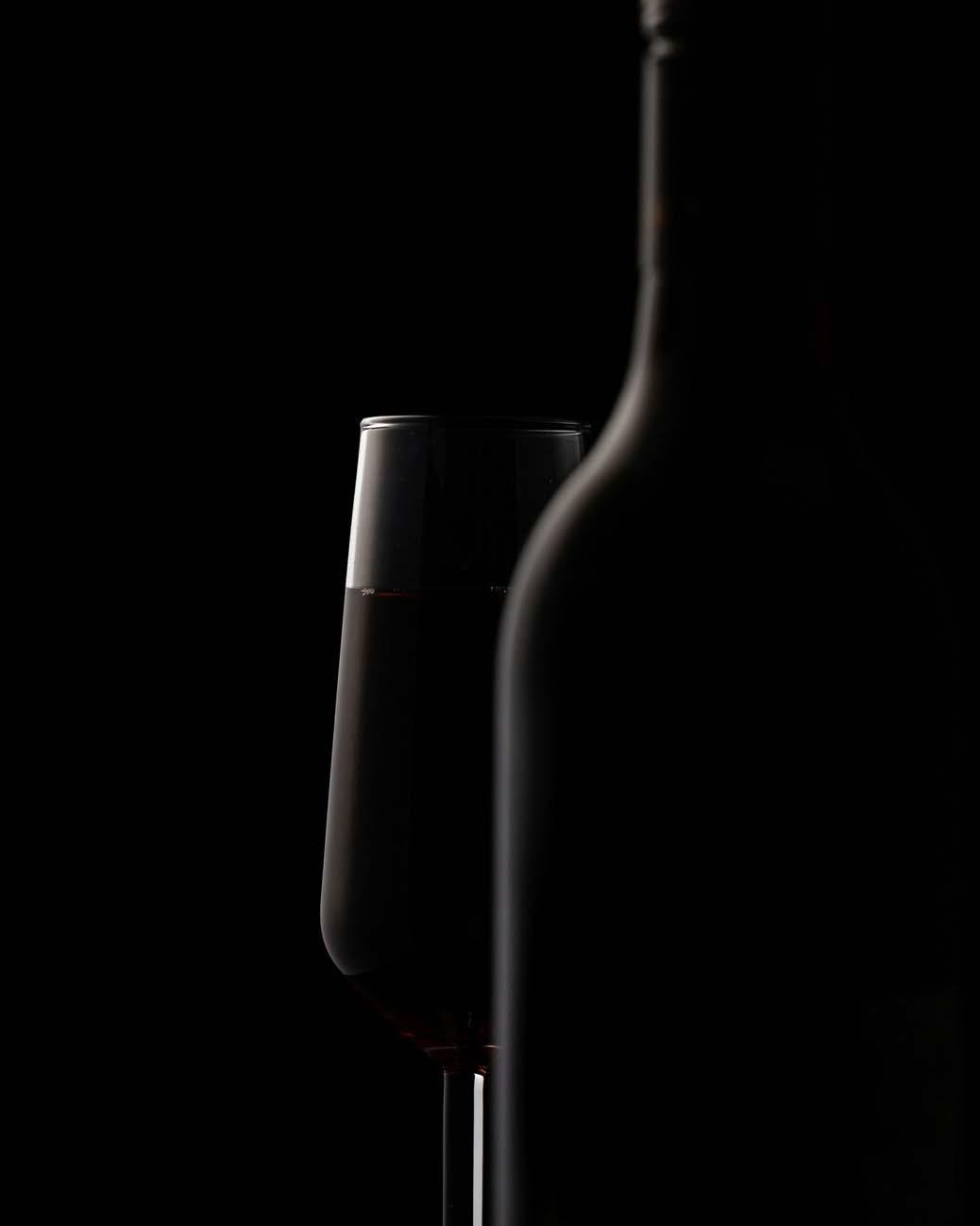


This concert is made possible with the generous support of Don Pattison
The concert appearance of Jay Campbell is made possible by the generous support of Abby Sher
The concert appearance of Sae Hashimoto is made possible by Ruth Eliel and Bill Cooney
The concert appearance of Ljubinka Kulisic is made possible by Claire and David Oxtoby
There is no intermission during the concert
Friday, June 7, 2024 | 8:00am
OJAI DAWNS
Jay Campbell cello | Sae Hashimoto percussion | Ljubinka Kulisic accordion
Giuseppe COLOMBI Ciaccona
Jay Campbell cello
Kaija SAARIAHO Dreaming Chaconne
Jay Campbell cello
Helmut LACHENMANN Intérieur I
Sae Hashimoto percussion
Helmut LACHENMANN Toccatina
Jay Campbell cello
Sofia GUBAIDULINA In Croce
Jay Campbell cello | Ljubinka Kulisic accordion
ZALK THEATER, BESANT HILL SCHOOL
8585 OJAI SANTA PAULA ROAD
Giuseppe COLOMBI (1635-94)
Ciaccona (date unknown)
Kaija SAARIAHO (1952-2023)
Dreaming Chaconne (2010)
Helmut LACHENMANN (b. 1935)
Intérieur I (1965-66)
Toccatina (1986), arranged for cello by Jay Campbell
Sofia GUBAIDULINA (b. 1931)
In Croce (1979), arranged for accordion and cello in 1991 by Elsbeth Moser
Last night’s opening concert invited questions about what it means to evolve and innovate within a shared language — the system of Western tonality as shaped and challenged by Haydn, Mozart, and Schoenberg. We continue this morning with a trio of contemporary composers who interrogate our assumptions about instruments themselves and the kinds of sounds they produce.
We open the program with Kaija Saariaho’s Dreaming Chaconne, her contribution to a project she helped to organize to celebrate the 50th birthday of her compatriot, the Finnish cellist Anssi Karttunen. A total of 31 composers from 12 countries were invited to create a variation on one of the earliest pieces known to be written for solo cello: a chaconne by the Italian composer Giuseppe Colombi (1635-94) for an earlier and larger form of the cello called a basso (which Jay Campbell plays as a prelude to Saariaho’s variation). None of the composers was aware of which colleagues had also been invited to participate — hence the title Mystery Variations for the overall project.
Saariaho’s fabric of slow trills between stopped notes and natural harmonics, feathery slides, and tremolos forms a
sonic veil behind which the shape of Colombi’s chaconne remains only as a spectral memory.
The eminent German composer Helmut Lachenmann, who was invited by Mitsuko Uchida to a residency at the Marlboro Music School and Festival last year, has for decades pursued his fascination with what he terms the “anatomy” of sound and its production. Intérieur I is a breakthrough work from the mid-1960s that embodies Lachenmann’s radically new focus on composition as the production of sounds and the conditions under which this occurs. Percussion instruments had been a kind of last timbral frontier for Modernism. But Lachenmann’s approach defamiliarizes the musician’s and audience’s relationship with the panoply of largely untuned percussion instruments.
Various types of drumsticks, mallets, even the player’s hands are not used in the expected ways but produce odd rubbings and ghostly tremolos: a kind of music “in which the sound events are chosen and organized so that the manner in which they are generated is at least as important as the resultant acoustic qualities themselves,” as the composer described his concept of instrumental musique concrète
The mindfulness Lachenmann demands is immediately apparent in the briefer and later Toccatina, originally written for solo violin but performed here in Jay Campbell’s arrangement for cello. Referring to the classical toccata, the title plays on the idea of instrumental virtuosity through dexterous touching and fingering of the instrument. (The Italian root toccare, “to touch,” itself draws attention to the physical production of sound.)
Lachenmann adapts percussive effects in mesmerizing ways, asking the player to tap the metal screw of the vertically held bow onto the instrument’s strings (and even includes an extra clef detailing the positions of these contact points). Campbell likens performing Toccatina to undertaking “a very intense tightrope walk. The sound is so tiny and fragile. It’s very playful — and dangerous.”
Sofia Gubaidulina came of age as an outsider in the Soviet Union — an artist of half-Russian, half-Tatar origins — which encouraged her openness to exploring unconventional sonorities. Many of her compositions reconsider the raw material — the physical manifestations — of musical facts: pulses, breaths, tunings. At the same time, Gubaidulina’s Russian Orthodox faith has inspired her to
CONTINUED }}
interpret these “facts” in spiritual and even mystical terms.
In Croce incorporates the Christian symbol indicated by the title (“On the Cross”) into the music itself through a series of literal and figurative “crossings” of register and texture between the instruments: cello and organ in the original version of 1979 and cello and bayan (Russian button accordion) in the later arrangement we hear. But the surface plan of this drama is not as schematic as a simple summary might indicate.
Gubaidulina encourages a suspension of our sense of ordinary time as we enter this labyrinth of fluctuating intensities.
Gubaidulina extracts a remarkable variety of colors from the unusual pairing of instruments, stretching each to its limits. The bayan begins in a lofty, diatonic A major space, while the cello emerges from the depths on a low E, striving to break free with anguished chromatic slides. They gradually exchange positions, reaching a climax where the two lines cross. The piece ends with the cello sounding almost flute-like in its otherworldly high perch against the deep rumbling of the bayan far below — where the cello, in a final gesture, again meets its counterpart via a descending glissando.
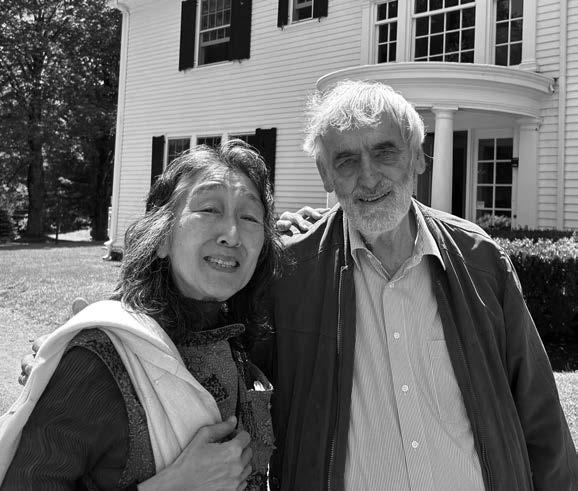
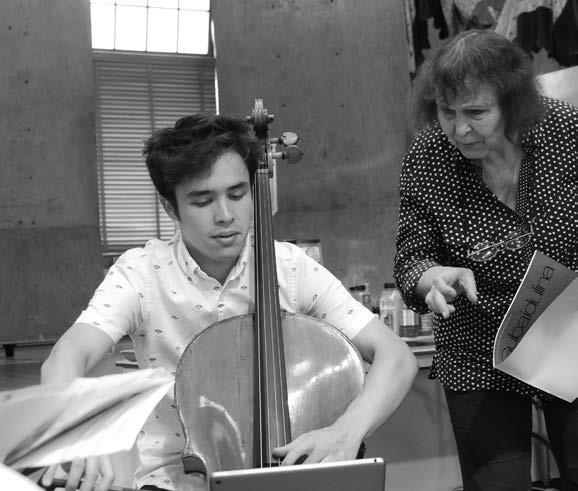
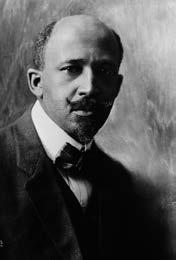
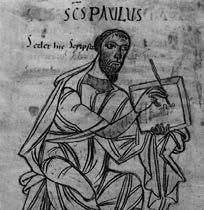




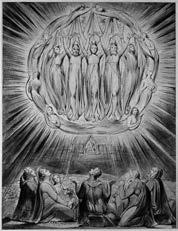
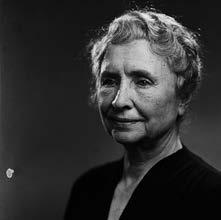
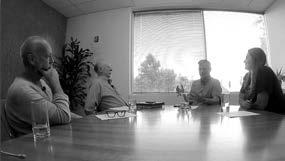

This concert is made possible with the generous support of Carol and Luther Luedtke
OJAI CHATS at Libbey Park Gazebo, 11:30am: Jay Campbell
There is no intermission during the concert
Friday, June 7, 2024 | 10:00am
Julie Smith Phillips harp | Jay Campbell cello | Sae Hashimoto percussion | Rick Stotijn double bass
Brentano String Quartet: Mark Steinberg and Serena Canin violins, Misha Amory viola, Nina Lee cello
Kaija SAARIAHO Fall
Julie Smith Phillips harp
Helmut LACHENMANN Pression
Jay Campbell cello
Sofia GUBAIDULINA Five Etudes
I. Largo
II. Allegretto
III Adagio
IV. Allegro disparato
V Andante
Julie Smith Phillips harp | Sae Hashimoto percussion
Rick Stotijn double bass
Béla BARTÓK String Quartet No. 5
I. Allegro
II Adagio molto
III. Scherzo: alla bulgarese
IV Andante
V Finale: Allegro vivace
Brentano String Quartet
Kaija SAARIAHO (1952-2023) Fall (1991)
Helmut LACHENMANN (b. 1935)
Pression (1969-1970)
Sofia GUBAIDULINA (b. 1931)
Five Etudes (1965)
Béla BARTÓK (1881-1945)
String Quartet No. 5 (1934)
Over the past decade, Mitsuko Uchida has invited three of the four composers on this morning’s program to participate in the composer residency program at the Marlboro Music Festival — artists she admires as “some of the most compelling musical thinkers of our time.” (Music by two other former composers-in-residence — György Kurtág and Jörg Widmann — can also be heard on Sunday’s programs.)
The late Kaija Saariaho in fact returned to collaborate with the Marlboro musicians over two back-to-back summers in 2014-15. Fall is an arresting example of Saariaho’s ability to convey an assemblage of freely associated images through the interchange of acoustic and electronic sounds and a poetics of timbre. Scored for solo harp and electronics, Fall is the second-to-last section of her ballet score Maa (Finnish for “land,” “earth,” “world”).
In lieu of a plotted scenario, Maa explores themes of “passing from one state to another; opening doors, gates, falling, crossing the Water,” the composer writes. Fall in particular evokes “an idea about falling into an underworld.” It traces an arc that begins in the harp’s highest register, where the soloist is instructed to play “sorrowfully, always with expression,” and culminates in a violently downwardsweeping glissando.
What associations do we bring to each instrument, even before a note emerges?
In his pivotal early piece Pression for solo cello, the German composer Helmut Lachenmann challenges us to radically rethink what the cello represents — and, in the process, aims to provoke us out of complacent “habits” in approaching the phenomenon of a performance. Lachenmann uncovers “such a subtle spectrum of pitch to noise that, by the end of the piece, you start hearing noises in interesting new ways,” cellist Jay Campbell points out. “When I play it, I feel like I’m discovering the cello again.”
Pression intensifies our focus on the physicality of the cello and of the musician’s relationship with this body of wood and tense strings stretched over a bridge, of finger flesh versus bow wood and hair. Only at the center of the piece is a “normal” note produced in the expected way. Even the score is unconventional — not the code for an already finished composition but a graphical prescription illustrating what actions the cellist is to take.
Sofia Gubaidulina is similarly represented by an important early work. In fact, she has characterized Five Etudes for harp, double bass, and percussion from 1965 as the work in which she first found
her distinctive voice. Born in the great crossroads city of Kazan on the Volga River in the Tatar Republic, she came of age in the Soviet Union and took to heart the words of advice she received from Dmitri Shostakovich, who led her examination committee when she graduated from the Moscow Conservatory in 1959: “Don’t be afraid to be yourself. My wish for you is that you should continue on your own, incorrect path.”
Gubaidulina’s originality in Five Etudes is apparent in both the formal design and the unusual soundscape. Instead of a traditional genre — she has no interest in the gradual improvement of technique suggested by the conventional etude — the work comprises five miniatures in different tempos. With her configuration of harp, double bass, and tuned and untuned percussion, Gubaidulina constructs an intriguing variety of sonic pictures framed by mysterious double bass pizzicati that seem to emerge from deep in the earth. She evokes the energy of improvised jazz (second piece) and of a manic scherzo (in the fourth piece, a “desperate Allegro”), while the central Adagio brings to mind an archaic ritual or elegy, eventually merging with silence. “From this moment, I realized that I would pay no attention at all to anybody else,” Gubaidulina remarked of Five Etudes. “I would do as I liked.”
The interest in the materiality of instruments and their sonorities manifested by the first three works on our program is mirrored by the string quartets of Béla Bartók. His six contributions to the genre span three decades, mapping the Hungarian composer’s development as an artist. They form a cycle that is regularly compared to Beethoven’s quartets, a pinnacle of formal, expressive, and technical innovation.
The tactile energy of the “Bartók” or “snap” pizzicato — in which the string(s) is plucked vertically and released so powerfully that it rebounds against the fingerboard — is a well-known example of the palette of “special effects,” along with exaggerated sliding, playing with the wood of the bow, raspy scratching at the bridge, and other techniques that are integrated into the language of the quartets. Bartók’s tireless research into Eastern European and North African folk music informs myriad aspects of the quartets, each of which inhabits a distinctive world.
The String Quartet No. 5, the only one of the six commissioned for an American audience, originated when the legendary music patron Elizabeth Sprague Coolidge, its dedicatee, requested Bartók to contribute a work for a chamber music festival she was sponsoring. The composer, who would reluctantly emigrate to the United States in 1940, was still living in Budapest and reportedly
isolated himself to complete the score within a month in the late summer of 1934, at the beginning of an especially productive creative period; the Kolisch Quartet gave the premiere at the Library of Congress in 1935.
Regarded as less overtly experimental and more extroverted than its predecessors, the Quartet No. 5 unfolds in five movements showing Bartók’s ongoing fascination with arch form: Revolving around a lively scherzo at the center are two slow movements, which themselves are framed by two fast-paced outer movements. The opening Allegro, in turn, is shaped as a microcosm of arch form, with the material from the exposition reversed when presented again in the reprise. Bartók posits an alternative to Schoenberg’s 12-tone method in his novel use of a melody-centered chromaticism.
Another Bartók signature, the composer’s so-called “night music” style, comes to the fore in the mysterious atmospheres and arresting timbral vocabulary of the slow movements. The central Scherzo adapts the uneven rhythmic patterns and vigor of Bulgarian folk music. A vivid sense of combustible energy drives the finale. Punctuated by sudden pauses, this vehement music swerves into an enigmatic episode toward the end that renders the material in an out-of-tune, amusement-park-like parody.”
—THOMAS MAY



Shifting Ground is produced in collaboration with Baryshnikov Arts, New York City.
Visual art by Xuan commissioned by Baryshnikov Arts
This concert is made possible with the generous support of Cynthia Chapman and Neil Selman
The concert appearance of Alexi Kenney is made possible by the generous support of Michele Brustin
The concert appearance of Xuan is made possible by Gary Wasserman and Charles Kashner
There is no intermission during the concert
GREENBERG CENTER, OJAI VALLEY SCHOOL (LOWER CAMPUS, 723 EL PASEO ROAD, OJAI)
Friday, June 7, 2024 | 3:30pm
Greenberg Center, Ojai Valley School (lower campus)
Alexi Kenney violin | Xuan visual art
Rafiq BHATIA
J.S. BACH
Paul WIANCKO
Angélica NEGRÓN
J.S. BACH
Nicola MATTEIS
Kaija SAARIAHO
Salina FISHER
Mario DAVIDOVSKY
Matthew BURTNER
J.S. BACH
Descent
Allemande from Violin Partita No. 2 in D minor, BWV 1004
Allemande from X Suite
The Violinist for violin and electronics, story by Ana Fabrega
Grave from Violin Sonata No. 2 in A minor, BWV 1003
Alia Fantasia
Nocturne for solo violin
Hikari for solo violin
Synchronisms No. 9 for violin and tape
Elegy (Muir Glacier 1889-2009) for violin and glacier sonification
Chaconne from Violin Partita No. 2 in D minor, BWV 1004
Rafiq BHATIA (b. 1987)
Descent (2021)
J.S. BACH (1685-1750)
Allemande from Violin Partita No. 2 in D minor, BWV 1004 (1720)
Paul WIANCKO (b. 1983)
Allemande from X Suite (2019)
Angélica NEGRÓN (b. 1981)
The Violinist for violin and electronics, story by Ana Fabrega (2023)
J.S. BACH (1685-1750)
Grave from Violin Sonata No. 2 in A minor, BWV 1003 (1720)
Nicola MATTEIS (1650-1714)
Alia Fantasia (c. 1700)
Kaija SAARIAHO (1952-2023)
Nocturne for solo violin (1994)
Salina FISHER (b. 1993)
Hikari for solo violin (2023)
I must have been about 10 years old when I first heard J.S. Bach’s Chaconne, introduced to me by my then-teacher Jenny Rudin. I remember being first overwhelmed by its magnitude, its complexity, its difficulty, then enchanted by its mysterious power to hold me enraptured and transported for a full 13 minutes.
Over the years, the Chaconne has come to occupy maybe the biggest and most important place of any piece of music in my life: It provides a meditative landscape for me to think through creative thoughts; it continues to be the piece I turn to to get myself back into playing shape after taking breaks away from the violin; and, several years ago, it was the only way that seemed to make sense to process the death of the same teacher who had taught it to me when I was young.
Through my lifetime of loving the Chaconne came the idea that inspired Shifting Ground: Bach is connected to
everything. Beyond his music’s most important capacity to speak straight to the soul, Bach’s influence ripples through time and transcends genre. The structures, harmonies, and counterpoint he mastered are present in just about every genre of music we listen to today, and certainly have lived in the consciousness of almost all classical composers and performers who came after him.
Shifting Ground is a program whose titular word ground bears homage to Bach’s era, the Baroque, in which a bass line (also called a ground bass) is repeated with embellishments and variations on top of it. This is the form that the Chaconne takes over the span of its 13 minutes: a constant cycling and recycling of the same bass line, on top of which Bach constructs a whole life.
This program is also an excavation of music’s roots, and an observation of their manifestation and development through time. It opens with Rafiq Bhatia’s Descent,
Mario DAVIDOVSKY (1934-2019)
Synchronisms No. 9 for violin and tape (1988)
Matthew BURTNER b. 1971)
Elegy (Muir Glacier 1889-2009) for violin and glacier sonification (2017/2020)
J.S. BACH (1685-1750)
Chaconne from Violin Partita No. 2 in D minor, BWV 1004 (1720)
where the solo violin dangerously careens down the entire length of its register until it hits rock bottom. Kaija Saariaho, Paul Wiancko, and Salina Fisher all intentionally used Bach as a jumping-off point for their works on this program. Nicola Matteis was Bach’s contemporary, yet I feel as though his spiritual and almost ambient music could easily be written today. Angélica Negrón’s raucous and beautiful nightmare
The Violinist is a narrated short story that provides a moment of respite and humor in the program, while Mario Davidovsky explodes Bach’s world into outer space, creating chamber music between violin and synthesizer. In the final piece before the Chaconne, Matthew Burtner’s Elegy ruminates on the impermanence and fragility of our natural surroundings, placing the violin over a field recording of Muir Glacier as it slowly melts due to climate change. And finally the Chaconne, a sort of extension of all that we have heard, and a final meditation on humanity itself.

This concert is made possible with the generous support of Ann Barrett in memory of Olin Barrett
OJAI CHATS
at Libbey Park Gazebo, 6:00pm: Alexi Kenney and Xuan
Friday, June 7, 2024 | 8:00pm
Mahler Chamber Orchestra
Mitsuko Uchida piano and director
José Maria Blumenschein concertmaster and leader
Igor STRAVINSKY
Anton WEBERN
Arnold SCHOENBERG
Fanfare for a New Theater
Matthew Sadler and Alexander Freund trumpets
Five Movements for Strings, Op. 5
I. Heftig bewegt (violently animated)
II Sehr langsam (very slow)
III Sehr bewegt (very animated)
IV. Sehr bewegt (very animated)
V In zarter Bewegung (with gentle movement)
Chamber Symphony No. 1, Op. 9
INTERMISSION
Wolfgang Amadeus MOZART Piano Concerto in E-flat major, K. 482
I Allegro
II Andante
III Allegro
Mitsuko Uchida piano and director
The residency of the Mahler Chamber Orchestra is made possible by the generous support of the Colburn Foundation, Carol Colburn Grigor-Dunard Fund USA, Kathleen and James Drummy, Berta and Frank Gehry, Lenore S. and Bernard A. Greenberg Fund, and Terri and Jerry Kohl
Igor STRAVINSKY (1882-1971)
Fanfare for a New Theater (1964)
Anton WEBERN (1883-1945)
Five Movements for Strings, Op. 5 (1909; arranged for string orchestra 1929)
Igor Stravinsky knew how to call an audience to attention. His Fanfare for a New Theater has the honor of throwing the first musical pitch for this evening’s concert. But this is no standard-issue fanfare. Written for the opening of the New York State Theater at Lincoln Center in 1964 (since renamed the David H. Koch Theater), the piece is of late vintage and represents the composer’s late period, when he had come to admire and experiment with the serial method of Arnold Schoenberg and his followers.
More than a matter of new methods, Stravinsky’s shocking embrace of a personal approach to serialism had philosophical implications, challenging the longstanding polarization of 20th-century Modernism into pro-Stravinsky versus proSchoenberg camps.
Two trumpets, less than a minute of music: Fanfare manages, with such minimal means, to compress an astonishingly complex yet vivid sonic picture of unity and individuality, of festivity both solemn and playful.
Arnold SCHOENBERG (1874-1951)
Chamber Symphony No. 1, Op. 9 (1906)
Wolfgang Amadeus MOZART (1756-91)
Piano Concerto in E-flat major, K. 482 (1785)
It was, specifically, his admiration of the music of Schoenberg’s student Anton Webern that brought Stravinsky around to the untapped potential of the “method of composing with 12 tones which are related only with one another” (as Schoenberg once defined his 12tone serial technique). Webern himself internalized, with an uncanny intensity, what he learned from his teacher but transformed it into a distinctive language of his own.
Five Movements for Strings, an arrangement for string orchestra from 1929 of Webern’s Five Movements for String Quartet, was his first contribution to the genre. He had composed the latter in 1909, the year after Schoenberg’s epochal String Quartet No. 2 (which was performed on last night’s opening program). Webern had also concluded his formal study with his mentor in 1908 and soon adopted his own approach to the unrestricted atonality that Schoenberg was pioneering. For example, Webern pushed the principle of brevity and compression to an extreme, developing a signature aphoristic style that his teacher likened
to “a novel in a single gesture, a joy in a breath.”
The range of expressive and sonic terrain encompassed by Five Movements certainly belies the composition’s relatively brief duration: the fifth movement, with its poetry of spareness, is the longest but lasts only about four minutes; the shortest, at the center, is less than a minute. Webern mimics aspects of a Classical long-form work with an opening allegro based on contrasts; a muted slow movement; a skittish scherzo; another, rather unworldly, slow movement (calling for ghostly sul ponticello); and a finale that seems to dramatize the dissolution of organized sound into silence “with tender animation.”
Schoenberg responded to the new century’s pervasive sense of artistic crisis with an astonishing outburst of creativity. His ongoing quest to advance the musical tradition to which he felt so profoundly connected led to his experiments with a language no longer tethered to the gravitation toward a tonal center — to what became known as atonality. A pivotal work tending in this direction is
CONTINUED }}
the Chamber Symphony No. 1 of 1906. “I believed I had now found my own personal style of composing … and that a way had been shown out of the perplexities in which we young composers had been involved,” Schoenberg recalled, describing the initial joy he felt after completing the score. But he soon found this assessment to be “as lovely a dream as it was a disappointing illusion.” The Chamber Symphony thus sets the stage for the even more radical breakthroughs of works like the String Quartet No. 2 two years later. It is not “atonal” (Schoenberg anchors the piece in E major) but it does rely on a harmonic vocabulary that is tonally ambiguous.
By scoring the work for 15 soloists, Schoenberg renounces the gigantizing tendencies of late Romanticism (though he had yet to complete his massive oratorio Gurre-Lieder) in favor of concision and compression. Time is
compressed as well: the dimensions of a full-scale symphony are concentrated into 20 or so minutes, though Schoenberg maximizes the sense of expressive content. Architecturally ingenious, the Chamber Symphony can be parsed as a seamless symphony incorporating a first movement (brief introduction — another rousing fanfare idea to compare with Stravinsky’s — and exposition), a scherzo and trio, a slow movement, and a finale (presenting a recapitulation) — or as a single-movement sonata with interludes bridging the main sections.
Schoenberg referred to the “centrifugal” tendencies of his thematic material. Through its restlessly overlapping gestures and polyphonic adventures, the Chamber Symphony conveys a sense of hyperactively firing musical synapses — as if the composer were trying to portray the process of evolution itself. The effect is as exhausting as it is exhilarating.
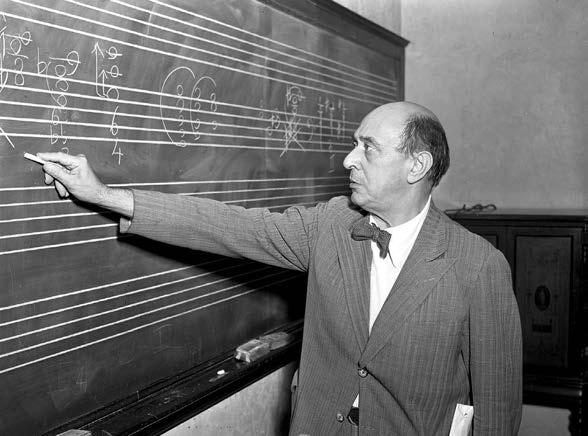
Dating from December 1785, an especially fecund period of Mozart’s piano concerto production, the Piano Concerto in E-flat major tends to be eclipsed by the two concertos he had written earlier that year. But K. 482 explores a unique soundscape of its own by replacing the oboes with the mellow sonority of clarinets and engaging the woodwinds in elegantly intimate conversations with the piano soloist, who makes her entrance playing material that will have an integral role in the development of the first movement. Mozart fills the canvas of this spacious opening movement with a prodigal abundance of thematic and lyrical ideas (in contrast with Haydn’s tendency towards the thrifty use of material).
The shift to a minor key (C minor) for the variation-based Andante initially comes as a surprise but, in Mozart’s hands, gives the concerto an indelible emotional depth. His obsession with opera also leaves a mark. Mozart was already hard at work composing the first of his collaborations with Lorenzo Da Ponte, Le Nozze di Figaro (which would be premiered in the following May). Something of the bittersweet Eros that pervades Figaro might be said to flavor the Andante as well.
Another surprise is the gently sensuous, minuet-like andantino episode that arrives in the middle of the catchy finale — more evidence of the Figaro sound waiting in the wings. An amiable nod to the temperament of Mozart’s friend Haydn, who understood his younger peer’s genius like no one else, appears near the very end — yet in a touch that fully reaffirms Mozart’s own personality, as composer and pianist alike.
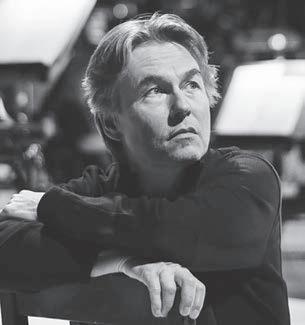

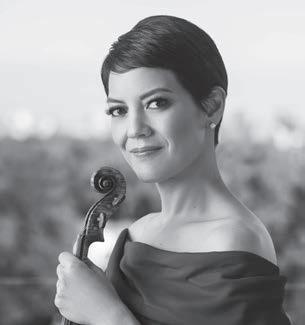



This concert is made possible by the generous support of Smith-Hobson Foundation Fund, Ventura County Community Foundation
OJAI CHATS at Libbey Park Gazebo, 11:30am: Rick Stotjin
There is no intermission during the concert
Saturday, June 8, 2024 | 10:00am
Ljubinka Kulisic accordion | Rick Stotijn double bass
Musicians of the Mahler Chamber Orchestra
John ZORN
Missy MAZZOLI
John ADAMS
Road Runner
Ljubinka Kulisic accordion
Dark with Excessive Bright
Rick Stotijn double bass | José Maria Blumenschein concertmaster and leader
Musicians of the Mahler Chamber Orchestra
Shaker Loops
Shaking and Trembling
Hymning Slews
Loops and Verses
A Final Shaking
Musicians of the Mahler Chamber Orchestra:
Alexandra Preucil, May Kunstovny, and Naomi Peters violins, Yannick Dondelinger viola, Stefan Faludi and Christoph Richter cellos, Naomi Shaham double bass
The residency of the Mahler Chamber Orchestra is made possible by the generous support of the Colburn Foundation, Carol Colburn Grigor-Dunard Fund USA, Kathleen and James Drummy, Berta and Frank Gehry, Lenore S. and Bernard A. Greenberg Fund, and Terri and Jerry Kohl
However straightforward they may seem on the surface, musical quotations can open up astonishingly complex, even subversive dimensions. Like the language of Western tonal harmony itself, their effect in a composition is deeply reliant on context. Schoenberg’s famous allusion to a Viennese folk song in the second movement of his landmark String Quartet No. 2, for example, has generated endless interpretations.
A lot of fun is to be had with the restless collage of quotations that the uber-prolific John Zorn has jam-packed into Road Runner. But their manic velocity and the randomness give the piece a surreal (if not sinister) edge. The epitome of the downtown New York composer, Zorn composed Road Runner in 1985, the year of his breakthrough album of Ennio Morricone covers, The Big Gundown, (and a decade before launching his experimental Tzadik Records label).
No interpretation can be the same, since Zorn loads the piece with options for improvising and “noodling” on the accordion. Illustrated by pasted-on cutouts of images of the Warner Brothers cartoon characters Wile E. Coyote and Road Runner, the graphic score comprises 23 short, block-like sections that proceed spasmodically, like a stop-start
Missy MAZZOLI (b. 1980)
Dark with Excessive Bright (2018)
animated film. The quotes shift abruptly from classical rep (“a la Liszt Hungarian Rhapsody”) to pop culture (the Dragnet theme) and dance styles, with instructions to “make mistakes, drunkenly” or “knock on door” mixed in among other frenzied gestures.
“Dark with excessive bright thy skirts appear, / Yet dazzle Heaven, that brightest Seraphim / Approach not, but with both wings veil their eyes”: Along with her allusions to Baroque style, Missy Mazzoli’s composition takes its title from a literary quotation — namely, this passage from the beginning of Book III of Paradise Lost, in which Milton attempts to describe the ineffable by depicting God.
Another quote is in order: “Her phrases remind me of a great novelist’s sentences, even those of my favorite novelist, Henry James, in the way that they seem always to be searching, falling back, leaping forward; in their hesitation and their charge, their faltering and their determination.” — from the writer Garth Greenwell, who was enlisted to write the liner notes for the BIS recording of the solo violin version of Dark with Excessive Bright
Musical America’s Composer of the Year in 2022, Mazzoli has earned acclaim
John ADAMS (b. 1947)
Shaker Loops (1978; rev. 1983)
in particular as an opera composer: Her remarkable Breaking the Waves received a new production this spring at Detroit Opera, and she is at work on a Met commission to adapt George Saunders’s Lincoln in the Bardo. Mazzoli has become a sought-after voice in the concert hall as well, receiving commissions from such ensembles as the Los Angeles Philharmonic, Chicago Symphony, National Symphony, and, in the case of Dark with Excessive Bright, the Australian Chamber Orchestra, which cocommissioned the piece in 2018 with the London-based Aurora Orchestra.
Initially written for ACO’s principal double bassist Maxime Bibeau, Dark with Excessive Bright shows Mazzoli’s fascination with the drama inherent in the concerto format. The phrase by Milton that she chose as her title “is a surreal and evocative description of God, written by a blind man,” Mazzoli writes. “I love the impossibility of this phrase, and felt it was a strangely accurate way to describe the dark but heartrending sound of the double bass itself.”
Immersing herself in Baroque and Renaissance music while composing the piece, Mazzoli became intrigued by Bibeau’s double bass, “a massive instrument built in 1580 that was stored
CONTINUED }}
in an Italian monastery for hundreds of years and even patched with pages from the Good Friday liturgy. I imagined this instrument as a historian, an object that collected the music of the passing centuries in the twists of its neck and the fibers of its wood, finally emerging into the light at age 400 and singing it all into the world. While loosely based in Baroque idioms, this piece slips between string techniques from several centuries, all while twisting a pattern of repeated chords beyond recognition.”
John Adams’s early work Shaker Loops, which first established his wider reputation, has in turn been quoted in other contexts. This music can be heard accompanying pivotal scenes in films as disparate as the Charles Bukowski–inspired Barfly (1987) and Io sono l’amore (2009, from Luca Guadagnino’s “Desire” trilogy). Showing the composer’s fondness for punning and allusive titles, Shaker Loops combines the prominent use of “shakes” (another term for trills) with the looping technique that Steve Reich made into a springboard for his brand of Minimalism.
Shaker Loops developed from an earlier piece Adams wrote during the mid-1970s period of electronic experimentalism that preceded his turn to the idioms of Minimalism. Scored for a string septet
(three violins, viola, two cellos, and contrabass), the original Shaker Loops was premiered in San Francisco in December 1978, but Adams published a version for string orchestra in 1983, codifying some of the aspects in the original score that had been left up to the performers. This revised version can also be played by a septet — the format in which we hear the piece this morning — which, according to the composer, brings out the “clarity and individualism” of the piece.
Adams hit on a metaphoric connection between the string techniques he uses extensively throughout the piece — quivering tremolos on a single note or between different notes — and the ecstatic, transcendent dancing of the apocalyptic religious sect colloquially known as the Shakers, although he does not actually quote any Shaker tunes (such as “Simple Gifts,” the signature of Copland’s Appalachian Spring).
“Loops” refers to the Minimalist technique of repeating short fragments from a prerecorded tape over and over: When the same track is duplicated and replayed at different rates with the original track, an acoustical moiré pattern emerges that seems to change despite the repetitions. Shaker Loops is built from this inherent dichotomy between stasis and change, the motoric and spiritual.
Shaker Loops is designed in four movements, each seamlessly connected to the next. The two outer sections mirror each other in their frenetic “shaking” and dramatic contrasts of volume. The contemplative second section (“Hymning Slews”) counterbalances this rapturous restlessness with haunting string glissandi in slow-motion grace. (Slew is another term from the electronic realm, referring to these glides between notes.) “Loops and Verses” mediates between tranquility and the agitated shaking music. This section climaxes in a series of tempo accelerations for the ensemble that Adams singles out as “the emotional high point of the piece.” The registration drifts upward to segue into “A Final Shaking,” which briefly incandesces before turning inward.
Shaker Loops was the first John Adams work to capture the attention of Peter Sellars. “It was thrilling,” the director recalls, “because here was music that was genuinely dramatic. Shaker Loops builds up these incredible sweeps of tension and then goes into astonishing release and then adrenalin-inspired visionary states: That is absolutely what you hope for in theater. I realized that this is theater music, with the ability to build and sustain tension.””
—THOMAS MAY

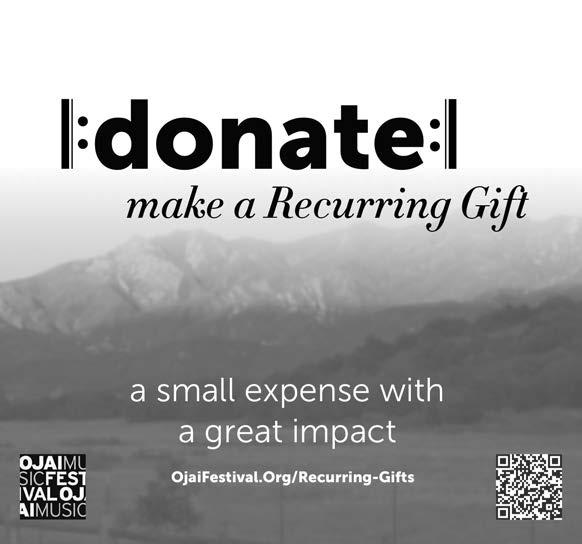


Shifting Ground is produced in collaboration with Baryshnikov Arts, New York City.
Visual art by Xuan commissioned by Baryshnikov Arts
This concert is made possible with the generous support of Meg Bates and Scott Johnson
There is no intermission during the concert
Saturday, June 8, 2024 | 3:30pm (Repeat Performance)
Greenberg Center, Ojai Valley School (lower campus)
GREENBERG CENTER, OJAI VALLEY SCHOOL (LOWER CAMPUS, 723 EL PASEO ROAD, OJAI)
SHIFTING GROUND
Alexi Kenney violin | Xuan visual art
Rafiq BHATIA
J.S. BACH
Paul WIANCKO
Angélica NEGRÓN
J.S. BACH
Nicola MATTEIS
Kaija SAARIAHO
Salina FISHER
Mario DAVIDOVSKY
Matthew BURTNER
J.S. BACH
Descent
Allemande from Violin Partita No. 2 in D minor, BWV 1004
Allemande from X Suite
The Violinist for violin and electronics, story by Ana Fabrega
Grave from Violin Sonata No. 2 in A minor, BWV 1003
Alia Fantasia
Nocturne for solo violin
Hikari for solo violin
Synchronisms No. 9 for violin and tape
Elegy (Muir Glacier 1889-2009) for violin and glacier sonification
Chaconne from Violin Partita No. 2 in D minor, BWV 1004
See p. 51 for statement on Shifting Ground by Alexi Kenney
 –Stephan Farber | Founder & CEO
–Stephan Farber | Founder & CEO
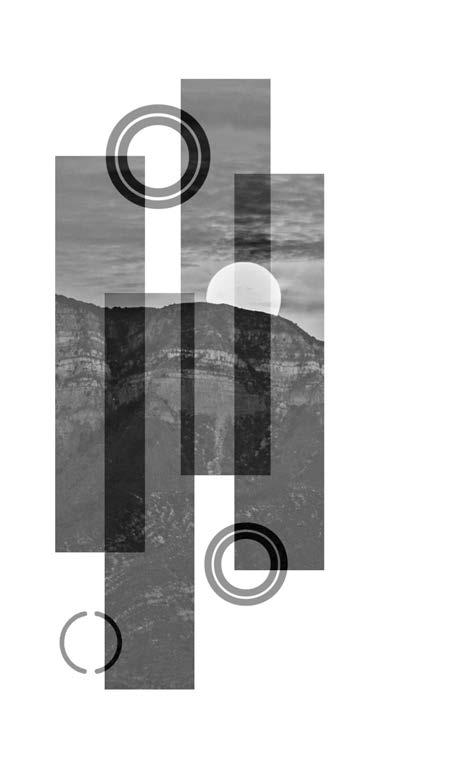
This concert is made possible by the generous support of Nancy and Barry Sanders
The concert appearance of Aliisa Neige Barriere is made possible by Linda Joyce Hodge
OJAI CHATS at Libbey Park Gazebo, 6:00pm: Alissa Neige Barrière
Saturday, June 8, 2024 | 8:00pm
Mahler Chamber Orchestra
Mitsuko Uchida piano and director
José Maria Blumenschein concertmaster and leader
Aliisa Neige Barrière conductor
Vicente Alberola clarinet
Claude DEBUSSY Prelude to the Afternoon of a Faun (arr. Benno SACHS)
Kaija SAARIAHO
Lichtbogen
Aliisa Neige Barrière conductor
INTERMISSION
Esa-Pekka SALONEN Elegy (from kínēma)
Vicente Alberola clarinet
Wolfgang Amadeus MOZART Piano Concerto in B-flat major, K. 595
I Allegro II Larghetto
III Allegro
Mitsuko Uchida piano and director
The residency of the Mahler Chamber Orchestra is made possible by the generous support of the Colburn Foundation, Carol Colburn Grigor-Dunard Fund USA, Kathleen and James Drummy, Berta and Frank Gehry, Lenore S. and Bernard A. Greenberg Fund, and Terri and Jerry Kohl
Claude DEBUSSY (1862-1918)
Prelude to the Afternoon of a Faun (1894; chamber arrangement by Benno Sachs, 1921)
Kaija SAARIAHO (1952-2023)
Lichtbogen (1986)
Esa-Pekka SALONEN (b. 1958)
Elegy (from kínēma) (2021)
Wolfgang Amadeus MOZART (1756-91)
Piano Concerto in B-flat major, K. 595 (1791)
The solo flute’s melody wafts by, as if carried by a breeze — a dream lazily materializing, undecided as to its direction. The opening bars of Debussy’s Prelude to the Afternoon of a Faun never seem to lose the capacity to cast their tantalizing spell, lulling our overstimulated systems with the pleasures of ambiguity.
This was a moment of great awakening, however, for Pierre Boulez. He declared that the faun-blown flute “brought new breath to the art of music” and hailed Debussy’s early piece for ushering in nothing less than the birth of musical modernism: “Overthrown was not so much the art of development as the very concept of form itself.” Like the last movement of Schoenberg’s Second String Quartet, with which we opened the festival, these gentle strains represent one of the key turning points of modern music.
In fact, for all the differences between the French and German traditions — differences emphasized by Debussy himself, who once gleefully referred to the development section in a Beethoven symphony as the part where he could step out to enjoy a cigarette break — Schoenberg was keen to champion his colleague. In 1918, he founded the Society for Private Musical Performances, with the aim of offering sympathetic
audiences in Vienna first-rate, thoroughly prepared presentations of a wide range of contemporary composers. (Critics were forbidden entry.)
Numerous compositions by Debussy appeared on the programs, which featured chamber orchestra versions of larger orchestral scores. An arrangement of Prelude to the Afternoon of a Faun for 12 instruments made by Benno Sachs, one of Schoenberg’s rehearsal conductors, was scheduled for 1922 but had to be canceled when post-war hyper-inflation forced the Society to close. This is the version we hear in tonight’s performance.
Debussy’s point of departure, Stéphane Mallarmé’s Symbolist poem L’Aprèsmidi d’un faune from 1865 (published in 1876), conveyed a radically innovative vision of its own. (Mallarmé also inspired Boulez’s longest work, Pli selon pli.) In this poem, Mallarmé modernized the ancient pastoral eclogue of Virgil into a dramatic monologue revolving around the erotic rhapsodies of its protagonist, a lustful rural god who takes the shape of a humangoat hybrid. The faun fantasizes about his dalliances with nymphs “in the heat of the afternoon,” as Debussy described it.
The enigmatic “prelude” appended to the title refers to the composer’s initial plan
to write a triptych (including an “interlude” and a final “paraphrase” as well) for a dramatic reading of the poem planned by Mallarmé. But Prelude stands complete on its own terms, a self-contained musical interpretation of Mallarmé’s ode to sex and art. The sensation of the ebb and flow of desire and of borderline states in this music has a particular translucency in Sachs’s chamber scoring.
Kaija Saariaho once remarked that she was especially drawn to Debussy in her early years because of his “fantastic ear” and “because his music is so fluid in form and yet so difficult to analyze.” Lichtbogen, too, begins with the sound of a flute (in this case, an alto flute), but its sustained drone on F-sharp opens the portal into a vastly different cosmos of shimmering, hallucinatory sonorities created from discreetly blended acoustic instruments and live electronics.
In the early 1980s, Saariaho chose Paris as her home and became associated with Boulez’s IRCAM research center there. Lichtbogen is the first composition she created using computer tools from IRCAM “in the context of purely instrumental music,” as the composer notes. Although Lichtbogen is not a work of program music, Saariaho refers to her impressions of seeing the aurora borealis in the Arctic
CONTINUED }}
sky when she began composing it on a commission from the French Ministry of Culture. (The German title — literally, a “bow of light” — refers to an electric arc.)
“When looking at the movements of these immense, silent lights which run over the black sky, first ideas concerning the form and language for the piece started to move in my mind,” Saariaho writes, though she leaves unresolved the question as to whether there is any “dependence … between this phenomenon of nature and my piece.” Saariaho was also wellacquainted with Goethe’s description of the almost-imperceptible transitional states between light and shade in his Theory of Colors and has referred, in other contexts, to that source as an inspiration in the development of her musical thinking overall.
But a single musical gesture served as the source generating the mesmerizing color-fields of timbre that form the soundscape of Lichtbogen. Saariaho undertook a computer analysis of a harmonic on the cello produced with extra bow pressure, magnifying and distributing its components. The nine instrumentalists and live electronics weave an aural texture that seems static while actually changing subtly and gradually — like a mobile sculpture in radically slowed-down motion.
The loss of this extraordinary voice in contemporary music has been keenly felt since Saariaho’s passing a year ago. The fourth movement of the clarinet concerto kínēma by her friend and compatriot Esa-Pekka Salonen serves as an elegy in her memory on this occasion. Originally composed in 2021 for Christoffer Sundqvist (principal clarinet with the Finnish Radio Symphony Orchestra), kínēma comprises a series of five “scenes,” as Salonen calls them. He drew the musical material from his score for the 2021 Finnish film Odotus (“The Wait”), a romantic drama set on an isolated archipelago in the Baltic Sea. The fourth movement is an homage to the legendary Finnish film director Jörn Donner.
By virtue of its position as the very last of his piano concertos — premiered early in 1791, the year of his premature death — K. 595 has long carried associations of leave-taking as well. A hiatus of three years separates this work from his previous concerto (K. 537), reflecting the decline in demand ascribed to changes in public taste as well as economic recession.
The Concerto in B-flat major is characterized by the pared-down simplicity of Mozart’s late style. Gone is
the brightness of trumpets and drums typical of the great concertos from the 1780s, with an emphasis on intimate, chamber-like textures instead. Mozart similarly composes with notable economy in his treatment of the thematic material, tending towards monothematic elaboration of the opening Allegro’s main theme, for example.
The in medias res accompaniment at the outset recalls the opening of the great G minor Symphony from 1788 and marks the first of several enigmatic gestures to come — woodwind flourishes that interrupt the main theme, the recurrent grace-note giggles. Mozart’s abrupt changes of key are especially remarkable here.
The keyboard writing is luminous. The soloist does not engage in contests of feat but rather exchanges of confidence with the orchestra. Mozart deepens the emotional contours of the Larghetto’s radiant song through the simplest of gestures — momentary mutings or new timbral shadings. Even the more conventionally extroverted attitude of the finale gives way to unusual harmonic excursions. For all the catchy familiarity of its main theme, Mozart’s subtle variations underline the constancy of change and transience.

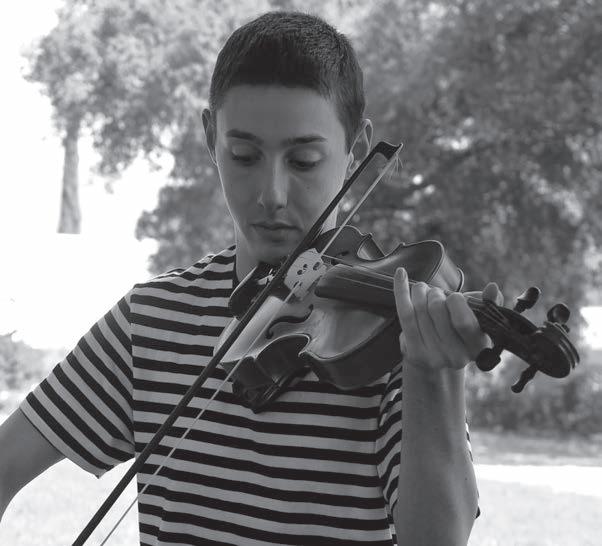






Besant Hill School is an independent boarding and day school in Ojai offering a rigorous college-prep curriculum including:
• Expansive Arts Offerings
• Global Community
• 4:1 Student-Teacher Ratio
• Summer Programs
• Environmental Studies
• English as a Second Language (ESL)
• Discussion-Based Classes
• Instructional Support
8585 ojai santa paula road
just 10 minutes from downtown, in beautiful upper ojai
805-646-4343
WWW.BESANTHILL.ORG
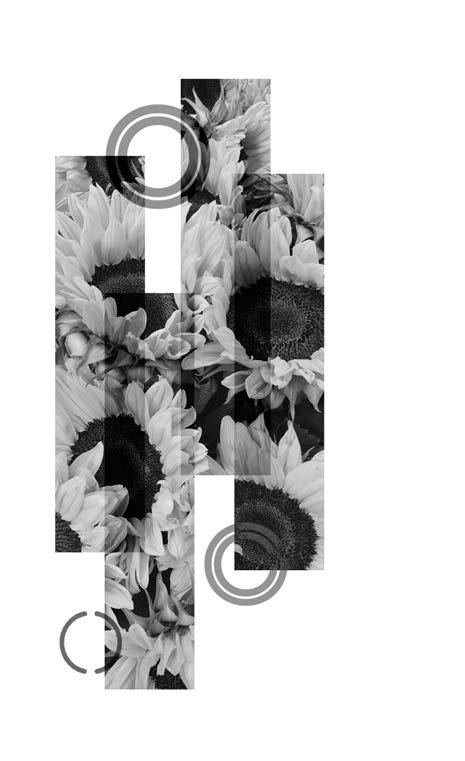
This concert is made possible by the generous support of Ida and Glenn Mercer
The performance of Sofia Gubaidulina’s In Croce is made possible by Raulee Marcus
OJAI CHATS at Libbey Park Gazebo, 11:30am: Ljubinka Kulisic and Sae Hashimoto
There is no intermission during the concert
FREE COMMUNITY CONCERT at Libbey Park Gazebo, 4:00pm
Sunday, June 9, 2024 | 10:00am
Alexi Kenney violin | Sae Hashimoto percussion
Brentano String Quartet: Mark Steinberg and Serena Canin violins, Misha Amory viola, Nina Lee cello
Jay Campbell cello | Ljubinka Kulisic accordion
Heinrich Ignaz Franz BIBER Passacaglia for solo violin
Alexi Kenney violin
Kaija SAARIAHO
Joseph HAYDN
Six Japanese Gardens
I. Tenju-an Garden of Nanzen-ji Temple
II Many Pleasures (Garden of the Kinkaku-ji)
III Dry Mountain Stream
IV. Rock Garden of Ryoan-ji
V Moss Garden of the Saiho-ji
VI. Stone Bridges
Sae Hashimoto percussion
from The Seven Last Words of Christ
Sonata II Grave e cantabile
(“Hodie mecum eris in paradiso”)
Sonata V Adagio (“Sitio”)
Sonata VI Lento (“Consummatum est”)
Brentano String Quartet
Sofia GUBAIDULINA In Croce
Jay Campbell cello | Ljubinka Kulisic accordion
Heinrich Ignaz Franz BIBER (1644-1704)
Passacaglia (1676)
Kaija SAARIAHO (1952-2023)
Six Japanese Gardens (1994)
Joseph HAYDN (1732-1809)
The Seven Last Words of Christ (excerpts) (1786)
Sofia GUBAIDULINA (b. 1931)
In Croce (1979); arranged for accordion and cello in 1991 by Elsbeth Moser
How often do we hear a composition described as a “journey” we are invited to undertake? The Western classical tradition in particular has encouraged forms — the best example of which is the sonata form refined by Haydn and Mozart — that evoke a sense of actively traversing a series of musical “events” to reach a “destination” (such as the presentation of a new theme, or the transition to another key).
The much older passacaglia form takes its Italian name from a combination of the Spanish words “to walk” and “street” (whether from street performances or the practice of instrumentalists taking some steps while performing). The simple, continually repeating bass line that characterizes this basic form can suggest a pilgrim’s steady progress against the ever-changing landscape of melody and ornamentation — as in Heinrich Ignaz Franz Biber’s Passacaglia in G minor, one of the earliest extant works for solo violin. (The difference between a passacaglia and a chaconne — such as Bach’s D minor Chaconne, with which this piece by Biber is often compared — became erased over time, but that is another story.)
Solo but not standalone, the Passacaglia is the capstone of the great BohemianAustrian composer’s monumental cycle of 15 Rosary Sonatas (one for each of the 15
Mysteries comprising the Roman Catholic set of prayers known as the Rosary). While the violin is accompanied through the rest of the work, it emerges alone in the Passacaglia, with a return to “normal” tuning following the series of unusual or “scordatura” tunings used for each sonata from the second onward. (Note that the term sonata depicts a musical type different from the aforementioned classical sonata.)
Biber’s original manuscript also prefixes each sonata with a specific engraving corresponding to the devotional mystery in question. An image of a guardian angel watching over a walking child graces the Passacaglia, and the four-note bass pattern that is repeated 65 times, forming the musical foundation of the piece, is associated with a hymn to the guardian angel. Violinist Alexi Kinney likens the Passacaglia to a “portal movement” or gateway that marks “the beginning of something and the end of something: a death-and-rebirth moment.”
In Buddhist practice, walking represents an important mode for encouraging meditative focus. Kaija Saariaho does not explicitly refer to Buddhism in her commentary on Six Japanese Gardens but describes the work simply as “a collection of impressions of the gardens
I saw in Kyoto during my stay in Japan in the summer of 1993 and my reflections on rhythm at that time.” Yet some of her movement titles refer to specific Zen Buddhist temples in the Kyoto region. Even more, the combination of acoustic and electronic musical environments (including monk-like vocal chanting among the pre-recorded samples activated in live performance by the soloist) can awaken responses that bring to mind the meditative function of Zen gardens.
“I’m not a religious person,” Saariaho said in a 2014 interview with the conductor Clément Mao-Takacs. “For me, music is a study of my own self and of the human spirit. I’ve always believed music to be very deep, or at least it can be very deep.” It is in this sense that Saariaho explored the legacy of the Baroque Passion genre, for example, in her innovative La Passion de Simone (featured at the 2016 edition of the Ojai Music Festival). The focused attention on specifically musical aesthetics that her earlier Six Japanese Gardens fosters likewise seems to parallel the mindfulness sought by Buddhist meditation.
All six parts of the work, writes Saariaho, “give a specific look at a rhythmic material, starting from the simplistic first part, in which the main instrumentation
CONTINUED }}
is introduced, going to complex polyrhythmic or ostinato figures, or alteration of rhythmic and purely coloristic materials. The selection of instruments played by the percussionist is voluntarily reduced to give space for the perception of rhythmic evolutions.”
This reduction of colors, however, is counteracted by the electronic part, which extends to include a new palette of “nature’s sounds, ritual singing, and percussion instruments” recorded by percussionist Shiniti Ueno, for whom the score was written. It is inscribed “in memory of Toru Takemitsu.”
Regarded as one of Haydn’s boldest compositions — and one of his best known during his final years — The Seven Last Words of Our Savior on the Cross was commissioned in 1786 for the Good Friday service held at an underground chapel in the southwestern Spanish port city of Cádiz.
“After a short service, the bishop ascended the pulpit, pronounced the first of the seven words, and delivered a sermon on it, after which he left the pulpit and fell to his knees before the altar,” wrote Haydn in his preface to a published edition of the
score. His task was to supply music to fill the intervals between these moments of silent prayer and the celebrant’s return to the pulpit to continue with the next of the Seven Words. (Word in this context applies to what are actually statements by Jesus on the Cross — and one question — as distilled from the three Gospel accounts though not all contained in any single one.)
In 1787, Haydn published a reduction for string quartet, and he prepared a choral version in 1796. But The Seven Last Words was composed initially for orchestra — an entirely instrumental piece consisting of a string of seven slow movements. These in turn are framed by a slow introductory movement and a Presto finale (the work’s only fast movement) representing the earthquake that follows the death of Jesus.
Each of the seven sonata movements between these refers to one of the traditional Seven Last Words. Haydn later recalled the challenge posed by striving to write “seven adagios lasting ten minutes each, and to succeed one another without fatiguing the listeners: indeed, I found it quite impossible to confine myself to the appointed limits.”
The Brentano Quartet has a long relationship with this music: At the beginning of the century, it commissioned former U.S. Poet Laureate Mark Strand to write new texts to stand in for the sermons traditionally delivered between the movements. For this performance, they present Sonatas 2, 5, and 6.
Two concurrent but diametrical paths, represented by the solo cello and accordion, map out an actual cross to complete the spiritual journey in Sofia Gubaidulina’s In Croce. (See p. 43-44 for more discussion of this work.)
For Gubaidulina, now 92, the material, mortal nature of sounds becomes linked to the search for transcendence. The distinction between staccato and legato playing, for example, which is a basic technical issue with implications for the expressive nature of a phrase, leads Gubaidulina to reflections on the promise of faith as a redemption from the brokenness of everyday reality: “I understand ‘religion’ in the literal meaning of the word,” as she has said: “As re-ligio, that is to say the restoration of connections, the restoration of the binding-together or legato of life.”
—THOMAS MAY




This concert is made possible by the generous support of an Anonymous donor
There is no intermission during the concert
Sunday, June 9, 2024 | 2:30pm
Lucy Fitz Gibbon soprano | Alexi Kenney violin
György KURTÁG (b. 1926)
Kafka Fragments, Op. 24 (1985-87)
Part I
1. Die Guten gehn im gleichen Schritt…
2. Wie ein Weg im Herbst
3 Verstecke
4 Ruhelos
5 Berceuse I
6 Nimmermehr (Excommunicatio)
7. “Wenn er mich immer frägt”
8 Es zupfte mich jemand am Kleid
9. Die Weissnäherinnen
10 Szene am Bahnhof
11. Sonntag, den 19. Juli 1910 (Berceuse II) (Hommage à Jeney)
12. Meine Ohrmuschel…
13 Einmal brach ich mir das Bein
14. Umpanzert
15 Zwei Spazierstücke
16 Keine Rückkehr
17 Stolze (1910/15 November, zehn Uhr)
18 Träumend hing die Blume
19. Nichts dergleichen
Part II
20 Der wahre Weg (Hommage-message à Pierre Boulez)
Part III
21. Haben? Sein?
22. Der Coitus als Bestrafung
23 Meine Festung
24. Schmutzig bin ich, Milena...
25 Elendes Leben
26. Der begrenzte Kreis
27 Ziel, Weg, Zögern
28. So fest
29 Penetrant jüdisch
30. Verstecke (Double)
31. Staunend sahen wir das große Pferd
32. Szene in der Elektrischen
Part IV
33 Zu spät (22 Oktober 1913)
34. Eine lange Geschichte
35 In memoriam Robert Klein
36 Aus einem alten Notizbuch
37 Leoparden
38 In memoriam Johannis Pilinszky
39 Wiederum, wiederum
40 Es blendete uns die Mondnacht
“There is no ‘to have,’ only a ‘to be,’ a ‘to be’ longing for the last breath, for suffocation.” (Part III, no. 1)
The koan-like paradoxes that György Kurtág sets to music in Kafka Fragments find their uncanny reflection in the composer’s musical language, in which simplicity is allied with impossibility. Soprano Lucy Fitz Gibbon, who shows a deep affinity for Kurtág’s style, observes that the Hungarian composer’s works can be “as much about discovering the poetry” in the texts he sets “as about discovering what we would consider to be music. His pitches and rhythms are a deeply thoughtout, distilled refraction of language itself.”
Kurtág’s infinite care with each gesture — which, in turn, makes the most extravagantly taxing demands of concentration on the performers — betrays an undying sense of wonder that the phenomenon of music can even exist.
It’s as if nothing in Kurtág’s universe can be taken for granted. For all the hyperawareness of transience that peers through Kafka Fragments, this is an artist who knows how to wait. Approaching his 100th birthday in 2026, Kurtág has to date published a catalog of works that, heard in their entirety, last only about 10 hours; he waited until his early 90s to premiere
his only opera, Fin de Partie, an adaptation of Samuel Beckett’s Endgame, which was staged at La Scala in 2018.
Kurtág spent a life-changing period in Paris in the late 1950s before returning to Budapest during the Cold War. (He still resides there, in the Budapest Music Center, on a street fittingly renamed after his lifelong friend and mentor, György Ligeti.) The first work he composed upon returning, a string quartet, was officially designated Kurtág’s Op. 1. Pierre Boulez’s concerts introducing the Second Viennese composers and other avant-garde trends (all verboten back in Communist Hungary) opened up new vistas — as did the discovery of new trends in literature and theater. Kurtág’s exposure to Anton Webern and Samuel Beckett alike left indelible marks on his musical thinking.
Another creative catalyst was the treatment that the depressed composer received from the therapist Marianne Stein, who encouraged a kind of back-tobasics recalibration of values that radically freed up his imagination. Kafka Fragments, like his Op. 1 string quartet, is dedicated to Stein. An additional impetus that can be felt in this work is the liberating effect of writing pedagogical piano pieces for children, a practice Kurtág began in 1973 and continued long thereafter, with the
aim of stimulating the sense of play in music-making.
As with Beckett, during his Paris sojourn Kurtág alighted on Franz Kafka, with whom he shares his Jewish heritage and a multilingual cultural upbringing, as a kindred spirit. But instead of the celebrated stories and novels, Kurtág was drawn to Kafka’s notebooks, diaries, and letters (especially his deeply personal confessions to the Czech journalist and translator Milená Jesenská) as sources from which to cull a collection of textual fragments. When he began setting these to music in 1985, Kurtág soon discovered that the process was addictive, comparing his preoccupation to “a little boy nibbling at forbidden sweets.”
Kafka Fragments grew into a four-part design comprising 40 numbers and premiered at the Witten Festival in April 1987; it has become one of Kurtág’s most frequently recorded and performed compositions. Half of the pieces are less than a minute long, while a few last several minutes — including the sole number contained in Part II (“The True Path”), which Kurtág designated as an “hommage-message à Pierre Boulez”).
Kafka Fragments poses endless enigmas in its marriage of de-contextualized literary
extracts and ultra-condensed musical gestures. Each medium seems at times to aspire to become the other, much as the violinist strives to exchange identities with the soprano, while the latter, notes Fitz Gibbon, is implicitly asked “to imitate the instrument.”
How are we to approach this collage of piercing, imagistic snapshots (“The onlookers freeze as the train goes past” in No. 10, “Scene at the Station”) and miniature parables, where a grim beauty shares the stage with hopeless hilarity?
Should we think of Kurtág’s work as a song cycle, a duo between the singer and the violinist, a noirish cabaret experiment, a trailblazing genre of theater — or
even opera? Regular Ojai Music Festival audiences will recall that Peter Sellars’s famous staging imagined the soprano as an American housewife going about her daily routine so as to extract the “hidden worlds, hidden meanings, and hidden emotion” of this “theater of restraint.”
Kurtág inscribes unforgettable musical counterpoint onto Kafka’s dreamlike imagery of locomotion and exile, fragility, erotic angst, and artistic self-doubt. Yet he posits no unifying narrative beyond the intrepid gaze aimed at the absurdity of the human condition. Violinist Alexi Kenney points out that a remarkable variety of drama is “already inherent within the piece.” Kafka Fragments negotiates
a tightrope walk that “runs the gamut of emotional experience,” including lots of humor alongside its starkly existential epiphanies. Perhaps, Kenney says, the total effect comes closest to that of a tightly constructed opera.
For Fitz Gibbon, the absurdism of the demands on the performers is integral to the story of “struggle” embedded in the texts and their “meditation on our own inadequacy and understanding of our frailty. The striving towards some version of perfection makes the music even more worthwhile. There’s something beautiful about pushing yourself towards a limit that you can never reach. The striving itself is both humbling and deifying.”
—THOMAS MAY


This concert is made possible with the generous support of Kathleen and Jerry Eberhardt
COMMUNITY CONCERT
at Libbey Park Gazebo, 4:00PM Members of the Mahler Chamber Orchestra
Sunday, June 9, 2024 | 5:30pm
Mahler Chamber Orchestra
Mitsuko Uchida piano and director
José Maria Blumenschein concertmaster and leader
Joseph HAYDN
Jörg WIDMANN
Symphony No. 46 in B major, Hob. I:46
I. Vivace
II Poco Adagio
III. Menuet: Allegretto
IV. Presto e scherzando
Chorale Quartet (Choralquartett), version for chamber orchestra
INTERMISSION
Wolfgang Amadeus MOZART Piano Concerto in G major, K. 453
I Allegro
II Andante
III Allegretto – Presto
Mitsuko Uchida piano and director
The residency of the Mahler Chamber Orchestra is made possible by the generous support of the Colburn Foundation, Carol Colburn Grigor-Dunard Fund USA, Kathleen and James Drummy, Berta and Frank Gehry, Lenore S. and Bernard A. Greenberg Fund, and Terri and Jerry Kohl
Joseph HAYDN (1732-1809)
Symphony No. 46 in B major, Hob. I:46 (1772)
Jörg WIDMANN (b. 1973)
Chorale Quartet (Choralquartett), version for chamber orchestra (2003; 2020)
Music among friends: This has been a unifying thread of Mitsuko Uchida’s vision for the 2024 edition of the Ojai Music Festival. She joins with her close friends from the Mahler Chamber Orchestra to close this year’s edition of the festival with a program framed by a legendary pair of musical friends. Vienna in the late 18th century was the kind of milieu — all too familiar to us today — that fanned the fires of professional jealousy. Yet Haydn was struck with admiring wonder for his colleague from a younger generation. In 1787 he wrote: “If I could only impress on the soul of every friend of music … how inimitable are Mozart’s works, how profound, how musically intelligent, how extraordinarily sensitive!”
Mozart’s love of Haydn’s music is in turn evident from the influences he eagerly absorbed at different points in his career, affecting both the content and the craft of his own work. The intense pathos of Mozart’s great G minor works, for example, or the apocalyptic D minor doom that envelops Don Giovanni, certainly owe something to the expressionism Haydn pioneered with his so-called Sturm und Drang manner of the late 1760s / early 1770s.
While Haydn’s “storm and stress” symphonies of this period — harbingers of Romanticism’s emotional intensity — are usually associated with darkly tragic minor keys, the major-key Symphony No. 46 (composed in 1772, back-to-back with the “Farewell” Symphony) is a tonal rarity by virtue of being set in B major. At the time, when well-tempered tuning was still becoming established as the standard, the “remoteness” represented by the key’s five sharps would have been more keenly apparent. But even more than 250 years later, we can still hear Haydn’s wildly daring attitude in playing with expectations. He pretends to simply give up on the first movement’s development section after less than a minute, for example, but the apparent “reprise” is a false flag that plunges us into a stormy passage of real transformation.
Both middle movements unfold as parades of primarily rhythmic and harmonic events, as if melody is deliberately being suppressed. But the minuet’s music turns out to be highly memorable thanks to Haydn’s stroke of architectonic genius in the finale. Energetically forward driven and punctuated by bright splashes of color from the horns, the finale grinds to
Wolfgang Amadeus MOZART (1756-93)
Piano Concerto in G major, K. 453 (1784)
a halt and suddenly yields to a lengthy recall of the minuet. It’s as if the process of musical memory, of reprise — so essential to our enjoyment and in particular to the Classical aesthetic — has somehow gone haywire in this symphony. Eventually, the orchestra snaps out of its unprovoked reverie and gets on with the business of the finale. But the shock of such an extensive musical flashback resounds.
The influence of the past can be liberating, even revolutionary. Beethoven would later use a similar stratagem in the finale of his Fifth Symphony. Jörg Widmann, too, frequently engages with the legacy of the First Viennese Classical composers — in the most intriguingly oblique ways. Five of his string quartets reflect in some way or other on Beethoven’s Op. 130. Chorale Quartet, originating from an earlier quartet by Widmann, reveals a strange relationship with music by Haydn that we encountered earlier this weekend (The Seven Last Words).
The 50-year-old Widmann, a native of Munich who is also a virtuoso clarinetist and teacher, composes prolifically across many genres but is especially at home in chamber music. No surprise, then, that he has developed a close musical friendship
CONTINUED }}
CONTINUED FROM PREVIOUS PAGE MEMORIES AND JOURNEYS
with Mitsuko Uchida. The Mahler Chamber Orchestra gave the world premiere of the chamber orchestra version of Chorale Quartet in 2020.
Initially, Chorale Quartet was composed in 2003 as a single-movement string quartet (the second of his 10 quartets to date). This slow movement “does not directly reflect” the Haydn source, notes Widmann, but could not have been written “without knowing that work.” Along with the “shocking urgency” of Haydn’s Seven Last Words, he finds “the relaxed and serene acceptance of death” it expresses even more “disturbing.”
Widmann’s own music undertakes an unsettling “final journey” — a key word, he notes, for his conception of the piece — that begins “at the end of the path” with “final tones, phrases from the past which originate from nowhere and do not lead anywhere.” Extended techniques draw attention to the excruciating physicality of musical production — “the horrifying friction of skin on wood” — which is juxtaposed with chorale-like melodies. But their relationship remains ambiguous.
Writes Widmann: “I am interested in investigating how, through the course of the work, sound effects no longer represent desolation, and tonal elements no longer represent confidence.”
Uchida and her friends close the festival with Mozart’s K. 453 Piano Concerto in G major from April 1784 — a vintage year indeed of his concerto production. Especially prized for its refined intimacy, this concerto was performed by Barbara (“Babette”) Ployer, the niece of a Salzburg court official, a few months after Mozart completed it — possibly as a display piece for Ployer, a student he found especially impressive; she was both a pianist and a composer. He even sketched her in the margin of one of his manuscripts.
Mozart plays with the rousing gestures of a march rhythm in several of his concertos from this period — here quickly veering into subtle mixtures of light and shade that might have seemed a nonsequitur from a less-gifted composer. It’s fascinating to compare and contrast his sense of wit with that of his older friend Haydn.
“If I absolutely had to name my all-time favorite piece of music, I think I would vote for the Andante,” Leonard Bernstein once declared in one of his lectureconcerts. The prayerlike lyricism and haunting harmonic fluctuations of this movement embody a vein of Mozart’s piano concertos for which Uchida has long shown an uncanny affinity. Some even hear a kinship here with the “Et incarnatus est” from the Mass in C minor. Mozart offers a perfect counterbalance to the Andante’s introspection with the finale’s sunlit theme, which looks ahead to Papageno’s chirpy charm. The tune actually has another famous avian association: Mozart recorded that his pet starling was able to whistle it back (though with a few variants of its own). Five variations follow, each further varying the two repeated halves that comprise the theme. Mozart adds a sparkling, rapid-fire coda, in which the theme returns, as if in the perfectly timed denouement of a wordless comic opera.
—THOMAS MAY
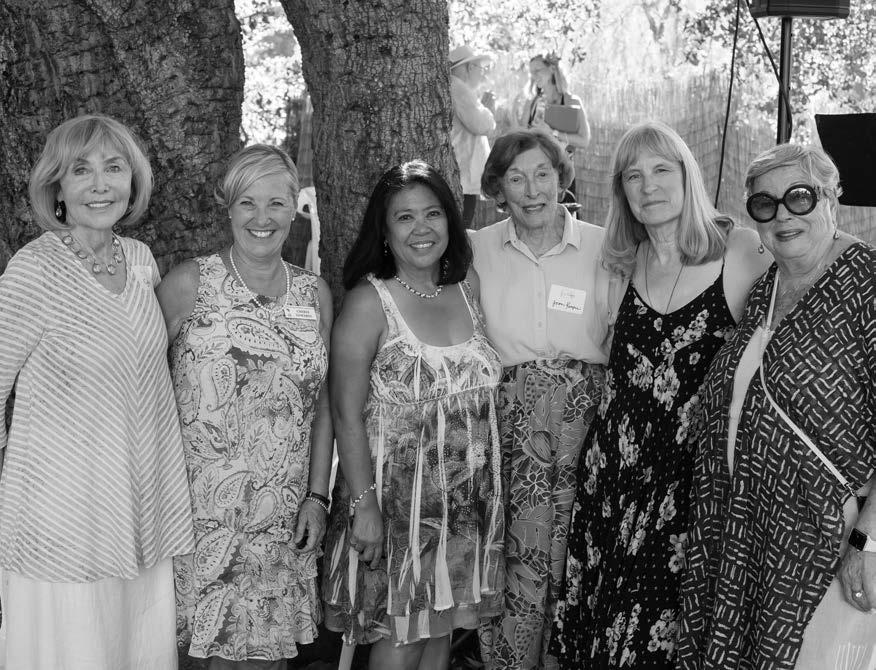


The Ojai Festival Women’s Committee (OFWC) is the largest donor to the internationally acclaimed Ojai Music Festival and its BRAVO Music Education and Community Program. Through their philanthropic and volunteer activities, the OFWC has raised more than one million dollars over the past 70 years!
An active 100+ member volunteer committee, the OFWC presents unique events throughout the year, including the annual Holiday Home Tour & Marketplace, Art & Music Trips, Concerts, Lectures, and fun Socials, all fostering lasting friendships and the continued gift of music to the community.
Join us!
For more info about the OFWC visit OjaiFestival.org/Support or call Anna Wagner at the festival office 805 646 2094.

The Mahler Chamber Orchestra (MCO), founded in 1997, has established a distinct sound and independent artistic identity. The Orchestra’s philosophy, inspired by founding mentor Claudio Abbado, emphasises the power of listening and communication both structurally and musically; they call it The Sound of Listening. It allows the Orchestra, its musicians and managing office, to operate as a democratic collective. Engaging with Artistic Partners, including Mitsuko Uchida, Yuja Wang, Pekka Kuusisto, Conductor Laureate Daniel Harding, Artistic Advisor Daniele Gatti, and Artistic Partner for Immersive Experiences Henrik Oppermann/ Schallgeber; the MCO undertakes multiyear projects that explore diverse artistic themes.
With musicians representing 25 nationalities, residing in different parts of the world, the MCO reaches live audiences across 40 countries on five continents. The Orchestra maintains residencies at renowned venues including Carnegie Hall, Southbank Centre,
Lucerne Festival, Mozartwoche Salzburg, and Festival de Saint-Denis. They are frequent guests at Philharmonie Berlin, Elbphilharmonie Hamburg, Musikverein Vienna, and Beethovenfest Bonn, and regularly tour Iberian and Asian regions. Their worldwide presence enables them to authentically engage with a global audience, fostering connections that resonate across borders and cultures.
In the realm of Outreach and Education, the MCO conducts three flagship projects. The MCO Academy allows orchestra members to share their expertise with the next generation of musicians in collaboration with Orchesterzentrum|NRW and undertake residencies at Konzerthaus Dortmund, Kölner Philharmonie and the Philharmonie Essen. Feel the Music introduces music to deaf and hard-of-hearing children, encouraging a multi-sensory experience. And Welcome Home: a concert about finding the place where you belong, in which
school groups are invited on a multicultural journey, fostering introspection and contemplation on the theme of “Belonging.” These endeavours highlight the MCO’s commitment to enriching lives through music and promoting inclusivity.
In collaboration with Artistic Partner for Immersive Experiences Henrik Oppermann/ Schallgeber, the MCO explores new digital technologies in and beyond the concert hall. Their virtual reality series immerses listeners deeper into performances and brings them closer to the music.
Through its vibrant performances, global reach, educational initiatives, and distinct entrepreneurship, the Mahler Chamber Orchestra continues to make a profound impact on the world of classical music.
Listen to the MCO podcast episode with Mitsuko Uchida at www.mahlerchamber.com/play/podcast.
The residency of the Mahler Chamber Orchestra is made possible by the generous support of the Colburn Foundation, Carol Colburn Grigor-Dunard Fund USA, Kathleen and James Drummy, Berta and Frank Gehry, Lenore S. and Bernard A. Greenberg Fund, and Terri and Jerry Kohl
 JOSÉ MARIA
JOSÉ MARIA
BLUMENSCHEIN, concert master of the Mahler Chamber Orchestra (MCO), is a native of Freiburg (Germany) born of Brazilian parents, currently serves as the first concertmaster
of the WDR Radio Symphony Orchestra in Cologne and shares a concertmaster position at the Mahler Chamber Orchestra after serving as associate concertmaster of the Philadelphia Orchestra for three seasons. During his tenure
with WDR, he also took two seasons off to perform as the first concertmaster of the Vienna State Opera and Philharmonic.
As a passionate leader, he regularly performs with orchestras and ensembles such as the Bayreuth Festival Orchestra, Chamber Orchestra of Europe, London Symphony Orchestra, Bayerische Staatsoper, Dresden Staatskapelle, and NDR Radio Orchestra.
Blumenschein is also a founding member of Kammermusik Köln, a chamber music series in Cologne founded by members of WDR Radio, Gürzenich Orchestra, and Cologne Conservatory members to be the first allyear chamber music series.
Born in 1985, Blumenschein received his first violin lesson at the age of four in Freiburg, Germany, at the Pflüger Institute for Highly Gifted Children. In 1990 he began studies with Vera Kramarowa in Mannheim. In 2001, he was accepted to the Curtis Institute of Music where he studied with conductor and violinist Joseph Silverstein and served as concertmaster of the Curtis Symphony Orchestra.
José Maria Blumenschein has been performing with the Mahler Orchestra for almost two decades. Since 2023, he shares the MCO’s concertmaster position with Matthew Truscott.
MAHLER CHAMBER ORCHESTRA MUSICIANS
flute
JOSÉPHINE OLECH (France)
oboe
KYEONG HAM (South Korea)
CLÉMENT NOËL (France)
clarinet
VICENTE ALBEROLA (Spain)
BENOÎT SAVIN (France)
JAAN BOSSIER (Belgium)
bassoon
GUILHAUME SANTANA (France)
PIERRE GOMES DA CUNHA (France)
horn
PREMYSL VOJTA (Czech Republic)
HUGO VALVERDE (Costa Rica)
trumpet
MATTHEW SADLER (Great Britain)
ALEXANDER FREUND (Germany)
timpani & percussion
MARTIN PIECHOTTA (Germany)
violin
JOSÉ MARIA BLUMENSCHEIN* (Germany)
MAY KUNSTOVNY (Austria)
ALEXANDRA PREUCIL (USA)
TIMOTHY SUMMERS (USA)
ANNETTE ZU CASTELL (Germany)
HILDEGARD NIEBUHR (Germany)
GEOFFROY SCHIED (France)
NICOLA BRUZZO (Italy)
JOHANNES LÖRSTAD** (Sweden)
CHRISTIAN HEUBES (Germany)
PAULIEN HOLTHUIS (Netherlands)
NAOMI PETERS (Netherlands)
NANNI MALM (Austria)
MICHIEL COMMANDEUR (Netherlands)
STEPHANIE BAUBIN (Austria)
viola
JOEL HUNTER** (USA)
BENJAMIN NEWTON (Great Britain)
YANNICK DONDELINGER (Great Britain)
JULIA NEHER (Germany)
JUSTIN CAULLEY (USA)
cello
CHRISTOPH RICHTER** (Germany)
MARTIN LEO SCHMIDT (Germany)
STEFAN FALUDI (Germany)
MORITZ WEIGERT (Germany)
double bass
RICK STOTIJN ** (Netherlands)
NAOMI SHAHAM (Israel)
JOHANE GONZALEZ SEIJAS (Spain)
harp (MCO guest artist)
JULIE SMITH PHILLIPS
piano (MCO guest artists)
NIC GERPE
VICKI RAY
* Concertmaster
** Section Leader

Since its inception in 1992, the Brentano String Quartet has appeared throughout the world to popular and critical acclaim. The Quartet has performed in the world’s most prestigious venues, including Carnegie Hall, the Library of Congress, the Concertgebouw (Amsterdam), the Konzerthaus (Vienna), Tokyo’s Suntory Hall, and the Sydney Opera House. Festival appearances include Aspen, Edinburgh Festival, Kuhmo Festival in Finland, and the Seoul Spring Festival of Chamber Music. They made their first Ojai Music Festival appearance in 2017 with Music Director Vijay Iyer.
The Quartet has launched numerous projects that reimagine the standard concert program. In 2002, they celebrated their 10th anniversary by commissioning 10 composers to write companion pieces for selections
from Bach’s Art of Fugue. Fourteen years later, they revisited Bach’s masterpiece, performing the entire work in an ambitious multimedia project at the 92nd Street Y in New York. The Quartet presented a second multimedia project at the Y, which juxtaposed the poetry of Wallace Stevens with late Beethoven and music by composer Martin Bresnick. Other projects have included a three-program examination of Late Style, presented at Carnegie Hall; a program surveying the music of lamentation over the last 300 years crowned by Bartók’s Second Quartet; and numerous adaptations of music from Renaissance and early Baroque, including works by Josquin, Gesualdo, Purcell, and Monteverdi.
The Quartet has been privileged to collaborate with such artists as soprano Jessye Norman, mezzo-soprano Joyce DiDonato, as well as pianists Jonathan Biss, Richard Goode, and Mitsuko Uchida. The Quartet also maintains a strong commitment to new music and has expanded the quartet canon by commissioning works from some of the most important composers of our time, among them Bruce Adolphe, Matthew Aucoin, Gabriela Frank, Stephen Hartke, Vijay Iyer, Steven Mackey, and Charles Wuorinen. Commissions and collaborations have included a new quartet from Lei Liang; a viola quintet from James MacMillan; and a large-scale dramatic work, Dido Reimagined, based on the story of Dido and Aeneas, from composer Melinda Wagner and librettist Stephanie Fleischmann.
Dedicated and highly sought after as educators, the Quartet are artists-in-residence at the Yale School of Music and spearhead the instruction at the Norfolk Chamber Music Festival in the summers. The Quartet has given numerous master classes and workshops across the country and returns annually to the Taos School of Music as visiting faculty.
The Quartet has recorded extensively, releasing discs of quartets by Haydn, Mozart, and Beethoven, as well as a recording of the Schubert Cello Quintet with Michael Kannen. Their most recent release features the K. 428 and K. 465 (“Dissonance”) Quartets of Mozart for the Azica label.
The Quartet is named for Antonie Brentano, whom many scholars consider to be Beethoven’s “Immortal Beloved,” the intended recipient of his famous love confession.
MARK STEINBERG violin
SERENA CANIN violin
MISHA AMORY viola
NINA LEE cello

VICENTE ALBEROLA, clarinet, is the artistic director of Music Masters Course Valencia (MMCV), principal clarinetist of the Mahler Chamber Orchestra, and solo clarinetist of Les Dissonances and the Utopia Orchestra.
Alberola studied with Walter Boeykens at the Royal Conservatory of Antwerp, Belgium. At the same time, he took lessons with George Pieterson (of the Royal Concertgebouw Orchestra) and Larry Combs (of the Chicago Symphony Orchestra). For more than 20 years, Alberola was principal clarinetist of the opera orchestras in Madrid and Galicia. During the last decade, he has been a guest principal clarinetist with the Royal Concertgebouw Orchestra, the New York Philharmonic Orchestra, the Lucerne Festival Orchestra, and the MMCK Tokyo Orchestra. He has played under the baton of Claudio Abbado, Mariss Jansons, Riccardo Muti, Daniele Gatti, Daniel Harding, Andris Nelsons, Gustavo Dudamel, Alan Gilbert, Nicola Luisotti, among others.
In 2003, he was appointed conductor of the Madrid Opera Youth Orchestra, and in 2007, conductor of the Soria Youth Orchestra. He was the chief conductor of the Orquesta 430 of Vigo. He has conducted the Oviedo Filarmonía, the Orquesta de Castilla y León, the Madrid Symphony, the Real Filarmonía Santiago, the Orquesta del Valles, the Valencia Symphony, the National Youth Orchestra of Spain, the Youth Orchestra of the Canary Islands, and the Youth Symphony Orchestra of Galicia. Alberola has also conducted the Mahler Chamber Orchestra
at the Beijing Festival and the Musikfest Hamburg. Recently, he has been invited by the National Symphony Orchestra of Colombia and the MMCJ Tokyo.
In the field of chamber music, he is a regular guest at the Beethoven Festival Bonn, the Alélla Festival, and the Rachmaninoff Conservatory in Paris.
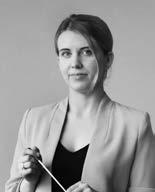
ALIISA NEIGE BARRIÈRE, conductor, was born in 1995 into a French-Finnish family in Paris, where her musical studies have included violin, piano, chamber music and choral as well as orchestral conducting. A passionate chamber musician, Barrière has participated in a great variety of projects and masterclasses throughout Europe and the United States, and is interested in performing all music from baroque to contemporary.
In 2018, Barrière resumed her conducting studies and attended a masterclass with Atso Almila (Sibelius Academy) and Luke Dollman (University of Adelaide) in Zlín, Czech Republic, where she led the Bohuslav Martinů Philharmonic Orchestra in a program ranging from Mozart to Stravinsky. She then joined the Panula Academy in 2018-19 for regular guidance from Jorma Panula. She has since regularly worked as an assistant to conductors such as EsaPekka Salonen, Susanna Mälkki, Sakari Oramo, Pekka Kuusisto, and Ernest MartínezIzquierdo.
In January 2023, Barrière graduated from the master’s program of the orchestral conducting department of the Sibelius Academy (Helsinki) as a student of Sakari Oramo. In 2021-23 she served as the assistant conductor to Dalia Stasevska with Sinfonia Lahti, and held the position of Young Conductor in Residence with the Århus Sinfonietta in Denmark. In 2023, she was awarded the Young Artist Award at the Mikkeli Music Festival.
In 2024, Barrière will be artist in residence of the Turku Music Festival, curating a series of concerts ranging from chamber music to orchestral music around the concept of uchrony, or alternate history.
Both as a conductor and violinist she is a keen advocate of contemporary composers, believing new voices and points of view are more crucial than ever to open dialogues. More generally, she is interested in bringing dramaturgy into the concert halls and strives to bring more experimenting to the way we program and present music.
Barrière is a founding member of many ensembles and groups, including the Hindsgavl Nordic Chamber Orchestra in Denmark, the Norwegian contemporary music ensembles Ensemble Temporum and Ensemble +47, and the string quartet Nordlyd.

JAY CAMPBELL, cello, is actively exploring a wide range of creative music. He has been recognized for approaching both old and new music with the same curiosity and commitment.
The only musician ever to receive two Avery Fisher Career Grants — in 2016 as a soloist, and again in 2019 as a member of the JACK Quartet — Campbell made his concert debut with the New York Philharmonic in 2013 and in 2016, he worked with Alan Gilbert as the artistic director for Ligeti Forward, part of the New York Philharmonic Biennale at the Metropolitan Museum of Art. In 2017, he was artist-inresidence at the Lucerne Festival along with frequent collaborator violinist Patricia Kopatchinskaja, where he gave the premiere of Luca Francesconi’s cello concerto Das Ding Singt. In 2018 he appeared at the Berlin Philharmonie with Deutsches SymphonieOrchester Berlin. He has recorded the concertos of George Perle and Marc-Andre Dalbavie with the Seattle Symphony, and in 2023/2024 will premiere a new concerto, Reverdecer, by Andreia Pinto-Correia with the Gulbenkian Orchestra in Portugal, and in Brazil with the Orquestra Sinfonica do Estado de Sao Paulo.
Campbell’s primary artistic interest is the collaboration with living creative musicians, and he has worked in this capacity with Catherine Lamb, John Luther Adams, Marcos Balter, Tyshawn Sorey, and many others. His close association with John Zorn resulted in two discs of new works for cello, Hen to Pan (2015) and Azoth (2020). Deeply committed as a chamber musician, he is the cellist of the JACK Quartet as well as the Junction
Trio with violinist Stefan Jackiw and pianist Conrad Tao, and multidisciplinary collective AMOC*. Jay Campbell made his Ojai Music Festival debut in 2019 with JACK Quartet under the leadership of Music Director Barbara Hannigan, then returned in 2022 as a member of AMOC*.

LUCY FITZ GIBBON, soprano, is a dynamic musician whose repertoire spans the Renaissance to the present. She believes that creating new works and re-creating those lost in centuries past makes room for the multiplicity and diversity of voices integral to classical music’s future. As such, Fitz Gibbon has given modern premieres of rediscovered works by Baroque composers Francesco Sacrati, Barbara Strozzi, and Agostino Agazzari, as well by 20th century composers including Tadeusz Kassern, Florence Price, and Jean Barraqué. She has also worked closely with numerous others, workshopping and premiering works by Kate Soper, Sheila Silver, Reena Esmail, Roberto Sierra, and Pauline Oliveros, to name a few. In helping to realize the complexities of music beyond written notes, the experience of working with these composers translates to all music: the commitment to faithfully communicate not only the score, but also the underlying intentions of its creator.
In concert, Fitz Gibbon has appeared as a soloist with orchestras including the Saint Paul Chamber Orchestra, Tanglewood Music Center Orchestra; Albany, Eureka, Lexington, Richmond, and Tulsa symphonies, and the American Symphony Orchestra in her Carnegie Hall debut. In 2022-2023, she appeared in concerts presented by Kneisel
Hall, the Copland House, the Philadelphia Chamber Music Society, the Eureka Chamber Music Society, the Sacramento Chamber Music Society, Musicians from Marlboro, and Cornell, Bucknell, and Duke Universities. She also covered the role of Laila in the premiere of Sheila Silver’s A Thousand Splendid Suns with Seattle Opera and appeared in Earl Kim’s Where Grief Slumbers at Boston’s Jordan Hall.
As a recitalist, Fitz Gibbon has appeared with her husband and collaborative partner, pianist Ryan McCullough, in such venues as London’s Wigmore Hall; New York’s Metropolitan Museum of Art, Park Avenue Armory, and Merkin Hall; Philadelphia’s Kimmel Center; and Toronto’s Koerner Hall. Throughout the COVID pandemic, they recorded performances at home and in concert halls to be broadcast around the world. Their discography includes Descent/ Return, featuring works by James Primosch and John Harbison (Albany Records, May 2020) and Beauty Intolerable: Songs of Sheila Silver alongside artists including Dawn Upshaw and Stephanie Blythe (Albany Records, February 2021). A forthcoming album, The Labor of Forgetting, includes the world premiere recording of Katherine Balch’s estrangement.
A graduate of Yale University, Lucy Fitz Gibbon also holds an artist diploma from The Glenn Gould School of the Royal Conservatory and a master’s degree from Bard College-Conservatory’s Graduate Vocal Arts Program; her principal teachers include Monica Whicher, Edith Bers, and Dawn Upshaw. She previously was Interim Director of Vocal Programs at Cornell University and now serves on the faculty of Bard College Conservatory’s Vocal Arts Programs. She also appeared as voice faculty and guest artist for the Kneisel Hall and SongFest summer festivals.
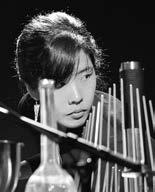
SAE HASHIMOTO, percussion, boasts a versatile career driven by her extensive expertise and constant musical exploration. She excels in classical, baroque, contemporary, and experimental music, showcasing her virtuosity and dedication.
Passionate about modern music, Hashimoto collaborates with renowned contemporary composers like Tyshawn Sorey and Michael Gordon. Notably, she’s premiered several works by John Zorn, recorded on Tzadik label albums. She’s also engaged with orchestral performances, working with groups such as the New York Philharmonic, and is the principal timpanist of Symphony in C.
Hashimoto’s original compositions can be heard in her trio, Archipelago X, alongside Brian Marsella and Ikue Mori. Currently, she’s involved in a project for vibraphone and piano with Marsella, with an album slated for release in 2025.
Hashimoto’s percussion journey began in her fifth-grade music class in Osaka, Japan, where she won a drum set in a game of rock-paper-scissors. After completing her master’s degree at Juilliard, she participated in Carnegie Hall’s Ensemble Connect, combining musical excellence with education and entrepreneurship resides in New York City.
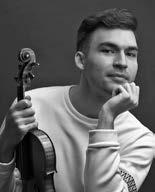
ALEXI KENNEY, violin, is forging a career that defies categorization, following his interests, intuition, and heart. He is equally at home creating experimental programs and commissioning new works, soloing with major orchestras in the United States and abroad, and collaborating with some of the most celebrated musicians of our time. Kenney is the recipient of an Avery Fisher Career Grant and a BorlettiBuitoni Trust Award.
Highlights of Kenney’s 2023/24 season include appearing as soloist with the Dallas, Pittsburgh, and Milwaukee Symphonies, leading a program of his own creation with the New Century Chamber Orchestra, and debuting a new iteration of his project Shifting Ground at the Baryshnikov Arts and now at the Ojai Music Festival, in collaboration with the new media and video artist Xuan. The album version of Shifting Ground will be released in June 2024.
In recent years, Kenney has soloed with The Cleveland Orchestra, San Francisco Symphony, l’Orchestre de la Suisse Romande, Detroit Symphony, Rochester Philharmonic, Indianapolis Symphony, Gulbenkian Orchestra, Saint Paul Chamber Orchestra, Oregon Symphony, Louisville Orchestra, and l’Orchestre de Chambre
de Lausanne, as well as in a play-conduct role as guest leader of the Mahler Chamber Orchestra. He has played recitals at Wigmore Hall, on Carnegie Hall’s ‘Distinctive Debuts’ series, Lincoln Center’s Mostly Mozart Festival, Philadelphia Chamber Music Society, 92nd Street Y, Mecklenberg-Vorpommern Festival, and the Isabella Stewart Gardner Museum. Kenney was the winner of the 2013 Concert Artists Guild Competition and laureate of the 2012 Menuhin Competition.
Chamber music continues to be a major part of Kenney’s life, regularly performing at festivals including Ojai in 2021 with Music Director John Adams, Caramoor, ChamberFest Cleveland, Chamber Music Northwest, Kronberg, La Jolla, Marlboro, Music@Menlo, Ravinia, Seattle, and Spoleto. He is a founding member of Owls—an inverted quartet hailed as a “dream group” by The New York Times—alongside violist Ayane Kozasa, cellist Gabe Cabezas, and cellistcomposer Paul Wiancko. Alexi is also an alum of the Bowers Program (formerly CMS 2) at the Chamber Music Society of Lincoln Center.
Kenney is a graduate of the New England Conservatory in Boston, where he received an Artist Diploma as a student of Miriam Fried and Donald Weilerstein. Previous teachers in the Bay Area include Wei He, Jenny Rudin, and Natasha Fong. He plays a violin made in London by Stefan-Peter Greiner in 2009 and a bow by François-Nicolas Voirin.

LJUBINKA KULISIC, accordion, is originally from Bosnia and Herzegovina, and received her Bachelor’s and Master of Arts in Music Performance from the University of Applied Sciences and Arts of Southern Switzerland in Lugano. After graduating in Switzerland, she moved to Canada for the Doctor of Musical Arts program at the University of Toronto, where she also worked as a teaching assistant for the Contemporary Music Ensemble. In 2017 she participated in Google Talks in San Francisco, where she presented music for accordion to Google engineers. Kulisic participated in numerous concerts across Europe and North America. She has performed as a soloist with the New World Symphony in Miami and at the New England Conservatory in Boston as a member of the organization Music for Food, collaborated with conductor Michael Tilson Thomas and violist Kim Kashkashian.
In addition to music, she is known in her country of birth for her political engagement. As a reward for her activism, in 2017 she was awarded the “Super Woman” award in her hometown, from which she had to escape with her parents as a 1-year-old girl due to civil war.
She speaks four languages: Serbian, English, German, and Italian.

JULIE
SMITHPHILLIPS, harp, principal harpist of the San Diego Symphony Orchestra, is one of the most prominent American harpists today, performing as both an orchestral musician and concert artist. She is a two-time medalist in the USA International Harp Competition, having received the silver medal in 2004 and bronze in 2001. She made her National Symphony Orchestra debut in 2003 and has been honored in numerous other competitions throughout the country.
A recitalist and soloist with orchestra, Phillips’s appearances include multiple solo performances with the New World Symphony, the South Dakota Symphony, the West Los Angeles Symphony, the Corpus Christi Symphony Orchestra, the National Repertory Orchestra, and the Cleveland Institute of Music Orchestra, among others. She has been a featured soloist for American Harp Society National Conferences, the USA International Harp Competition, Lyon & Healy’s 150th Birthday Celebration & Harptacular Concert series, the International Harp Festival, Harp Oklahoma Workshop, and has served as a guest artist at the Young Artist Harp Seminar.
Equally experienced as a chamber and orchestral musician, Phillips collaborates with renowned musicians across the country.
A founding member of The Myriad Trio, she regularly appears in chamber concerts across the country and has performed abroad as well. Her chamber and orchestral festival credits include the Piedmont
& Kingston Chamber Music Festivals, Breckenridge Music Festival, La Jolla SummerFest, Mainly Mozart, Mozaic Festival, Sun Valley Summer Symphony, Tanglewood Music Festival, and numerous others.
Prior to her post in San Diego, she served as acting principal harpist of the Milwaukee Symphony Orchestra and principal harpist for the New World Symphony. Phillips is an avid promoter and performer of new music. Numerous pieces have been written for and premiered by Phillips. She has recorded two albums: The Rhapsodic Harp and The Eye of Night. Phillips received her bachelor’s and master’s degrees in harp performance from the Cleveland Institute of Music, where she studied with Yolanda Kondonassis.

RICK STOTIJN, double bass, studied at the Conservatory in Amsterdam with his father Peter Stotijn and graduated with the highest distinction. He continued his studies with Bozo Paradzik at the Hochschule in Freiburg. He won several first prizes at competitions and was awarded the highest accolade for a musician in the Netherlands, the Dutch Music Prize. According to the jury, “Rick is a versatile musician with moving musicality and overwhelming virtuosity.”
Among the many solo appearances that followed worldwide was a Carte Blanche series in the Recital Hall of the Concertgebouw Amsterdam. Stotijn performs regularly as a soloist with orchestras such as the Swedish Radio
Symphony Orchestra, Amsterdam Sinfonietta, Arnhem Philharmonic Orchestra, the Residentie Orkest Den Haag, South Netherlands Symphony Orchestra, Toulon Opera Symphony Orchestra, Musica Vitae Sweden, and Joensuu Symphony Orchestra. He was principal double bassist in the Rundfunk Sinfonie Orchester Berlin (RSO) and Amsterdam Sinfonietta and is currently principal in the Swedish Radio Symphony Orchestra and Mahler Chamber Orchestra.
As guest principal, he plays regularly in the London Symphony Orchestra, Royal Concertgebouw Orchestra, and Orchestra Mozart. He is also a member of the Chamber Orchestra of Europe. In chamber music, he has worked with Janine Jansen, Christianne Stotijn, Liza Ferschtman, Julius Drake, Cecilia Bernardini, Vilde Frang, Julian Rachlin, Lawrence Power, Tabea Zimmermann, Lars Vogt, Christian Tetzlaff, and many others.
Stotijn is a regular guest at festivals such as the Lucerne Festival, Delft Chamber Music Festival, and the International Chamber Music Festival in Utrecht. Stotijn is a professor at the Robert Schumann Hochschule Düsseldorf. He performs on a Raffaele & Antonio Gagliano double bass, generously loaned by the National Musical Instrument Foundation.

XUAN, new media artist, is also a filmmaker and pianist working at the intersection of music, visual art, and technology.
A trained classical pianist, she actively develops innovative, cross-disciplinary projects that broaden the immersive scope of new music and performance through the lens of “visual music.” Her work encompasses experimental animation, abstract scenography, music videos, interactive installations and large-scale projection mapping. Her music-driven films explore themes of femininity, power, inner conflict, and multicultural identity.
She has collaborated with artists such as Glenn Kotche, Pierre Jodlowski, Ben Wendel, Nina Shekhar, Annika Socolofsky, Eighth Blackbird, Third Coast Percussion, Anzû Quartet, Akropolis Quintet, Nois Quartet, Parhelion Trio, Rubiks Collective, and Ensemble Garage — which have led to live performances at the Metropolitan Museum
of Art, the MCA Chicago, the Smithsonian Museum, University of South Carolina, UNC Chapel Hill, CU Boulder, Carnegie Mellon University, SF Jazz, Le Poisson Rouge, Ad Astra Music Festival, Mizzou International Composers Festival, and CAP UCLA’S Tune In Festival. Xuan was selected to create projections for Art on the MART (2021), “the largest permanent digital art projection in the world” on the on the 2.5-acre façade of the Merchandise Mart in Chicago, in collaboration with Grammy-winning ensemble Eighth Blackbird and Michael Gordon.
Her interactive installations have been exhibited at the ErsterErster Gallery in Berlin; the ibug Urban Art Festival in Reinchenbach; and Design Biennale 2019 in Zürich; the RESCUE Residency in Santo Stefano di Magra, Italy; Sound Forms 2021 in Hong Kong; and at the Rail Yards in Albuquerque, as part of Onebeat’s 10th anniversary celebration in 2022. She was invited to be an artist-in-residence at the Digital Graffiti Festival at Alys Beach in 2023 and the ATLAS B2 Residency in 2024.



Our story as the Ojai Music Festival is possible thanks to you, our Festival family. You inspire us to dream and to plan boldly for the future.
As an audience-supported organization, we are grateful that donations are impactful to the vitality of the Festival. Our community of donors make possible the celebration of each Festival, our free year-round BRAVO music education programs for Ojai Valley public elementary schools, digital offerings, and year-round events.
Thank you. With your support you help bring some of the most influential artistic work to be found anywhere, to this iconic setting. We are truly grateful for every member of the Festival family.
$75,000+
Lenore S. and Bernard A. Greenberg Fund
Terri and Jerry Kohl
Ojai Festival Women’s Committee
Audre Slater Foundation
$50,000-74,999
Art Mentor Foundation Lucerne
Ann Barrett
Colburn Foundation
Dunard Fund USA Ltd
Berta and Frank Gehry
Cathryn and Thomas Krause
Carol and Luther Luedtke
Ida and Glenn Mercer
Jill and Bill Shanbrom, Shanbrom Family Foundation
$25,000-49,999
Michele Brustin
California Arts Council
Cynthia Chapman and Neil Selman
NancyBell Coe and Bill Burke
Kathleen and James Drummy
Kathleen and Jerry Eberhardt
National Endowment for the Arts
Nancy and Barry Sanders
$10,000-24,999
Alice C. Tyler Perpetual Trust
Anonymous (2)
Margaret Bates and Scott Johnson
Carolyn and Jamie Bennett
Hyon Chough and Maurice Singer
Jill Cohen
The Aaron Copland Fund for Music
Constance Eaton and William Hart
Ruth Eliel and Bill Cooney
Stephan M. Farber
Lisa Field
Mechas and Gregory Grinnell
Linda Joyce Hodge
David and Kathy Leeds
Raulee Marcus
Mericos Foundation
The Ojai Vineyard
Ojai Women’s Fund
Claire and David Oxtoby
Pacific Harmony Foundation
Donald Pattison
Koni and Geoff Rich
Rachel Sater and Tom McNalley
Hope Tschopik Schneider
Abby Sher
Shelley and Gregory Smith
Smith-Hobson Foundation Fund
Ventura County Community Foundation
Jane Taylor and Frederic Ohringer
Drs. Bridget Tsao and Bruce Brockman
Gary Wasserman and Charles Kashner
$5,000-$9,999
Amphion Foundation
Sasha and William Anawalt
Barbara Barry
Marjorie Beale and William Meyerhoff
Sue Bienkowksi and Wang Lee
Judy and Merrill Blau
Stephen Block
Kyle and Rodney Boone
Susan Bowey
Lily and Thomas Brod
Pamela Burton and Richard Hertz
Barbara Cohn
Barbara Delaune Warren
Michael Dunn
Mary* and Bill Duxler
Carol Ann Dyer
Ruth Gilliland and Arthur Rieman
Elizabeth A. Greenberg
Chris Hacker and Will Thomas
Mary and Jon Hogen
Leslie Lassiter
Geneva Martin and Patrick D. Garvey
Sharon McNalley
Linda and Ron Phillips
Jennie Prebor and Fred Fisher
Peter Schneider
Howard & Sarah D. Solomon Foundation in honor of Mitsuko Uchida
Anne-Marie Spataru
John and Beverly Stauffer Foundation
Ann and Steven Sunshine
Christine Upton
Susanne Wilson
Joan Wynn
Cathy Zoi and Robin Roy
$2,500-$4,999
Marianne and Abdelmonem Afifi
Betsy Bachman and Bob Tallyn
Barney and Kate Barnhart
E.J. Harrison and Sons
Jan and Arnold Friedman
Susan H. and David L. Hirsch III
Kathryn Lawhun and Mark Shinbrot
Janet Levin and Frank Gruber
Dr. Cheryl Lew
Dorothy Loebl
Margaret and Fredrick Menninger
Joan Oliver
Ann and Harry Oppenheimer
Sandy Robertson and Marshall Donovan
Richard Shafer
Stephanie and Alfred Shuman
Jane and Richard Weirick
Emilia Yin and Emmanuel Sharef
$1,000-$2,499
Susan and Jim Acquistapace in honor of Caroline Pennock Coates Spiller, for giving us our love of music
Susan and Michael Addison
Margaret and Danilo Bach
Mary Baiamonte
Dee Dee Dorskind and Bradley Tabach-Bank
June and Shed* Behar
Beverlee Bickmore and Jim Kelly
Marie and Bruce Botnick
Burnand-Partridge Foundation
Kerri and Dale Climer
Janet Clough and Ara Guzelimian in honor of Lawrence Morton
Nancy and Herb Conley
Barbara and John* Cummings
Carin Dewhirst and William Knutson
Hung Y. Fan and Michael Feldman
Susan Foster
Friends in memory of Rajeev Talwani
Nancy Gallagher
Melissa Gorris
Richard Gould
Susan and Kim Grossman in memory of Ruth Simon
Gina Gutierrez and Gary Richardson
Katie and Jeff Haydon
The Lenny Bruce Lee Memorial Weird Groove Fund
Lauren Hobratsch and Charlie Chang
Gary Hollander
Kathleen Howe and Jerome Burstein in honor of Don Pattison
Naomi and Michael Inaba
Diane and Louis Jackson
Tara Jeffrey
Howard Jelinek
Joan Kemper
Angela and Matt Kilman
Thomas Kren and E. Bruce Robertson
Daniel Lewis
Pamela Melone
Helen Milner
Christian Perry
Joyce Avery Robinson
Regina and Rick Roney
Heather and Bob Sanders
Kenneth Titley and John Schunhoff
Anita Rae Shapiro and Mark Howard Shapiro
Ruth Simon*
Christine Steiner
Peter Strauss and Rachel Ticotin Foundation
Mark Summa
Anne and Tony Thacher
Michael Frazier Thompson in memory of Carol Krause
Libby and Sandy Treadwell
Debra Vilinsky
Sandra Wagner
Christine Yano and Scott Wilson
BRAVO Program in memory of Ginger Wilson
$500-$999
Eleanor Adams
Kay Austen and Craig Houx
Marsha Berman
Diane Bertoy and Jerome Maryniuk
Scott Brinkerhoff
Elisa and Eric Callow in honor of Carolyn and Jamie Bennett
Donna & Marc Caruso in memory of Bob Emirhanian
John B. Dean
James Deane
Fiona Digney and Michael Lee Parker Jr.
Lynne Doherty and Helen Allen
Robert Eisler and Liz Sampson
Karen and Don Evarts
Bob Feldman
Emi Ferguson
Gloria and Thomas Forgea
Andrew Gilman
Kathan and Anthony Glassman
Janet Greenberg and Mark Kempson
Martha Groszewski
Herbert Hemming and Ruth Hemming
Terry Hoffman
Ellen and William Ireland
Hannah and Marshall Kramer
Carole and Charles Magnuson
Carolyn McKnight in memory of Rajeev Talwani
Susan and Joseph Miller
Marilyn Nissenson
Judith Hale Norris and Bill Norris
Julie and Tommy Phillips
Jane Salonen
Lucinda and Tim Setnicka
Marjorie Shapiro and Ian Hinchliffe
Marisa Silver and Ken Kwapis
The Steele Family
Nancy Stewart
Kent Strother
Susan Suriyapa & Luca Ferrero
Ann W Wang
Kevin Wass
Soni Wright
Edward Yeung
$250-$499
Lisa and John Adair
Karen Bailey
Mary Bergen
Priscilla Lambert Brennan
Ross Conner and Emmett Carlson
Esther da Costa Meyer and Christopher Hailey
Donald Dietz
Diana Feinberg
Doris and Caleb Finch
Rachel Fine and Christopher Hawthorne
Jack Fisher
Carol and Paul Gibson
Barry Gold
Caroline and Ralph Grierson
Jeff and Pat Hall
Barbara and Anthony Hirsch
Susan and Steven Hodges
Judith and Sandor Holly
Eric and Cathy Kadison
Robin Kissell and George Kushner
Ana and Stefan Kozak
Efrain Kristal and Romy Sutherland Kristal
David Lea
Lynn Kuttnauer and Richard Lewis
Adam Lowy
Lisa McKinnon
Judy and Ron Milestone in honor of Nancy and Barry Sanders
Hilda Murachanian in memory of Bob Emirhanian
Mary and Weston Naef
Cynthia Nunes and Barbara Nye
Noreen Stimac and Thomas Powers
Aryna Swope and Phil Caruthers
Anna Thomas
Susan and John Trauger
Anna and Bill Wagner
Robin and James Walther
Betsy Watson
Ralph E. Wiggen
$150-$249
Susan Anderson
Ginny Atherton
Roberta Weiser Blau
Francisco Bracho
Jacqueline Burge
Aviva Bergman and Garett Carlson
Lynne Carmichael
Erica and William Clark
Madeline Grass Doss
Anne and James Edwards
Steve Starkey and Olivia Erschen
Susan Feder and Todd Gordon
Leslie Hess in honor of Tara Jeffery
Louie Hopkins and Douglas Mirk
Susan Hubbart
Lynn Kirst
Dulanie Ellis La Barre
Ruthann and Bob Lehrer
Mary Ann Makee
Gillian McManus and Chris Newell
Evelyn Meronk
Jo Anne Miller
Trisha and Todd Mills
Deborah Mintz
Suzy Parker
Maureen Robinson
Lisa Roetzel and Alan Terricciano
Ruth Sayre
Elizabeth Spring and Michael Hince
Roberto Suro
Phillip Thurber
Pamela Tonucci
Arthur and Judith Vander
Glen Wallick
Geoffrey Winterowd
Bonnie Wright
$75-$149
Royce Adams
Lisa and Leslie Anderson
Patricia and Martin Angerman
Robert S. Attiyeh
Susan Bjerre
Suzan Boatman
Thomas Boo
Leni & Jon Boorstin
Soo Borson
Caryn and Charles Bosson
Ruth and Steve Bramson
Louise Burnham Packard and Murray Metcalfe
Lisa Cervantes
Nancy Bankoff Chalifour & Martin Chalifour
Vivian and Eric Chiel
Francine Cooper
Robert Cooper
Peter Corrigan
Donald Crockett
Kerry M. Daniel
Susan and Michael DeMatte in memory of Bob Emirhanian
Laura Denne in honor of Mr. and Mrs. Alan Wood
Pradeep and Ranjit Dhillon
Pamela Drexel
Rosalind Duhon
Suzanne Ecker
Lore and Ted Exner
Judy Fish
Ronald Lee Fleming
Etsu Garfias
Ronald Garrity
Lori Gay
David Gilbert and David Farneth
Jean E Gress
Susie Edberg and Allen Grogan
Carole and Roger Hale
Douglas Halvorsen in honor of Betty and Bob Emirhanian
Judith Herman
Camille and Kingsley Hines
Robert Huebsch
Jeff Ingram
Larry Isberg
Gail Kammermeyer
Clare Kiklowicz
Judy Korin
Carol and Ed Lane
Jason LaPadura and Gary Murphy
Karen Lewis
Sam Marion
John Marshall
Barbara Masters
Angela and Jeffrey McGregor
Susie and Rex Meach
Barbara Multer-Wellin
Carol Munter
Nancy and Malcom Murachanian in memory of Bob Emirhanian
Kazuhikra Nomura
Kathryn Paddock
Frederick Peters
Marlene Pitkow & Mark Kalow
Lori Pond
Susan Reardon
Diana and Bijan Rezvani
Stephen M. Rochford
Mary Ellen Rosenberg
Pamela and Alan Ross
Danner and Arno Schefler
Barbara Schwartz and Thomas Moore
Sandra and Charles Sledd
David Spiro and Richard Ramos
Charles Talmadge
Barry Tavlin
Alice Terrell and Alex Matich
Ellie and Dan Thomas
Dorothy Wagner
Sheila Wald
Barbara and Deric Washburn
Karen Wilson
Kerry Wollam
John Ziegwied
Anne Zimmerman
Up to $75
Emily Agnew
Anonymous
Robin Barris
Serge Becker
Mary Boo
Kathy and John* Broesamle
Isadora Chesler
Marsia Alexander-Clarke
Michael Coles
Megan Conley
Lyn Corum
Edward DeLoreto
Elizabeth Downing
Michele Edelman
Carla Fantozzi
Martie Flickinger
Rodica & Michael Fortner
Joel Freeman
Celeste Gabriele
Daniel Garcia
Margaret Gascoigne in honor of Michael Burkhardt
Andreas Georgi
Brenda L Gertman and Yorel Gertman in honor of Mrs. Florine (Hawkins) Gertman
Sylvia Gertmenian in memory of Bob Emirhanian
Kevin Gilbert
Jonathan F Gunter
Farid Hamedy
Rachel Harris
Denise Heller
Robert Horwitz
Linda Hubert and Gus Hubert in memory of Bob Emirhanian
Joanna Lynn-Jacobs
Lynn Julian
Karen Keenan
Bijan Khamanian
Nancy Kiang
Luc Kleiner
Liza Figueroa Kravinsky
Mike Kravinsky
Bryan Lane and Christina Kim Lane
Sonya Lehto
Jennifer Lewis and Albert Meymarian in memory of Bob Emirhanian
Sue McDonald
Ann and David Millican
Regina Neuman
Judd Parkin
Daniel Petry
Stephen & Sherry Plotkin in memory of Bob Emirhanian
Shauna Quill
Jesus E Quiñonez
Judith Roberts
James Robie
Andrew Rodriguez
Leslie Schenker
Natasha Sherman
Seana Shiffrin
Pam Smith
Wendy Stiver in memory of Susan Svrcek, my friend and colleague who passed far too young
Leah Sullivan
Susan Swinburne
Spencer Toler
J P Townsend
Cynthia Ulman and Lyle Novis
Alberta Warner
Robert Weirich
Leslie Westbrook
Andrea and Bernard White
Christine White
Wayne Wiederhold in memory of Rajeev Talwani
Lorraine Wild
Peter Witte
Kendra Yoes
Hiroko Yoshimoto
Many thanks to all our generous donors. Every effort has been made to accurately list Festival donors (5/16/2023-5/13/2024).
If you have any questions or a correction, please contact Anna Wagner at 805 646 2094.
Ojai Festivals, Ltd. Is a 501 c3 non-profit tax exemption organization.
*Deceased

Innovation is Our LegacyJoin Us in Celebrating Our Story and Inventing the Future
The Ojai Music Festival is a creative laboratory for musical innovation — launching artists’ careers, creating new works, starting musical conversations, and weaving together music, artists, and engaged audiences in the enchanting Ojai Valley. The alchemy of Ojai is recognized and respected nationally and internationally — at a level far beyond its size and resources.
You are a part of our story, and this is a moment to celebrate our shared story, your legacy, and most importantly, the vibrant future to come.
Join us in thanking these visionary supporters who have participated in the Future Forward campaign. Their support gives the Festival the financial freedom to innovate, build capacity, allow artists to realize their vision, making a lasting impact on music worldwide for the next 75 years and beyond.
$1,000,000+
Bernice and Wendell Jeffrey*
$500,000 – 999,999
Marjorie Beale and William Meyerhoff
Cathryn and Tom Krause
Shanbrom Family Foundation
$250,000 – 499,999
Margaret Bates and Scott Johnson
Jamie and Carolyn Bennett
Kathleen and Jerry Eberhardt
Louie Hopkins and Douglas Mirk
Terri and Jerry Kohl
Hope Tschopik Schneider
Esther and Tom* Wachtel
$100,000 - 249,000
Betsy Bachman
Ann and Olin* Barrett
Judy and Merrill Blau
NancyBell Coe and Bill Burke
The Lenore S. and Bernard A. Greenberg Fund
Carol and Luther Luedtke
Ida and Glenn Mercer
Charles Millard*
David L. Nygren
Donald Pattison
$50,000 – 99,999
Michele Brustin
Cynthia Chapman and Neil Selman
Kathleen and James Drummy
Lisa Field
Nancy and Barry Sanders
For the first time in our history, we’ve launched a $13 million campaign to ensure that the Ojai experience you love can be sustained for future generations of musicians and audiences.
Your investment in the Festival’s Future Forward Campaign will:
• Nurture Artistic Excellence
• Cultivate a Creative Laboratory
• Expand BRAVO Education and Community Programs
Join us in our next chapter and help bring the Future Forward!
We welcome all Festival Family members to join in supporting future of the Ojai Music Festival. For more information about how you can be a part of our story, please contact Anna Wagner at (805) 646-3178 or awagner@ojaifestival.org.
$25,000 – 49,999
Anonymous
Hyon Chough and Maurice Singer
Ruth Eliel and William Cooney
Ruth Gilliland and Arthur Rieman
Mechas and Greg Grinnell
Jennie Prebor and Fred Fisher
Elizabeth and Justus Schlichting
Wilson Family Fund, Ventura County
Community Foundation
$10,000 – 24,999
Stephen Block
Susan Bowey
Stephan Farber
Linda Joyce Hodge
Raulee Marcus
Ojai Civic Association
Koni and Geoffrey Rich
Jane Taylor and Frederic Ohringer
up to $9,999
Barney and Kate Barnhart
Pamela Burton and Richard Hertz
Michael Dunn
Kathryn Lawhun and Mark Shinbrot
Pamela Melone
Mark Summa
Bridget Tsao and Bruce Brockman
Gary Wasserman and Charles Kashner
Merrill Williams*
Susanne Wilson
Gifts reflects a comprehensive gift which includes an annual pledge, special campaign gift, or an estate gift.
*Deceased


















THANK YOU! Our steadfast supporters make adventurous and transcendent music possible - year after year.
$1,000,000+
Bernice and Wendell Jeffrey*
Ojai Festival Women’s Committee
The Shanbrom Family Foundation
Esther Wachtell
$500,000-$999,999
Marjorie Beale and William Meyerhoff
James Irvine Foundation
The Walter Lantz Foundation
Terri and Jerry Kohl
Cathryn and Thomas Krause
The Walter Lantz Foundation
Smith-Hobson Foundation Fund, Ventura County Community Foundation
$250,000-$499,999
Art Mentor Foundation Lucerne
Ann and Olin* Barrett
Margaret Bates and Scott Johnson
Carolyn and Jamie Bennett
California Arts Council
NancyBell Coe and Bill Burke
Colburn Foundation
Kathleen and James Drummy
Kathleen and Jerry Eberhardt
Michael Gorfaine, Gorfaine-Schwartz Agency
Lenore S and Bernard A Greenberg Fund
Louie Hopkins and Douglas Mirk
Carolyn Huntsinger*
Daniel Lewis
E. Louise Gooding*
Stuart Meiklejohn
Anne and Stephen J.M. Morris
Thomas W. and Jane Morris
National Endowment for the Arts
Ojai Festival Women’s Committee
Donald Pattison
Nancy and Barry Sanders
Hope Tschopik Schneider
Ventura County Community Foundation
$100,000-$249,999
Anonymous (2)
Betsy Bachman
Sue Bienkowksi and Wang Lee
Judy and Merrill Blau
Michele Brustin
Lainie and Peter Cannon*
Hyon Chough and Maurice Singer
Dunard Fund USA Ltd.
Constance Eaton and William Hart
Ruth Eliel and Bill Cooney
Ann and Gordon Getty Foundation
Richard S. Gould
E.J. Harrison and Sons
Linda Joyce Hodge
Russ Irwin
Sandra* and Jordan Laby
Robert M. Light*
Sharon McNalley
The Andrew W. Mellon Foundation
Ida and Glenn Mercer
Charles Millard III*
Nesbitt Foundation
David L. Nygren
Ojai Valley Inn & Spa
Ann and Harry Oppenheimer
Ralph M. Parsons Foundation
Linda and Ron Phillips
Fred Rothenberg and Jackie Sherman
Catherine and Barry Schifrin
Hope Tschopik Schneider
Abby Sher
Shelley and Gregory Smith
John and Beverly Stauffer Foundation
Bridget Tsao Brockman and Bruce Brockman
Alice C. Tyler Perpetual Trust
Wallis Foundation
Gary Wasserman and Charles Kashner
Jane and Richard Weirick
Nita Whaley and Don Anderson
$50,000-$99,999
Amphion Foundation
Anonymous
Barney and Kate Barnhart
Stephen Block
William H. Brady, III*
Lynn Bremer
William Burr
Castagnola Family Fund
Cynthia Chapman and Neil Selman
Janet Clough and Ara Guzelimian
Richard Colburn*
Joanne Ernst and James Collins
The Aaron Copland Fund
Zoe and Donald Cosgrove*
Robert C. Davis, Jr
Barbara Delaune Warren
Carlos Diniz*
Christine and Sanford Drucker*
Mary* and Bill Duxler
Louise and Brad Edgerton
Stephan M. Farber
Betty Freeman*
Berta and Frank Gehry
Eve Steele and Peter Gelles
Bernard Gondos*
Mechas and Gregory Grinnell
Mary and Jon Hogen
Margaret Bates and Scott Johnson
Joan Kemper
Leslie Lassiter
Dorothy Loebl
Carol and Luther Luedtke
Ginny Mancini
Raulee Marcus
Pamela Melone
Margaret and Fredrick Menninger
Mericos Foundation
Metabolic Studio, Annenberg Foundation
Nancy and William Myers*
Neubauer Family Foundation
Shelby Notkin
Ojai Women’s Fund
Claire and David Oxtoby
Pacific Harmony Foundation
Donald Pattison
Jennie Prebor and Fred Fisher
Jan and Alan* Rains
Ruth Gilliland and Arthur Rieman
Judith and Ronald* Rosen
Rotary Club of Ojai
Elizabeth and Justus Schlichting
The Barbara Barnard Smith Fund for World Musics
Wade Family Trust
Marilyn Wallace
Jeanne C. Wanlass
Wells Fargo Bank
Ginger and John Wilson*
Susanne Wilson
Wood-Claeyssens Foundation
*Deceased
THANK YOU, our longtime Festival patrons, attending year after year for a decade or more. You are why we exist. We are grateful for your longstanding appreciation of adventurous music.
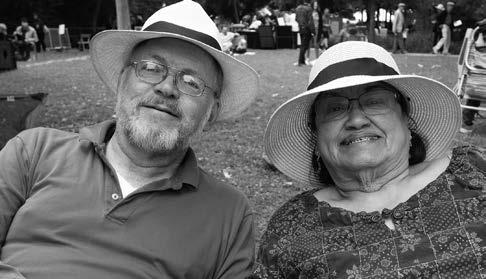
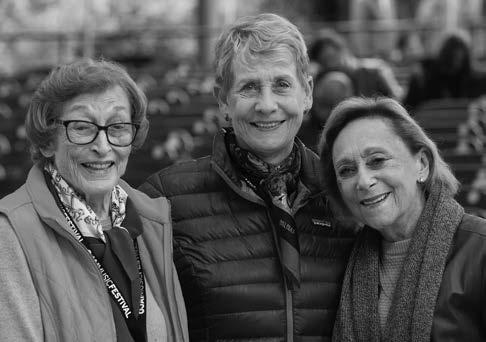
SINCE 1940s
Diane and Louis Jackson
The Steele Family
SINCE 1950s
Elisa Callow
Tony Thacher
SINCE 1960s
Diane Eisenman
Betty and Robert Emirhanian
Caroline and Ralph Grierson
John May
Mark Swed
SINCE 1970s
Beverlee Bickmore and Jim Kelly
Barbara and John Cummings
Robert C. Davis
Richard Ginell
Anthony Glassman
Judith Holly
Patrick Scott and Mark Hilt
Eric and Cathy Kadison
Susan and Joseph Miller
Mark Summa
Esther Wachtell
SINCE 1980s
Marsia Alexander-Clarke
Kate and Barney Barnhart
Maureen Bauman and Isaac Malitz
Elisabeth Clark
NancyBell Coe
Michael Dunn
Mary* and William Duxler
Diane and Allen* Eisenman
James Farber
Jan and Mark Fisher
Gloria and Tom Forgea
Moey and Bruce Gilman
Peggy Grossman and Josef Woodard
Linda Joyce Hodge
Jude Sharp and Jack Jackson
Joan Kemper
Lorraine Lim and Glenn Fout
Margaret and Fredrick Menninger
Annat Provo
Stephen Rochford
Jonathan Said
Helen and Justus Schlichting
Jill and William Shanbrom
Jude Sharp and Jack Jackson
Noreen Stimac and Thomas Powers
Anna Thomas
Bridget Tsao Brockman and Bruce Brockman
Roberta Weiser Blau and Carl Blau
Susanne and Blake* Wilson
Lisa and John Adair
Marianne and Abdelmonem Afifi
Lisa Anderson
Patricia and Martin Angerman
Ginny Atherton
Kay Austen and Craig Houx
Margaret and Danilo Bach
Marjorie Beale and William Meyerhoff
June and Shed* Behar
Jeanette and Joel Berkovitz
Caryn and Charles Bosson
Marie and Bruce Botnick
Diana Burman
Pamela Burton and Richard Hertz
Eric and Elisa Callow
Debra Cohen and Thomas Stahl
Francine T. and Herb* Cooper
Peter Corrigan
Kathleen Crandall
Donald Crockett
Edward and William Deloreto
Lynne Doherty and Helen Allen
Richard Dolen
Sharon and Robert Eaton
Ruth Eliel and William Cooney
Gerald Faris
Diana Feinberg
Maudette* and Frank Finck
Susan Foster
Ruth Gilliland and Arthur Rieman
Linda Granat
Lennie and Bernie Greenberg
Rave Gunewardena and Frank Escher
Camille and Kingsley Hines
Barbara and Anthony Hirsch
Marcia* and Gary Hollander
Essie and David Horwitz
Cynthia Kaplan
Joan Huang-Kraft
Cathryn and Tom Krause
Susan and David Kuehn
Karen and Craig* Lewis
Hannah Maclaren
Lisa McKinnon
Tom McNalley
Raffi and Myrna Mesrobian
Anne and Stephen J.M. Morris
Wyant Morton
Mary and Weston Naef
Victoria Nightingale
Cynthia Nunes and Barbara Nye
Ann and Harry Oppenheimer
Nancy Pepper
Nancy Perloff and Robert Lempert
Joan Passell and Peter Peters
Daniel Petry
Linda and Ron Phillips
Paris Poirier
Stephen Pope
Sylvia and Shlomo Raz
Emilie Robertson
Linda Rudell-Betts and John Betts
Barry and Nancy Sanders
Heather and Bob Sanders
Catherine and Barry Schifrin
Barbara Schwartz
Anita Rae Shapiro and Mark Howard Shapiro
Ken Kwapis and Marisa Silver
Ellen Sklarz and Peter Thielke
Elizabeth Spring and Michael Hince
Christine Steiner
Kit Stolz
Ann and Steven Sunshine
Kenneth Titley and John Schunhoff
Christine Upton
Glen Wallick
Barbara and Deric Washburn
Susan and Michael Weaver
Ed Yim
Caroline Allen
Joyce and Ronald Allin
Sasha and William Anawalt
Susan Anderson
Barbara Aran and Lawrence Hawley
Elizabeth Bachman
Karen Bailey
Marjorie Beale and William Meyerhoff
Mary Bergen
Susan Bienkowski and Wang C. Lee
Rosalyn Bloch
Susan Bloom and Dirk Farner
Kyle and Rodney Boone
Francisco Bracho
Bret Bradigan
Thomas and Lily Brod
Joseph Bulock
Betye Burton
Cindy Pitou Burton
Lisa Cervantes
Nancy Bankoff Chalifour
Tina Chappel and Thomas Lane
Maurice Singer and Hyon Chough
Brooks Cochran
Debra Cohen and Thomas Stahl
Sheila and Sidney* Cohn
Annete Colfax and Tom Wilson
Ross Conner and Emmett Carlson
Kyle and Stuart Crowner
Nava and Gabriel Danovitch
Juanita J. Davis and Dan Saucedo
Barbara Delaune Warren
Carin Dewhirst and William Knutson
Kathy and Jim Drummy
Jerry Eberhardt
Karen and Don Evarts
David Falconer
Judy Fish
Barry Forman
Kimberly Fox and Robert Fink
Pablo Frasconi
Jan and Arnold Friedman
Carol Garramone
Berta and Frank Gehry
Andreas Georgi
Martha Groszewski
Gina Gutierrez and Gary Richardson
Herbert Hemming and Ruth Hemming
Sasha Heslip
Mary Ann Hill and Laszlo Engelman
Susan and Steven Hodges
Terry Hoffman
Farzaneh and Brian Hulan
Naomi and Michael Inaba
Jeff Ingram
Diana Kelly
Ruth Lasell and Robert Bonewitz
Lydia and Scott Lawson
Lynda and Stan Levy
Cheryl Lew
Daniel Lewis
Mary and Robert Lynch
Raulee Marcus
Geneva Martin and Patrick Garvey
Morency Maxwell
Christina and Todd McGinley
Carolyn McKnight and Rajeev Talwani*
Gillian McManus and Chris Newell
Sharon McNalley
Pamela Melone
Carla Melson
Elizabeth Memel
George Mood
Thomas and Jane Morris
Nomi Morris
Lena Muniz
Sara Munshin
Stacey Nakasone
Jennifer and Richard Niles
Victoria and Thomas Ostwald
Claire and David Oxtoby
Donald Pattison
Christian Perry
Lisa Roetzel and Alan Terricciano
Peggy and John Russell
Louise Sandhaus and Michael Shapiro
Ruth Sayre
Leah and Norm Schweitzer
Susan Scott
Lucinda Setnicka
Abby Sher
Thomas Moore and Barbara Schwartz
Shelley and Gregory Smith
Nancy and Rob* Stewart
Susan Suriyapa and Luca Ferrero
Aryna Swope and Phil Caruthers
Alice Terrell and Alex Matich
Susan Tova and Lawrence Clevenson
Hope Tschopik Schneider
Judy and Art Vander
Anna Wagner
Jill and John Walsh
Robin and James Walther
Leslie Westbrook
Andrea and Bernard White
Geoffrey Winterowd
Kathy and Larry Yee
Charles Zeltzer
Anne Zimmerman
Susan and Michael Addison
Elizabeth Alvarez
Lani Asher
Mary Baiamonte
Ann Barrett
Margaret Bates and Scott Johnson
Carolyn and Jamie Bennett
Richard Bentley
John Berezney
Judy and Merrill Blau
Scott Brinkerhoff
Nova Clite and Neil Schleimer
Barbara Cohn
Jared Dawson
Jane Deknatel and John Seddon
Stuart and Beverly Denenberg
Charles Donelan
Cynthia and David Dunlop
Carol Ann Dyer
Adrienne Edgar
Doris and Caleb Finch
Bonnie Freeman
Jocelyn Gibbs
Robina and Rene Goiffon
Susan and David Hirsch
Louie Hopkins and Douglas Mirk
Ellen and William Ireland
Anne Johnstone
Clare Kiklowicz
Hannah and Marshall Kramer
Kathryn Lawhun and Mark Shinbrot
Sheila McCue
Sue McDonald
Christina McPhee
Maxine Meltzer and Douglas Whitney
Ida and Glenn Mercer
Helen Milner
Rusti and Steven Moffic
Rex Moser
Anthony Parr
Krisanto Pranata
Jennie Prebor and Fred Fisher
Joyce A. Robinson
Nikki Scandalios
Catherine Sharkey
Kathy Solomon and Bob Burchman
Eva Soltes
Elizabeth St. Clair
Libby and Sandy Treadwell
Sandra Wagner
Gary Wasserman and Charles Kashner
Joann Yabroff
We have made every effort to accurately list our longtime attendees and regret any errors or omissions.
Please stop by our Box Office if you have any questions or changes

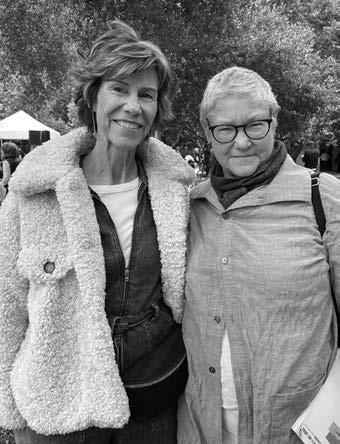
Our patrons are an important part of the Festival’s unmatched legacy and story. We enjoy hearing about favorite Festival moments or what the Festival means in their own musical journeys.


Sierra Dudas
I first learned about the Ojai Music Festival during my freshman year of college. I had just moved to Los Angeles to study Music Industry at USC and was eager to learn! That summer in Ojai was magical: I learned so much about marketing & event production and made lifelong connections with peers who loved music just as much as I did.
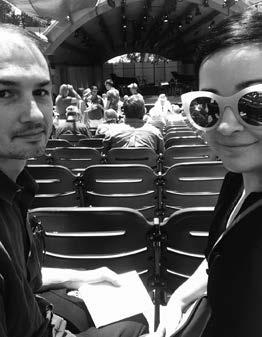
Luca and Susan Suriyapa
It is morning at the Besant Hill School auditorium in June 2016. We are still a little sleepy from the full day of music the day before, late-night concert included. Through the partial opening of the backstage door, the sun is finally breaking through the morning fog. As the Calder Quarter begins to pluck at their instruments, the silhouette of a bare-footed, white-clad, and statuary Davóne Tines appears. His baritone-bass voice, unknown to us all, starts singing and reciting Caroline Shaw’s By and By with such musical and emotional sensitivity and depth that we cannot but shed tears. And so does Caroline Shaw, sitting next to us, so intensely shaken by hearing and seeing her composition come to this new glowing life. And so it goes, another one of the many times at the Ojai Music Festival when we share our love of music (and some tears) with fellow music lovers, musicians, and composers.

Diana and Bijan Rezvani
Our first experience of the Ojai Music Festival was also our first visit to Ojai, and we knew that we had come across something special. Each year we’re given an opportunity to set time aside and participate in an immersive, guided exploration of music and creativity. We always leave with something new. The design and execution of every aspect of this Festival can only be the result of immense consideration, work, and passion.
Lisa Casoni
My favorite thing about the Ojai Music Festival is how surprising it is. I like that it’s not in one venue but in multiple spaces, and how it has evolved. It’s literally changed how I see the art form.
Have a story to share?
Visit our Festival booth in Libbey Park and we’d love to document it for you!

THANK YOU! Matilija Society Members are generous donors to the Festival Endowment or have included the Festival in their estate plans.
Matilija Society Members help the Festival to be bold and pioneering in its artistic programs, while deeply influencing the Festival’s capacity to carry out its mission.
We gratefully acknowledge the following Matilija Society members who have included the Ojai Music Festival in their estate plans:
Betsy Bachman
Margaret Bates and Scott Johnson
Marjorie Beale and William Meyerhoff
Carolyn and Jamie Bennett
Judy and Merrill Blau
NancyBell Coe
Sheila* and Don Cluff
Lynne Doherty
Kathleen and Jerry Eberhardt
Theresa and Jeff Ferguson
Ruth Gilliland and Arthur Rieman
Richard S. Gould
Frank* and Linda Granat
Cathryn and Tom Krause
Louie Hopkins and Douglas Mirk
Russ Irwin
Raulee Marcus
Anne and Stephen J.M. Morris
David Nygren
Don Pattison
Laura and William* Peck
Hope Tschopik Schneider
Leslie Westbrook
Nita Whaley and Don Anderson
Should your name appear here? If so, please tell us about it!
We can tell the world or keep it quiet if you want to stay anonymous. Either way, knowing about your plans will help us to better prepare for the future.
Making a planned gift is a wonderful way to show your support for the Ojai Music Festival, while achieving your own philanthropic, estate-planning, and financial goals. Planned gifts can benefit you and your loved ones today and, in the future, and allow the Festival to provide innovative musical programming, create groundbreaking new work, engage students and learners of all ages through arts education, while securing this creative laboratory for generations to come.
We encourage you to discuss your planned gift confidentially with the Ojai Music Festival. Please contact Anna Wagner, Director of Philanthropy at (805) 646-3178 or awagner@ojaifestival.org
Our heartfelt thanks to the following supporters of the Ojai Music Festival Endowment:
Barney and Kate Barnhart
Betsy Bachman
Meg Bates and Scott Johnson
Marjorie Beale and William Meyerhoff
June and Shed* Behar
Karen Marie Bellavita
Jamie and Carolyn Bennett
Lerie Bjornstedt*
Judy and Merrill Blau
Barbara Bowman and Sol de la Torre Bueno
Witold Brabec
William H. Brady, III*
Marion and William Burke*
Lainie and Peter Cannon*
Ara Guzelimian and Janet Clough, in memory of Lawrence Morton
Don and Sheila* Cluff
NancyBell Coe and Bill Burke
Colburn Foundation
Jennifer Coleman
Molly Cook
Joan Davidson
Robert C. Davis, Jr
Carlos Diniz*
Lynne Doherty and Helen Allen
Christine and Sanford Drucker*
Constance Eaton and William Hart
Merilee* and Samuel Eaton
Kathleen and Jerry Eberhardt
Mercedes H. Eichholz*
Yvette Ellis*
Betty and Robert* Emirhanian
Harriette and Robert Erickson*
Evans Foundation
Theresa and Jeff Ferguson
Lorraine Holve Finch
Frank and Maudette* Fink Fund
Frances Fitting
Ernest Fleischmann*
Kate and Richard Godfrey
E. Louise Gooding*
Helene Gordon and Bill Blackburn
Richard S. Gould
Dennis Gould
Virginia and Richard Gould*
Linda and Frank* Granat
Caroline and Ralph Grierson
Ginger Harmon*
Philip Heckscher
Janette and Richard Hellmann
Louie Hopkins and Douglas Mirk
Natalia and Michael Howe
Carolyn Huntsinger*
Nancy Huntsinger
Russ Irwin
Betty Izant*
Barbara Jackman
Bernice and Wendell Jeffrey*
Edith and Jack Jungmeyer*
Jorjana and Roger Kellaway
Joan Kemper
Pat Kennedy*
Margaret Krauss
Muriel Lavender
Robert M. Light*
Andree Lindow
Dorothy Loebl
Jon Lovelace*
Carol and Luther Luedtke
Raulee Marcus
Elise Marvin*
Martha and Thomas May
Zelda and Dennis McCarthy
Quentin McKenna*
Pamela Melone
Margaret and Fritz Menninger
Lolita and Joe Metscher
Charles Millard III*
Rachael and Philip Moncharsh
Thomas W. and Jane Morris
Anne and Stephen J.M. Morris
William Myers*
Sandi Nicholson
Marianne and Philip Nielsen
Victoria Nightingale
Maj. Gen. Frank Norris
David L. Nygren
Donald Pattison
Laura and William* Peck
Barbara and Martin Pops
Ruth and Rodney Punt
Claire Rantoul
Alice and Robert* Rene
John Rex*
Susan and Mark Robinson
Merle and Hans Schiff
Jill and Bill Shanbrom, Shanbrom Family Foundation
Helen and Edward Shanbrom*
Dorothy and Richard Sheahan*
Harry Sims*
Ellen Sklarz and Peter Thielke
Paula Spellman
Melody and John Taft
Sheila Tepper
Margaret Thomas*
Charlotte and Charles Thompson
Glenda Tippett*
Hope Tschopik Schneider
Ventura County Community Foundation
Joan and William Vogel
Patricia Weinberger*
Jane and Richard Weirick
Harriet Wenig*
Joyce and Allan West
Leslie Westbrook
Nita Whaley and Don Anderson
Julia and Marc Whitman
Margaret and Philip Williams
Susanne and Blake* Wilson
Helen Wolff
Constance Wood
Willard Wyman
*Deceased

The BRAVO program brings beauty into the lives of children. Music can calm us. Lyrics speak to our hearts as poetry. We all wish we could sing and dance more often. Let’s build compassion through music. Let’s create more goodness in the world, that which makes us feel alive.
BRAVO EDUCATION COORDINATOR
Laura Walter
EDUCATION COMMITTEE
Bridget Brockman, Co-Chair
Judy Fish, Co-Chair
Kathy Broesamle
Laura Denne
Lynne Doherty
Rosanne Forgette
Gina Gutierrez
Martha Highfill
Audrey McPherson
Jane Roberts
Michelle Sherman
Lillian Tally
Joann Yabroff
INSTITUTIONAL FUNDERS
Alice C. Tyler Perpetual Trust
California Arts Council
John and Beverly Stauffer Foundation
Ojai Festival Women’s Committee
Ojai Valley School -
Barbara Barnard Smith Fund
Ojai Women’s Fund
Santa Barbara Symphony Music Van
ARTISTS-IN-RESIDENCE
Shelley Burgon
David Cipriani
Rosanne Forgette
Kathleen Robertson
Ruben Salinas
Julie Tumamait-Stenslie
BRAVO VOLUNTEERS
Helen Allen
Babette and Bob
Betsy Bachman
Fern Barishman
Jim Bell
Chloe Biondo
Dave Cipriani
Kerri Climer & Friends
Aidan Connelly
Caressa Cowan
Laurel Crary
Kim Eck
Michael Estwanik
Alex Fager
Jodie Farrell
Deborah Finley
Rosanne Forgette
Jackie Francis
Donna Freiermuth
Andy Gilman
Even for the majority of students who do not end up in music careers, exposing students to beauty through music education has value because it gives them the chance to create meaningful art. In turn, this grows a creative skillset and builds confidence.
Beauty is important to recognize in education because of its powerful impacts on the way students learn. It increases engagement and memory. It sparks creativity. Appreciation of music making gives people a personal connection. Our work helps children thrive. We all learn to value diversity and care for each other through making music and art together.
Music can give us strength, highlight feelings and sensations of excitement and thrill. Joy and love last longer than just this moment.
—LAURA WALTER, BRAVO education coordinator3,500 Children Served
1,207 Workshops
57 Classrooms
30,460 Direct experiences
Abby Gonzales
Louis Grace
Bonnie Griffin
Martha Highfill
Sophie Holt
Raul Kottler
Madrigali
Fran Malinoff
Leigh Ann McDonald
Don Midgett
Lynn Mullins
Gloria Namugga
Karen Nelson
Cathy Newman
Ojai Library Ukulele
Group
Ann Oppenheimer
Nancy Pepper
Cindy Pitou-Burton
Razzberry Jam
Dori Riggs
Jackie Ringhoff
Joyce Robinson
Anna and Mattie Rowlands
Kate Russell
Santa Barbara County
Flute Ensemble
Ruby Skye
Gail Smith
Starlight Quartet
Ray Sullivan
Morgan Swaidan
Tracy Sweetland
Lisa Tkacheck
Judy Vander
Randee Vasilakos
JB White
Reggie Wood
Kendra Yoes
Fereschta Zamadi-Sinclair
The Ojai Music Festival BRAVO program brings music and joy to local students and the Ojai community through educational workshops, interactive demonstrations, and free concerts.
BRAVO PROGRAMS INCLUDE:
EDUCATION THROUGH MUSIC brings interactive song and play to students in grades TK-3, building empathy, intelligence, and cooperation. Experiences with pitch and rhythm prepare students for further musical experience and increase language and math literacy.
IMAGINE Concert is presented for fourth-sixth grade students. In collaboration with Ojai Valley School and the Barbara Barnard Smith Fund, more than 700 students and 100 adults enjoy music and dance from around the world. Audience members were recently treated to a performance of The Middle Eastern Music Ensemble. In addition, the Festival holds free community concerts during the annual Festival in June.
Our MUSIC VAN visits four Ojai Valley schools and two Ventura-area schools to encourage children to choose their favorite instrument to learn in their own school programs. Everyone learned about sound vibrations and tried every instrument. Special thanks to the Santa Barbara Symphony for the use of its Music Van.



BRIDGE Program enriches our world through interactions of third grade students with our local seniors through music and song games. Children invite the residents to join them in walking or skipping, or even just staying in their place and having a turn in the song! We introduce ourselves and find out about the lives of the residents, all while singing folk songs.

SCORE is BRAVO’s new music composition enrichment class for public high school students, coordinated by Emily Praetorius with Nordhoff High School music teacher Bill Wagner. The class provides the tools and guidance necessary for students to compose their own musical works, culminating in an endof-year concert where the student pieces are performed. Listening sessions, composition lessons, and guest speakers enhance the class’s exploration of musical composition and contemporary music in general.
MUSIC AND ARTS CAMP is a program held two times during summer. Children and teachers sing, play, and explore art and storytelling in an interactive environment. We move, we build imagination, and we work together!

ARTISTS IN RESIDENCE Program conducts inschool workshops with professional musicians, including Chumash song and dance, violin, jazz saxophone, Indian slide guitar, harp, and drumming. The program teaches students about history, geography, and world cultures through music.



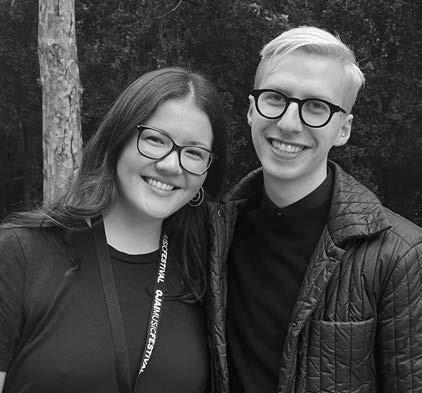
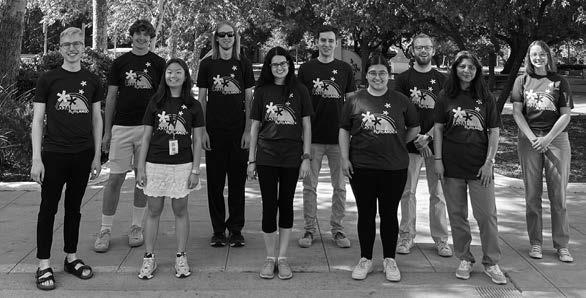
“Unique mentorship experiences with the Festival’s staff allowed me to explore different facets of the industry and deepen my commitment to further developing as a well-rounded arts administrator.”
—LANDON WILSON, MANHATTAN SCHOOL OF MUSIC OJAI ALUMNUS 2023
The Festival’s Arts Management Internship program welcomes college students and recent graduates to go behind the scenes working closely with the staff and production team and gain invaluable hands-on experience for their future careers.
Festival interns have gone on to have successful careers in both the nonprofit and for-profit sectors. Those who have gone on to work in the arts have done so at organizations across the country, including AMOC*, Ojai Music Festival, San Diego Symphony, Pacific Symphony, Early Music Guild of Seattle, and Voices of Change, as well as forged new paths as entrepreneurial performing artists and composers.
Colleges and universities represented have included Berklee School of Music, Boston University, CalArts, California Lutheran University, Cal State UniversityLong Beach, Manhattan School of Music, Occidental College, San Diego State University, Stanford University, UCLA, USC, Moorpark College, and Westmont College
Ojai Music Festival Internship Fellow
The 2024 Ojai Music Festival Intern Fellow is Hitesh Benny who is a returning intern from the 2023 Festival and a 2022 volunteer. Hitesh wrote, “Whether it be learning how to communicate confidently and authoritatively, or how to balance my emotions, desires, and longings when there are various duties at hand. Ojai allows me to be myself, and in doing so, I am able to learn what it is that inspires me and how I can be of service to it.”
The Ojai Music Festival wishes to express our deepest gratitude to the following:
Ashly Piano Crafts
Besant Hill School/Alex Smith
Barbara Bowman
Ed Brooks
City of Ojai
Cohen Siderow Wine Imports LLC/Jill Cohen
Custom Printing
Gold Coast Ambulance
Joan Kemper
Kathie Kottler
LA Percussion Rentals
LS Promotions/Linda Schimmel
Lorraine Lim Catering
Music Academy
Nordhoff High School Music Department/Bill Wagner
Ojai Citrus Growers
Ojai Presbyterian Church
Ojai Valley Museum
Ojai Valley School/Tracy Wilson
Ojai Wesleyan Church/Pastor Lyn Thomas
Pacific Western Bank
Pinhole Coffee
SANE Living Center
Steinway & Sons LA/Benjamin Salisbury
Ventura County Sheriff’s Office, Ojai Station
Ventura Rental Center
Ventura Water Store
Viper Security
Westridge Market
Heartfelt thanks to the Ojai Festival Women’s Committee for all they do in support of the Festival throughout the year. Special thanks to those members who host the Festival Lounge.
An important part of the Ojai Music Festival community is the housing hosts. They graciously open their homes every year to visiting artists, interns, and the production crew. Their wonderful hospitality makes each visit a memorable occasion for Festival guests. If you are interested in being a Housing Host, call Deirdre Daly at 805 646 2094 or email ddaly@ojaifestival.org.

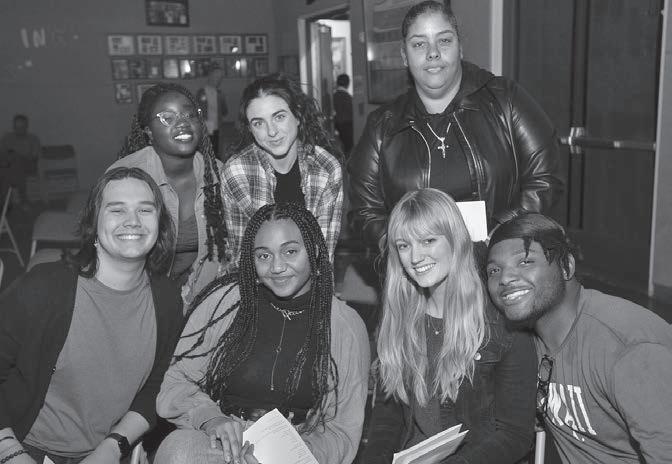
OJAINEXT is Ojai Music Festival’s free program to welcome and build community for new audience members – from college students, recent college grads, to young professionals.
Whether you’re a long-time classical music lover or simply curious about this yearly Ojai staple, look at our various perks to help welcome you to the Ojai Festival community.
• Invitations to special events throughout the year
• Discounts on select Festival concerts
• Drink voucher for the Green Room in the Park
• An invitation to the OJAINEXT member event during the Festival
Learn more about OJAINEXT at OjaiFestival.org/OJAINEXT or ask our Box Office staff how to get involved.



Since the Ojai Music Festival’s founding in 1947, volunteers have ensured the enduring success of the organization, from our renowned four-day Festival to our acclaimed BRAVO music education program. Many thanks to this year’s wonderful community of volunteers for their tireless efforts and kindness.
Vicki Aubert
Kristen Babauta
Paula Bignardi
Bob Birk
Charlie Bosson
Tom Boyles*
Ursula Britton*
Dianne Bullard
Kat Burke
Jenny Silber Butah
Susan Carpenito
Kelly Carrol
Tessa Devoe
Christine Fenn
Mary Fleming
Jacqueline Francis
Eva Gelpi
Wendy Gray
Kim Halter
Jodine Hammerand
Angela Petite Hayes
Gretchen Hays*
Jill Helson
Nicole Jahng
Athena Kahler
Kathy Kelly
Vera Kibler
Christina Kim Lane
Teri La Pata
Jordana Lawrence
Sophie Loire
Robin Marbelle
Sheila McCue
April McDermott
Stacey Miller McDermott
Carrie McDonough
Audrey McPherson
Allison Monahan
Kasey Moore
Tisha Morris
Karen Nelson
Denise Ondishko
Peter Parziale*
Maggie Pfeffer
Cristy Poulos
Kate Russell
Beverly Schuberth
Carla Sherman
*Special thanks to our long-time volunteers who have been volunteering for 10-plus years.
Laurie Shrage
Toni Solis
Tracy Sweetland
Jacob Thompson
Christopher Ulivo
Gretta Ulivo
Barry Verga
Ruth Walker
Brian Wetzel
Christine White
Sonia Wilczewski
Michael Williams
Devoney Wolfus
Kari Worden
Mary Ann Zalokar
list as of May 13, 2024
If you are interested in volunteering at next year’s Festival, please email info@ojaifestival.org.
ARA GUZELIMIAN Artistic and Executive Director
GINA GUTIERREZ Managing Director and Director of Marketing
ANNA WAGNER Director of Philanthropy
FIONA DIGNEY Producer and Artistic Administrator
AMBER YOUNG Operations and Events Manager
BRYAN LANE Patron Services Manager
LYNN DUBOUX Finance Operations Manager
MADELINE DOSS Patron Services and Development Associate
LAURA WALTER BRAVO Education Coordinator
KATHRYN STURCH Technical Production Manager
MELISSA SOMRACK GORRIS Libbey Bowl Stage Manager
JONATHAN BERGERON Associate Producer
ANNA DROZDOWSKI Greenberg Center Stage Manager
MADDI BAIRD Libbey Park Stage Manager
MARK GREY
Sound Designer and Head Audio Engineer
NATHAN GRATER Associate Sound Designer
TOBY TITTLE Monitor Engineer
CHRISTINA GASPARICH Sound Assistant
NICHOLAS HOUFEK
Lighting Designer and Light Board Operator
MOMENTUM MEDIA / VINCE PECCHI Lighting Provider
KEITH FENTON
DAVID GUTHRIE
ALEX HALL-MOUNSEY
KIRK ZAHARRIS Lighting Techs
CLAIRE CLEARY Associate Lighting Designer
MIKE’S TECHNICAL SERVICES/ MIKE TREGLER Ancillary Event Engineer
JOEL BERNACHE Steinway Piano Technician
RICHARD NEWSHAM Green Room Manager
MICHAEL COOLEY Rigger
DOOJIE SELINGER Stage Crew
LANDON WILSON Artist Liaison
TRISTAN COOK Live Stream Director
GROPIOUS PRODUCTION/ WALTER PARK Live Streaming Production Company
RAY SULLIVAN Operations Crew Lead
EMILY DEL SIGNORE
SHANE SCHAFER
BRAYDEN MALLECK Operations Crew
CARISSA CORRIGAN Operations Assistant
DEIRDRE DALY Housing Manager
CAITLIN PRAETORIUS House Manager
JUDITH PIAZZA Associate House Manager
MATTHEW ARAT
MARCO MENDIZABAL ARAUZ
JANE ROBERTS
TERRY WRIGHT Head Ushers
MARY ANN MAKEE Front of House Consultant
BRIAN TURNER Patrol Manager
JONATHAN ABE
DAVID ABE
STEVE HOLLAND
SEAN MCHALE
HOLLY MEADORS
DAVID SEIBLE
LINDA SEIBLE
RAFAEL SIERRA
MARSHALL THOMAS
BRIAN TURNER
BRIANNA TURNER
MCKENNA TURNER
JIM VERKUIL Patrol Team
KATHERINE HARTLEY
GEORGE
ELIZABETH SPILLER
DOMINIQUE WRIGHT Retail & Concessions Team
SHEILA COHN Festival Concierge
TIMOTHY TEAGUE Photographer
JOE NORRIS
JOHN BOWMAN Parking
NIKKI SCANDALIOS Public Relations
KERI SETNICKA Social Media Coordinator
JERRY MARYNIUK, MD Medical Tent Volunteer Coordinator
TARA SAYLOR Volunteer Coordinator
LYNN MALONE Suppers in the Park Coordinator
GLENDA YOUNG Craft Services
LORRAINE LIM CATERING Catering Services
MIMI ARCHIE Festival Creative Art Direction
KATHLEEN KENNEDY Program Book Graphic Design
BITVISION TECHNOLOGY IT Providers
DOMINIQUE WRIGHT Assistant Intern Coordinator
HITESH BENNY Ojai Music Festival Fellow
NICHOLAS BALDWIN
KYLIE CLOUTIER
MIA CONDON
GENNA EBERHARD
SAM GERIKE
SOPHIE LITTLE
MEGAN MORROW
MARIAH DIVIANNE MUSNI
LILY OWENS
QUINN ROSENBERG
ZOLA SAADI-KLEIN
LAUREN SEBASTIAN
NICOLE STIDHAM Interns

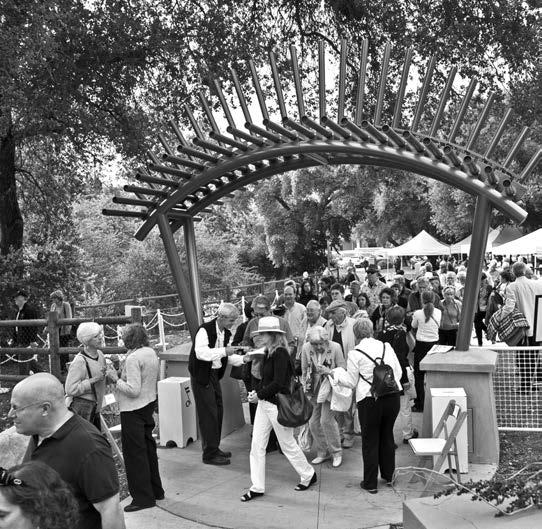

E.J. Harrison & Sons 25 Frederick Fisher and Partners
Gables of Ojai 69 Heritage Financial 59 Humane Society of Ventura County 12 Integrity Wealth Advisors 13 Johnson Fain (Architecture,
Design + Planning, Interiors)
Ojai Valley Real Estate
BC Patty Waltcher/Berkshire Hathaway
32 Sharon Maharry/Berkshire Hathaway
100 Santa Barbara Travel/Sheila Cohn 61 Sound Post Capital 30 Topa Topa Optometry, Inc.
SHOPPING & GALLERIES
100 Barbara Bowman Boutique
IBC Bart’s Books
25 Blanche Sylvia




